







CONGRATULATIONS, FOOTWEAR PLUS, ON 35 YEARS OF CHAMPIONING OUR INDUSTRY AND HELPING SHARE THE EVOLUTION OF OUR STORY.
WE’RE PROUD TO CELEBRATE THIS MILESTONE WITH YOU.












CONGRATULATIONS, FOOTWEAR PLUS, ON 35 YEARS OF CHAMPIONING OUR INDUSTRY AND HELPING SHARE THE EVOLUTION OF OUR STORY.
WE’RE PROUD TO CELEBRATE THIS MILESTONE WITH YOU.



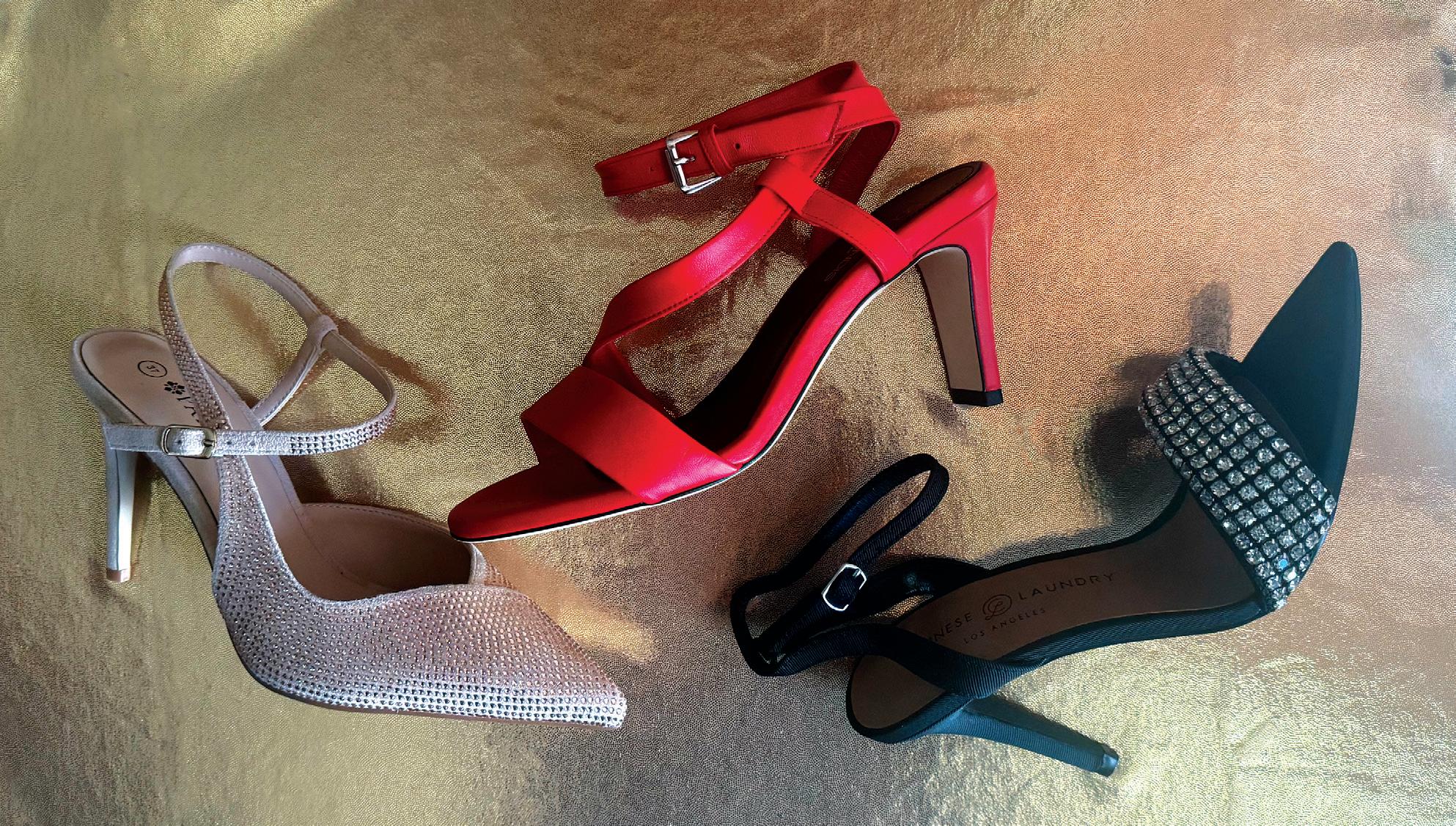
4 Editor’s Note
6 This Just In: Tokyo
66 Trend Spotting: T-straps
69 Trend Spotting: Eco
8 Horse Whisperer
Dansko president Kitty Bolinger is refocusing and reinvigorating the comfort brand by embracing its born-in-a-barn clog roots.
By Greg Dutter
14 Tip Top Hooray
Tip Top Shoes celebrates 85 years of success—and gears up for many more.
By Kathy Passero
54 Party Girls
Raise the roof in bold, pretty pumps that sparkle, shimmer, and walk on the wild side.
By Kiernan McCormick
20 We’ve Got it Covered
24 This Just In: Best Of
34 Letters to You
38 Golden Retail Rules
48 Hot Topics
67 You Look So Good
68 Sound Bites
71 And the Winner Is...
72 Last Word
Where Were You in 1990?
26 David Kahan/Birkenstock
30 David Levy/Hawley Lane Shoes
36 Michael Greenberg/Skechers
42 Larry Schwartz/Aetrex
46 Sam Spears/Ara NA
50 Lori Andre/Lori’s Shoes
51 Bob Mullaney/RG Barry Brands
52 Gary Champion/Clarks
53 Mark Jubelirer/Reyers Shoes
By Greg Dutter
Where Are They Now?
28 Dansko founders Mandy Cabot and Petter Kjellerup
32 Clarks VP of sales Joe Salzano
40 ShoeBuy founder Scott Savitz
44 Ryka founder Sheri Poe
By Greg Dutter
On the cover: Ninety Union rhinestone-accented pumps with padded insoles.
Photography: Trevett McCandliss; styling: Mariah Walker/Art Department; fashion editor: Kiernan McCormick; models: Mary Ocean/Q Model Mgmt., Nathaly Ortiz/ Major Model Mgmt.; hair and makeup: Nevio Ragazzini/Next Artists; photo assistant: Raymond Collette; photo and styling assistant: Nellyfer Espinoza.
EDITORIAL
Greg Dutter
Editorial Director
Nancy Campbell
Trevett McCandliss
Creative Directors
Kiernan McCormick
Fashion Editor
Rosemary O’Connell
Art Director
Kathy Passero Editor at Large
Mariah Walker Style Director
Darby Dutter Contributing Editor
Melodie Jeng
Marcy Swingle
Contributing Photographers
ADVERTISING
Noelle Heffernan
Publisher
Laurie Guptill Production Manager
Mike Hoff Digital Director
Kathy Wenzler Circulation Director
Maria Martucci Office Manager
WAINSCOT MEDIA
Carroll Dowden
Chairman
Mark Dowden President & CEO
Steven J. Resnick Vice President & CFO
Lizette Chin SVP/Group Publisher
OFFICES
ADVERTISING/EDITORIAL
One Maynard Drive
Park Ridge, NJ 07656
Tel: (201) 571-2244
Ads: Noelle.Heffernan@ Wainscotmedia.com
Editorial: Greg.Dutter@ Wainscotmedia.com
CIRCULATION
One Maynard Drive Park Ridge, NJ 07656
Tel: (201) 571-2244
Circ@Wainscotmedia.com


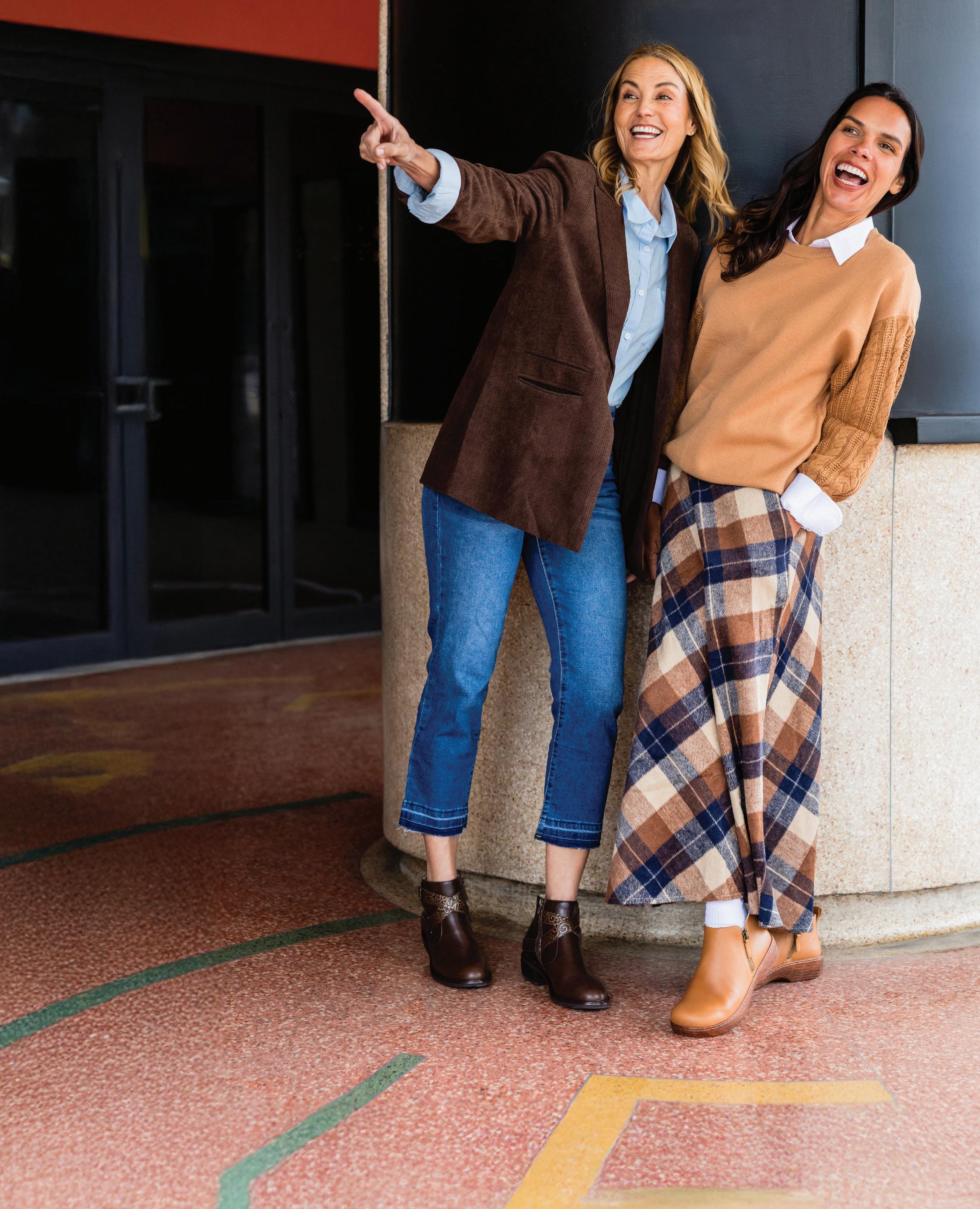


IF SOMEONE HAD TOLD me back in 1990 that 35 years into the future, I’d be on year 32 of working for a trade magazine covering the shoe industry, I’d have said they were nuts. And as anyone who knows me well can attest, there would’ve been a colorful adjective before the last word of that sentence. As my Midwest Nice wife often points out, I grew up in New Jersey, so it’s baked into my DNA.
I started my journalism career at a weekly newspaper for a town of 40,000 in the northern part of my beloved Garden State, dutifully covering crime, politics, community events, and whatever else transpired locally that week. It was fast-paced, sink-orswim journalism—a far better way to learn the ropes than graduate school. Unfortunately, the financial prospects were bleak, so I jumped ship and headed to a better-paying gig at a group of trade magazines in New York later that year. I confess, I didn’t even know what “trade mags” were. But more money, a bigger company, and better career advancement sounded appealing.
Less than a year into bouncing around several of those titles as part of a trainee program, I was offered a full-time position—only to be told a few months later that there was belt tightening and, as the last man hired, I was about to be fired. That was my indoctrination into the uncontrollable ups and downs of the broader economy. I planned a quick (and tempting) pivot: I’d spend the summer as a badge checker at the beach with a shore house buddy. Alas, there was an opening at Sporting Goods Business, so I passed on a season of sun and sand. At SGB, one of my first beats was athletic footwear. This led to my becoming the features editor at Footwear Plus and then its editor-inchief three years later. The rest is shoe industry coverage history—with much more still to come. In my time here, I’ve produced 300-plus issues, written thousands of articles, and worked for three different parent companies—all while covering one industry.

publication. All the knowledge I’ve gained and the countless connections I’ve made create stability and security in an extremely disruptive and unpredictable world. I’ve weathered recessions, wars, 9/11, the Financial Crisis, the death of print, industry consolidation (a.k.a. the Retail Apocalypse), and a pandemic, to site a few of the many blows in my time here. To quote Eddie Vedder in Yellow Ledbetter, oftentimes “I don’t know whether I’m the boxer or the bag.” The latest huge blow is a trade war. Yet, through it all, Footwear Plus has remained not only standing but publishing at the same frequency—in print, no less! Few publications, in consumer or trade, can boast such resiliency. That’s Gen X scrappiness for you. I’m very proud of it. I’m even more appreciative of the loyal support from our industry that has made it possible. Thank you, all.
Admittedly, the world has become more unforgiving, disruptive, and unpredictable of late. Cruel is the new black. Call it cutthroat chic. It feels like the entire globe is now an MMA octagon where only the strongest will survive. There will be blood—lots. So, watch your blindsides. Watch the person staring you in the face even more. Another looming blow: AI. How it will change the world—for good and bad—remains to be seen. If a computer can crank out an entire collection in days that would take designers months, jobs will become obsolete. Likewise, if AI can write faster and better than I can, it might deal me a knockout punch. From what I’ve seen so far, though, I believe we all have a fighting chance.
The proverbial trainer in the corner shouts to keep swinging. And we do. Our 35th anniversary issue is proof of that. It’s chock-full of champion fighters, past and present, not to mention knockout styles. It’s packed with winning techniques and tips from top shoe dogs on what it takes to stay in the ring. They know how to bob and weave with the best of them. They hit hard and fast and, perhaps most critically, they all know how to take a punch. Not a glass jaw among them.
What a long, strange trip it’s been, including more than 40 business trips to Las Vegas. If you had told me in 1990 that Sin City would be the place I’d visit most for work, I’d have said you were #@%* nuts. I’m not the gambling type. That might explain my long tenure with one
I hope you’ll enjoy our latest fight card as much as our team enjoyed putting it together. Heartfelt thanks to the editors, art directors, production staff, and salespeople who’ve fought alongside me over the years. So many talented people have helped Footwear Plus grow from newcomer to contender to veteran fighter. It’s a team effort, and fortunately this magazine has had many champions. See you in the ring.
Greg Dutter Editorial Director
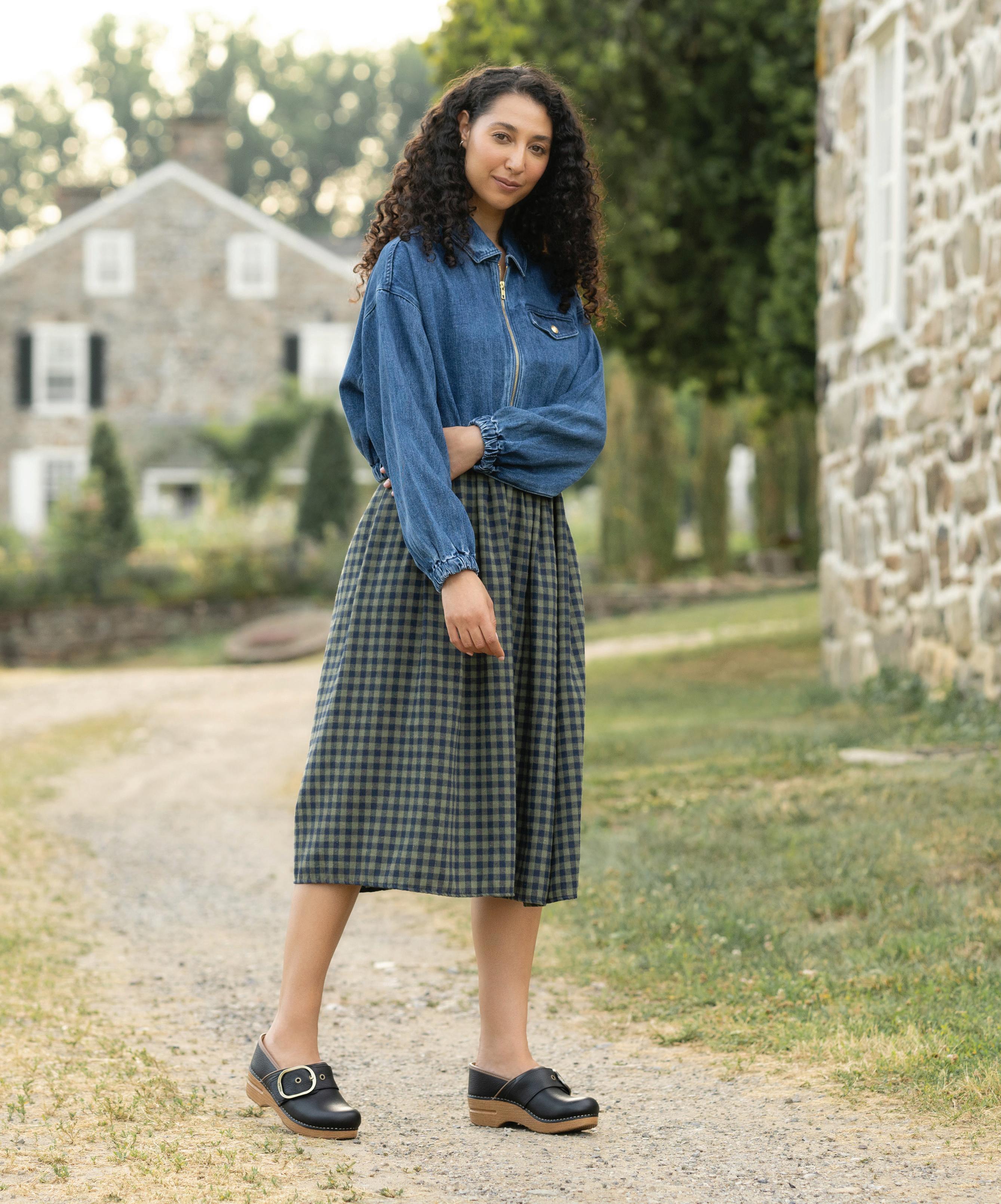
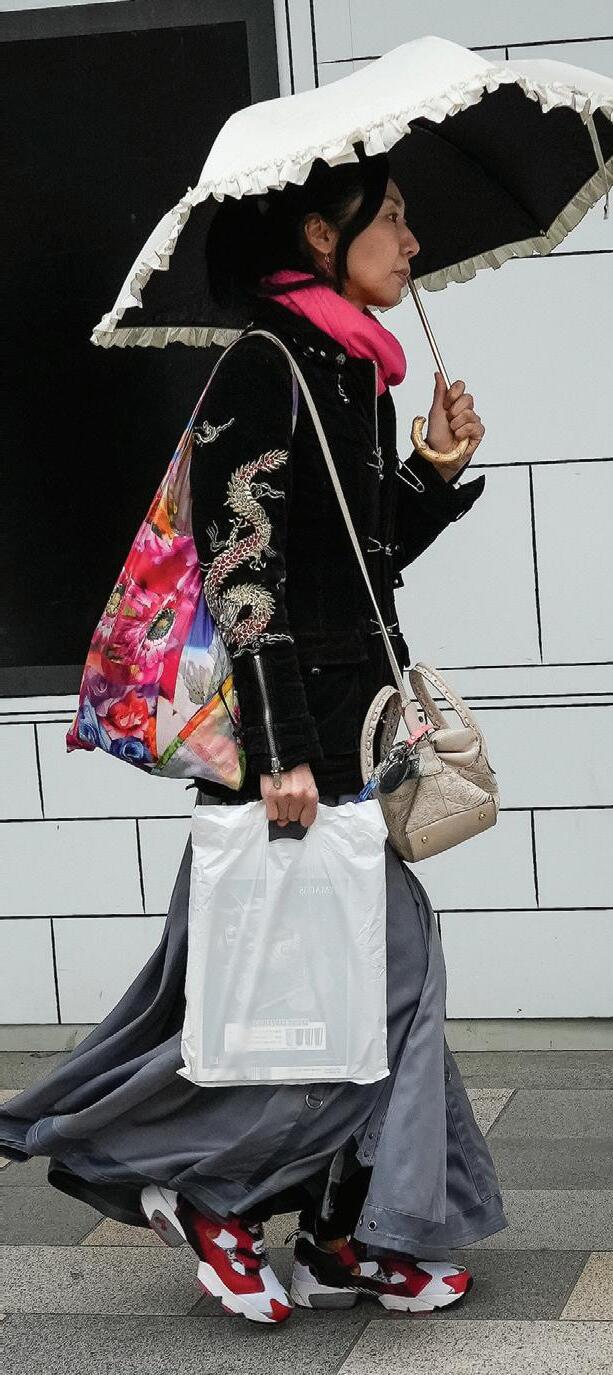


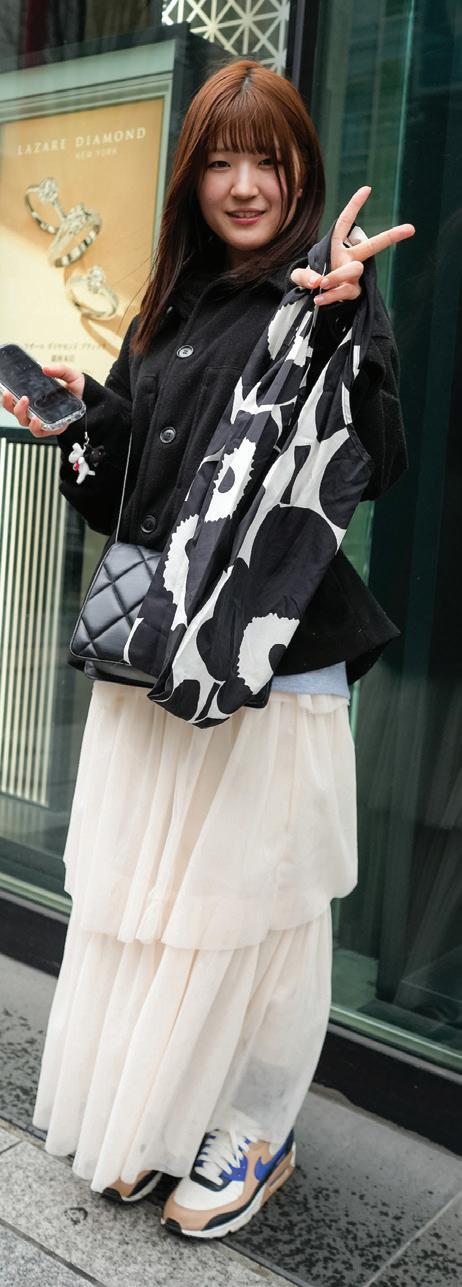









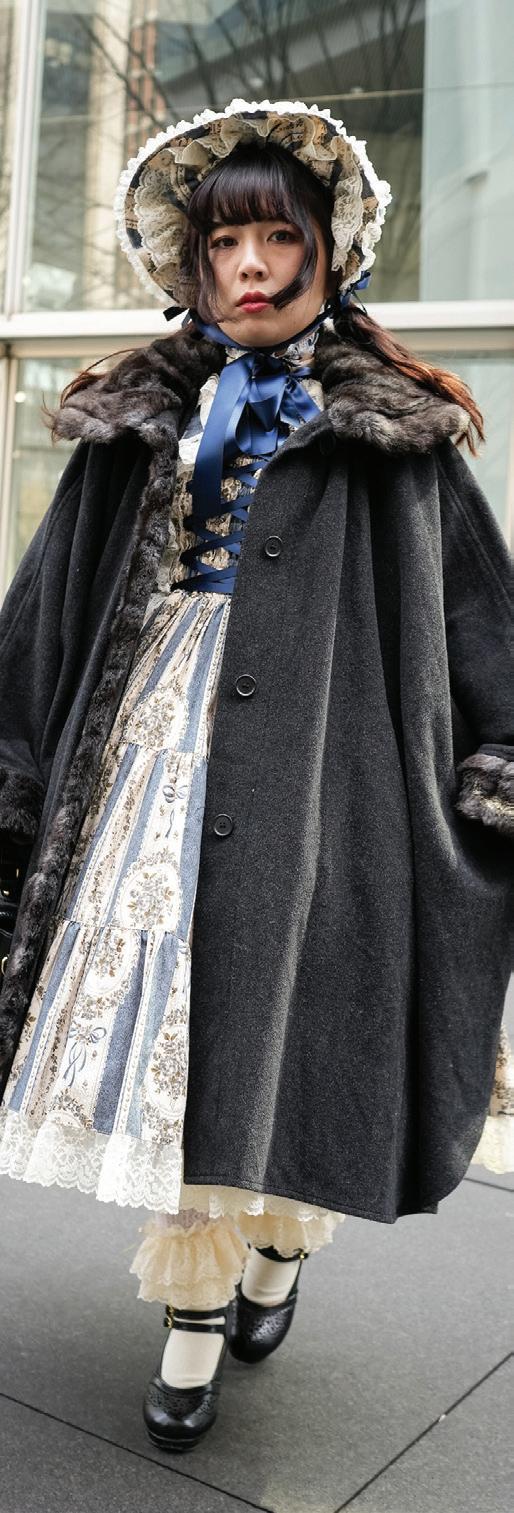

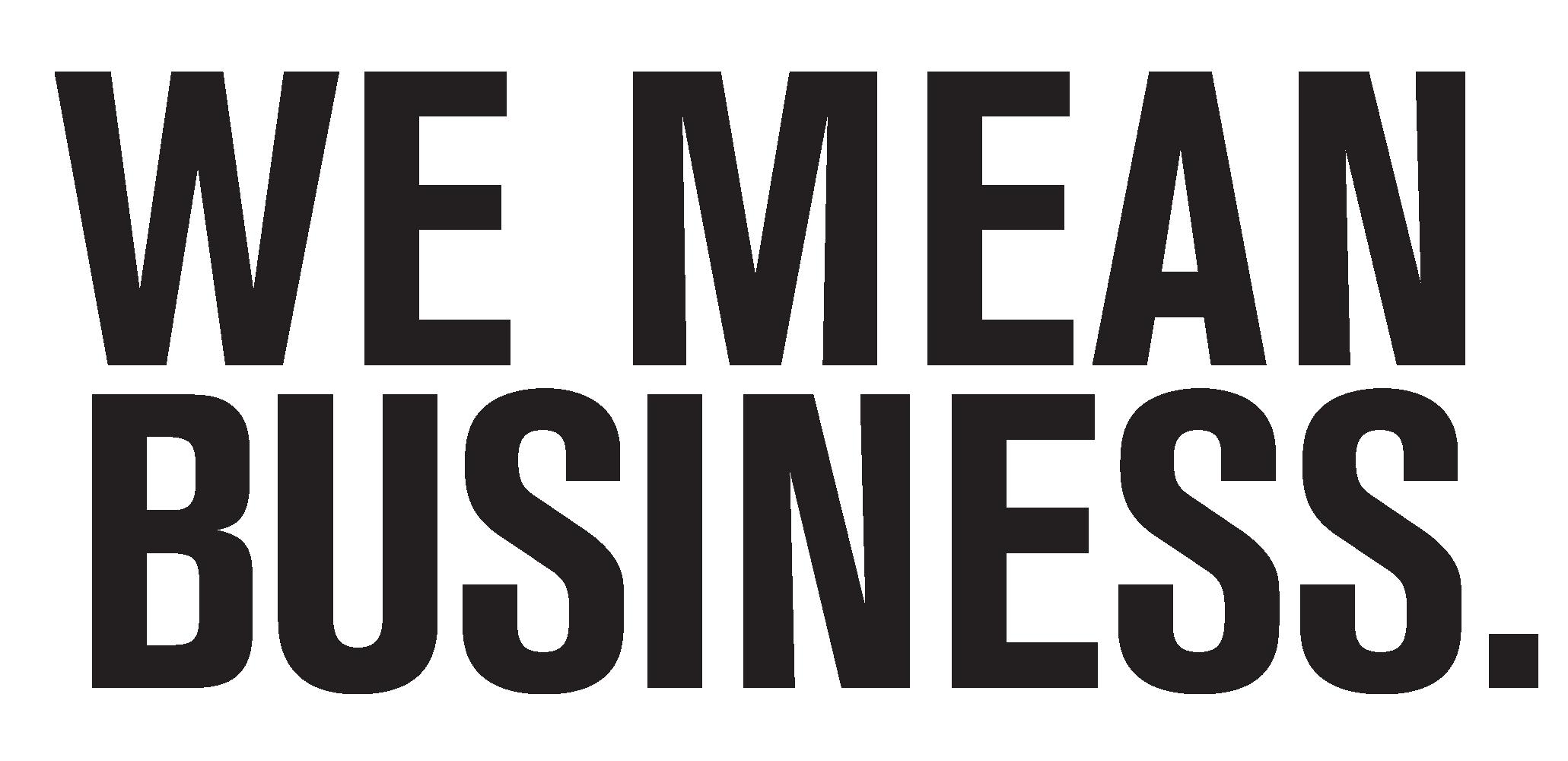

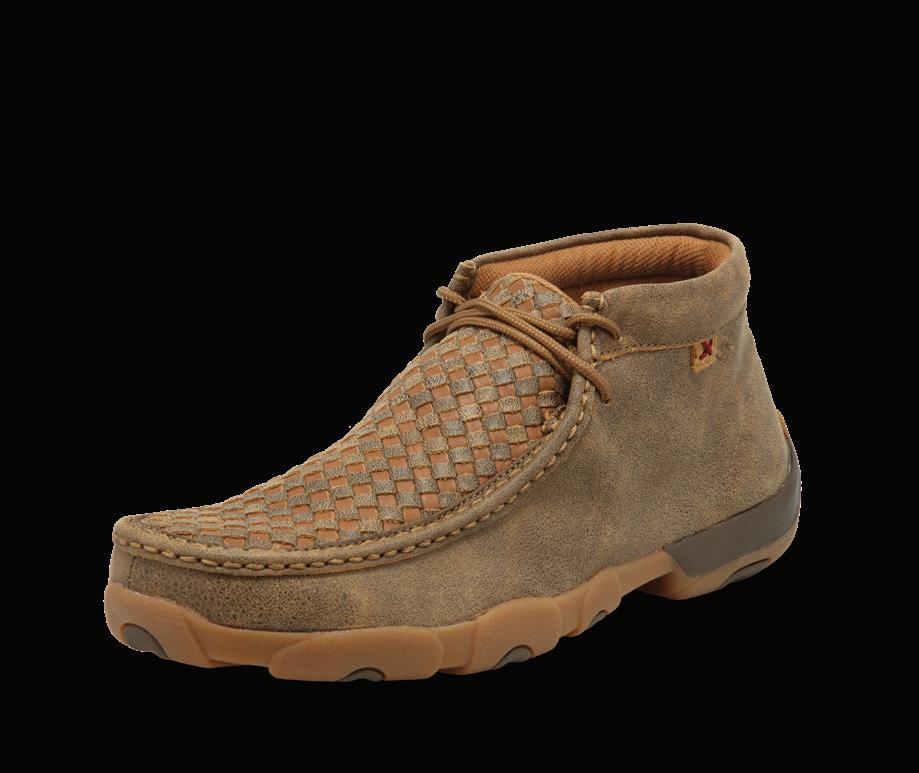

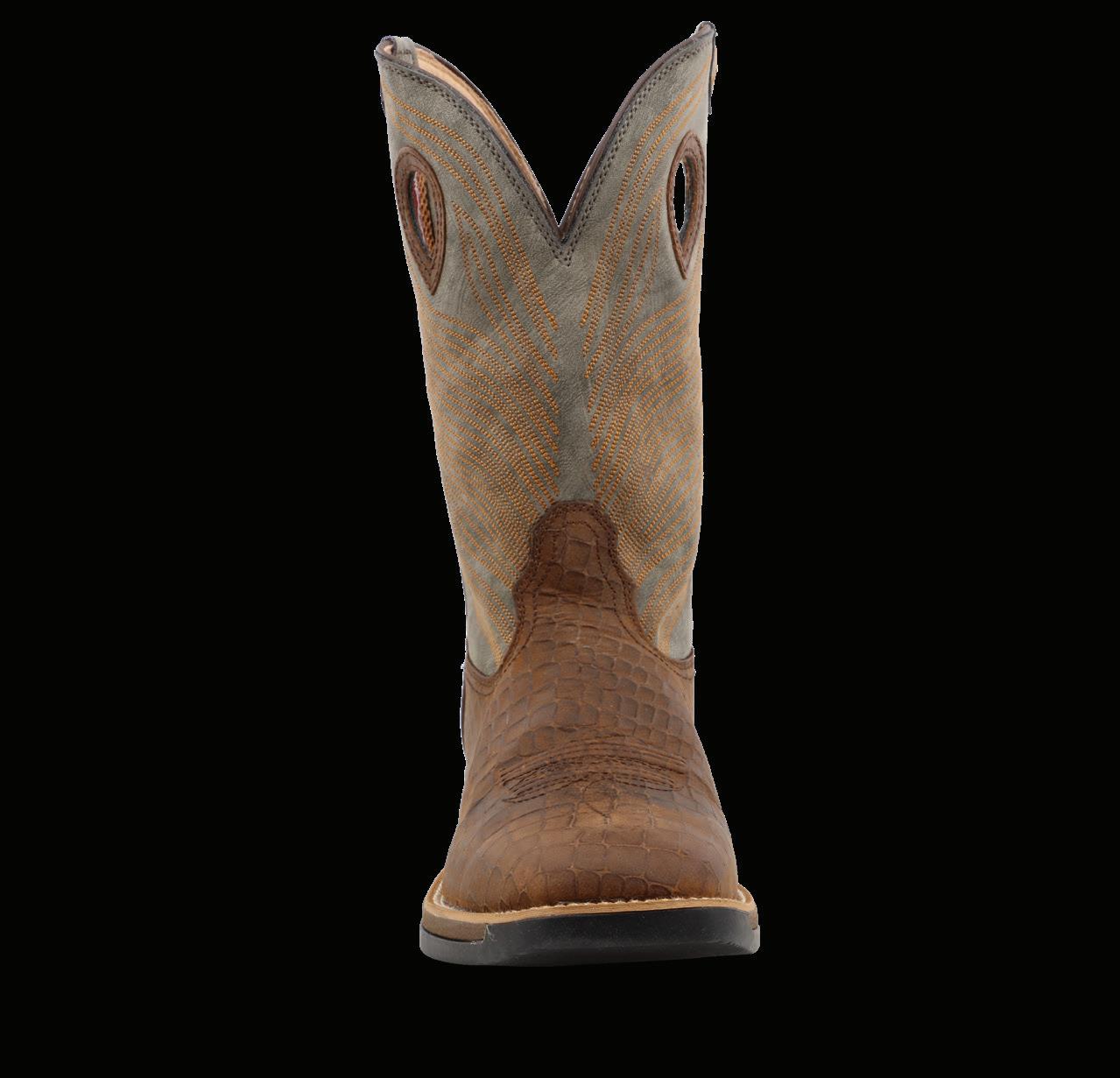

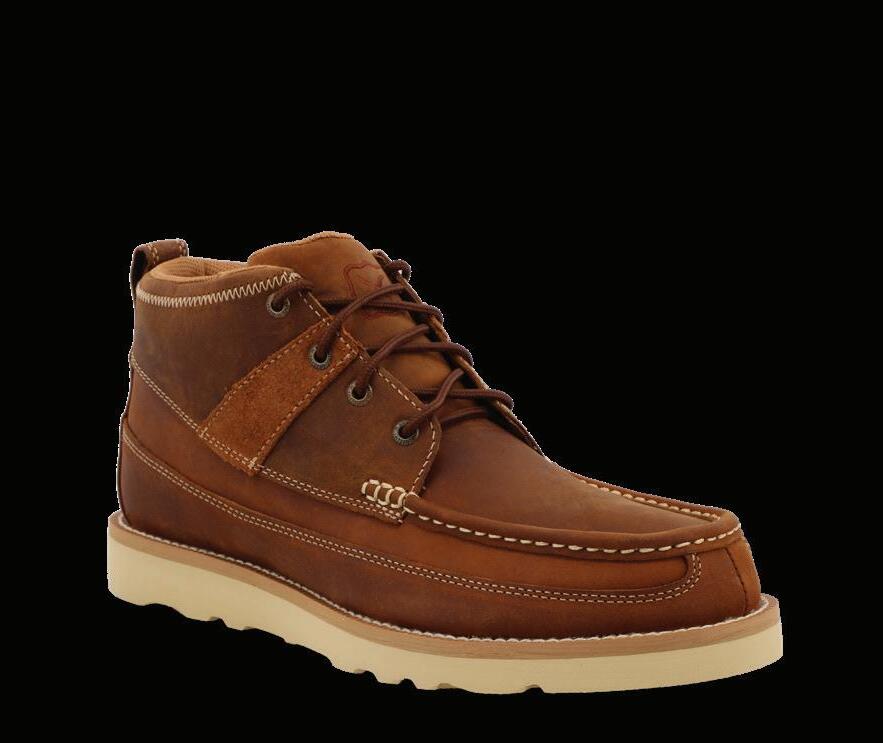
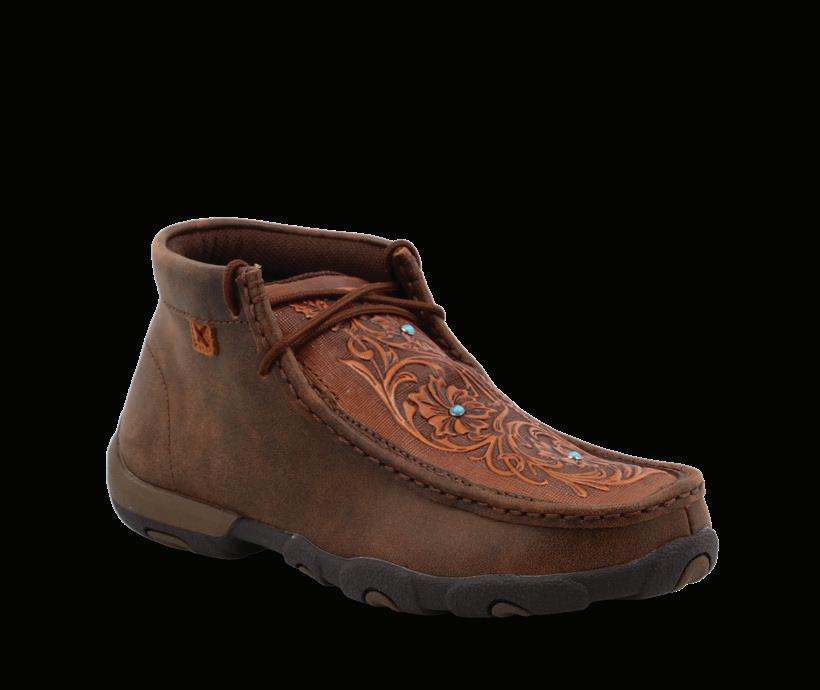
BY GREG DUTTER
Dansko president Kitty Bolinger is refocusing and reinvigorating the comfort brand by embracing its born-in-a-barn clog roots.
DANSKO’S OG STYLE, the Professional clog, was discovered by equestrians Mandy Cabot and Peter Kjellerup in the late ’80s. The duo had recently started a business importing, breeding, and riding dressage horses, and during one of their frequent European trips Cabot spied a closed-back clog that she deemed the “perfect barn shoe” in a store window in her husband’s small hometown in Denmark. (The shoes were easy to get on and off, unlike riding boots.) As Dansko lore goes, the budding entrepreneurs soon began selling the practical and comfortable clogs out of the trunk of their station wagon at equestrian events near their home in Pennsylvania Dutch Country, a.k.a. horse country. Word spread among the horsy set and beyond, and Dansko—a mashup of Danish and “sko,” which means shoe in Danish—officially launched in 1990.
Over the ensuing 35 years, Dansko grew from the “little clog company that could” into a cornerstone comfort lifestyle brand spanning clogs, sandals, boots, and sneakers. Along the way, Dansko became renowned for a trailblazing “do the right thing” corporate culture that has served as a beacon for companies in many industries. The brand embraced sustainability practices long before it was fashionable and built LEED Gold–certified headquarters in West Grove, PA. Similarly, in 2007, Dansko became a founding member of B Corp, an organization of like-minded, for-profit businesses that benchmark their practices against the triple bottom line of people, planet, and profits. Then, in 2012, the company became 100 percent employee-owned though an ESOP (employee stock ownership plan) when the founders decided not to sell Dansko to another footwear company or private equity. (They reportedly turned down a $100 million offer.)
That’s just how Cabot and Kjellerup roll. They are not driven solely by dollars. For starters, they feared that the unique culture they’d painstakingly built would be lost under new ownership. They also wanted to reward their dedicated employees with ownership, believing they would take better care of Dansko over the long term than outsiders. Their gradual exit strategy allowed the founders to hand over the day-to-day reins in 2016, though they
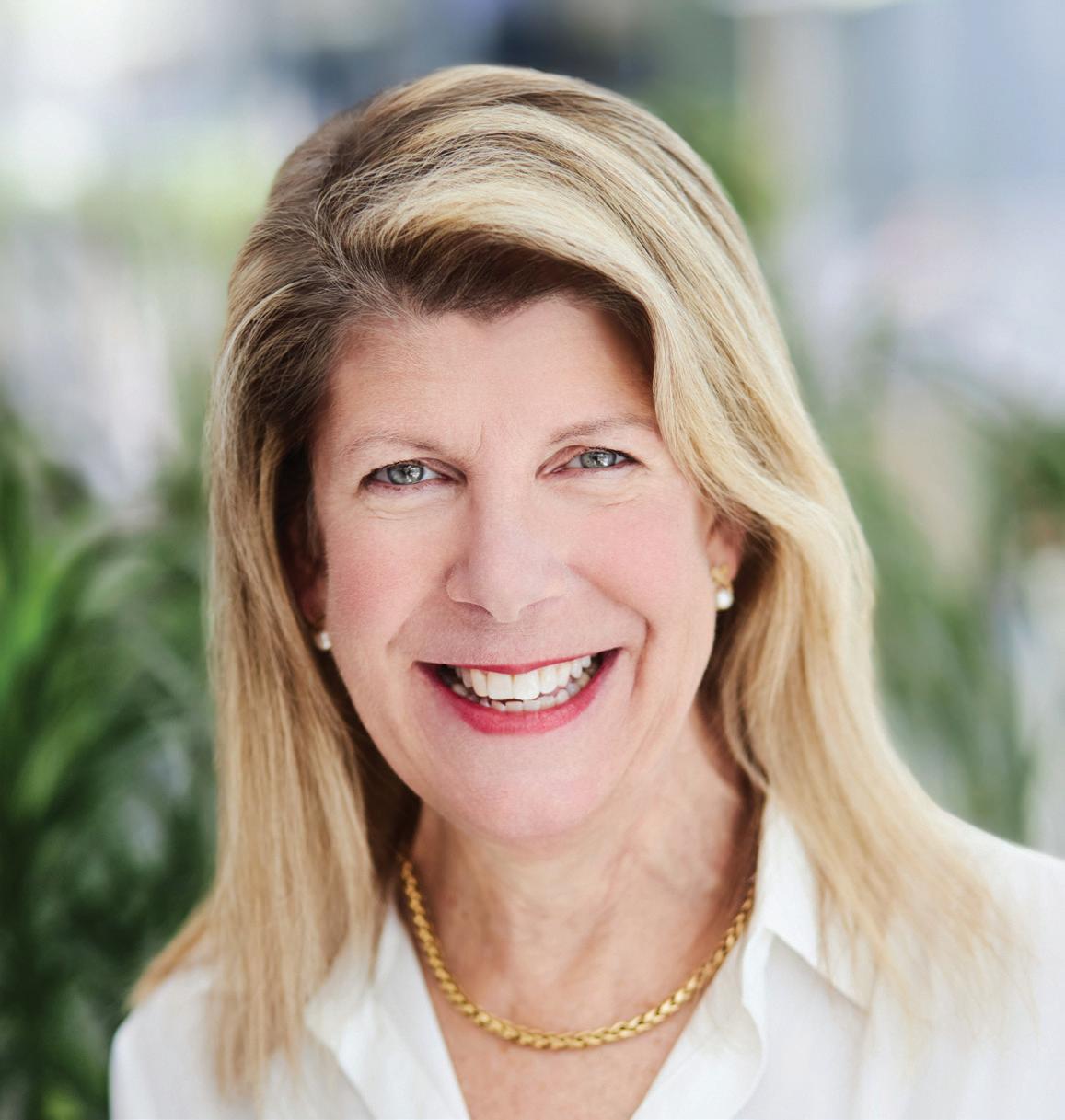
remain on the board. Ever the entrepreneurs, Cabot and Kjellerup launched another startup in 2020 in a new industry in their adopted home country of Belize. (See p. 28)
Dansko’s backstory underscores its greatest strengths: a deep and distinct heritage fueled by an everyone wins (employees, retailers, and consumers)
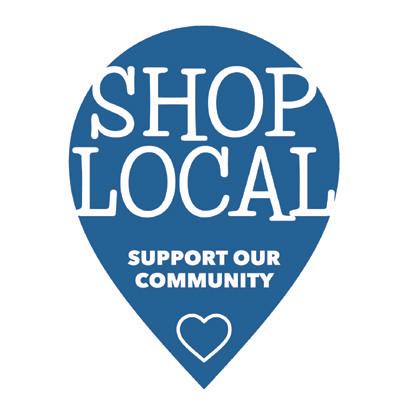


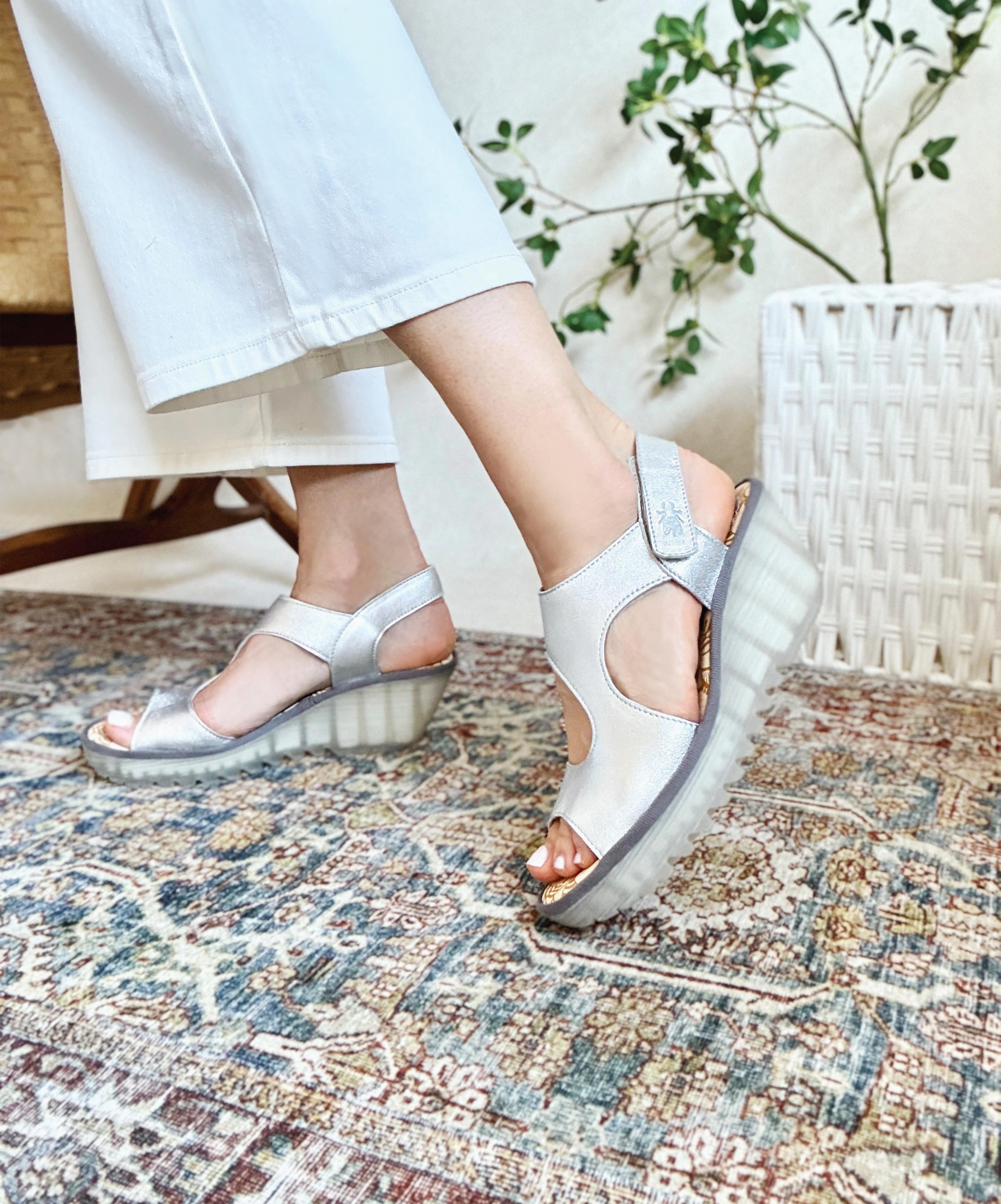
business philosophy. Those pillars, along with quality shoes, built the house of Dansko. But, in recent years, the company left its Pennsylvania horse country roots out of marketing materials and took its eye off the style that made it famous (clogs) while pursuing other categories. Dansko just wasn’t as Dansko-y anymore. Kitty Bolinger, who became president in fall 2023 following a 13-year rise through the company sales ranks, realized that all this had to change.
“Rather than nurture our Professional clog and bring it back to a place where it’s relevant, important, and our icon, we went chasing after other categories and lost sight of who we are as a brand,” Bolinger explains. “Clogs are the foundation of our company, and we have to nurture that above all else.” To drive that point home, Bolinger recently gifted the executive team baseball hats with the word “clogs” emblazoned across the front. “We’re bringing Dansko back to its roots and Mandy’s initial intent: shoes for equestrians, which evolved to shoes for women pursuing meaningful work—be it healthcare, teaching, caregiving, etc.—and being comfortable while doing it,” she says. “That’s who we want to be talking to, because that’s where we came from.”
The conversation began about a year ago by doubling down on reinvigorating Dansko’s origin story. “It’s our point of difference and what makes us special,” Bolinger says, noting that marketing materials now feature a very consistent color palette and tone. “All the imagery is shot within an hour of our headquarters, which is very much horse country, which is where we were born. That’s very intentional: We need to come back to what makes us special.”
Also intentional is the focus on clogs as the gateway into Dansko. For too long, the category had taken a backseat. “We had almost an inferiority complex, as if we had to prove that we’re more than just clogs; we literally said that all the time internally and to buyers,” Bolinger says. “Now we look at it as, we’re clogs and a whole lot more.”
The iconic Professional leads the way to this clogs-first strategy. “We’ve doubled down on how we’re speaking to consumers about that style by introducing some richness and character,” Bolinger says. This includes product introductions that mirror sneaker drops. “We’ve been introducing limited-edition styles, and running out is ok,” the exec says. “We’re on a streak of eight to 10 launches. Early on, we’d sell out in 16 weeks. Now they’re gone in eight weeks.” Bolinger says the launches have generated excitement, immediacy, and energy around the brand. “Retailers can’t just pick up the phone and fill in on these styles like they can with our core basics. If they want to sell these styles, they must commit fast, or the styles
will be gone.” Bolinger is proud to report that sales of the Professional increased last year for the first time in almost a decade.
Dansko isn’t the first brand to lose focus. There’s a graveyard filled with companies that strayed to the point of no return. The first step is realizing it. The next is doing something about it—before it’s too late. Fortunately for Dansko, Bolinger says, consumers’ bond with the brand’s clogs is as strong as ever. In fact, brand studies indicate that 68 percent of the time consumers come to Dansko through that silhouette. Learning this was the “aha/duh” moment for Bolinger: Instead of trying to reach new customers with sneaker offerings, going up against behemoth athletic brands, Dansko needed to reach consumers through clogs. Sneakers are “a much harder ask, whereas we own the clog market. Shoppers are going to buy our sneakers once they’ve fallen in love with our clogs,” Bolinger says. Stats bear this out: “If we send an email featuring a clog, we’ll often sell 50 pairs within 24 hours. If we send an email featuring a sneaker, we’re excited if we sell six pairs.”
Re-embracing a clogs-first approach has cleared the skies for Dansko and served as a reminder that knowing where you come from is often the best way to find out where you want to go. “This whole
process has given us a chance to regroup and focus on what Dansko is great at while still making other styles,” Bolinger says. “We’re very pleased with the progress that we’ve made and the road map it gives us for moving forward.”
What does Dansko turning 35 years old represent to you?
First, I think back to when I turned 35. I had two kids, a good job at Timberland, and felt that I had accomplished a lot. But now I think, man, I was just getting started. I think Dansko is just getting started, too. We’ve accomplished a lot and have been very successful. We’ve also gone about it differently than many of our peers. Mandy and Peter did it right. It’s never been about the money; it’s about what the money can provide to our employees and customers. That’s just one of the many aspects that make Dansko special. We’re also lucky enough to have an icon style and a unique origin story as other points of difference. So I just believe we’re going to keep accomplishing and growing in the years ahead. It’s very exciting. Of course, there will be unforeseen challenges to overcome—like the Financial Crisis and a pandemic. You never know what might happen. But it’s reassuring to know that we’ve overcome many such challenges
What are you reading? Beach reads because I was recently on vacation. Books by Elin Hilderbrand, Emily Henry, and the last was Three Days in June by Anne Tyler. The least angsty reads.
What is inspiring you now? I have a milestone birthday this year, and I’ve been connecting with women I’ve known throughout my life who are at the same place in their lives for various celebrations. It’s very inspiring to hear all about what we’ve done with these 60 years that we’ve been lucky enough to have.
What superpower would you want? Clairvoyance.
Who has had the greatest influence on you? My friends. I’ve been lucky to have them for this long. They continue to be the anchor in all storms.
What keeps you awake at night? Everything. The world. On any given day something occurs that keeps me up pondering what’s next.
What are you most hopeful for?
A return to civility and truth.
What would you like to be
reincarnated as? One of my very spoiled dogs.
What’s on your to do list today? We just closed Spring ’26 about an hour ago, and I’m pulling together where we all landed on that. It’s great.
What would be the title of your life story and who’d play you in the film adaptation? “Family First.” I feel very lucky to come from a wonderful family, and I’m hopefully creating a wonderful family with our five adult children. And I always get told Sandra Bullock or Kristen Wiig would play me in a movie.
CONGRATULATIONS ON 35 YEARS!

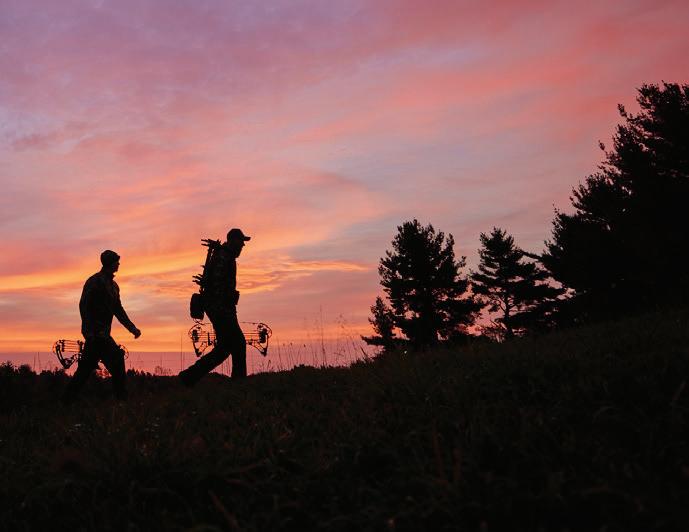
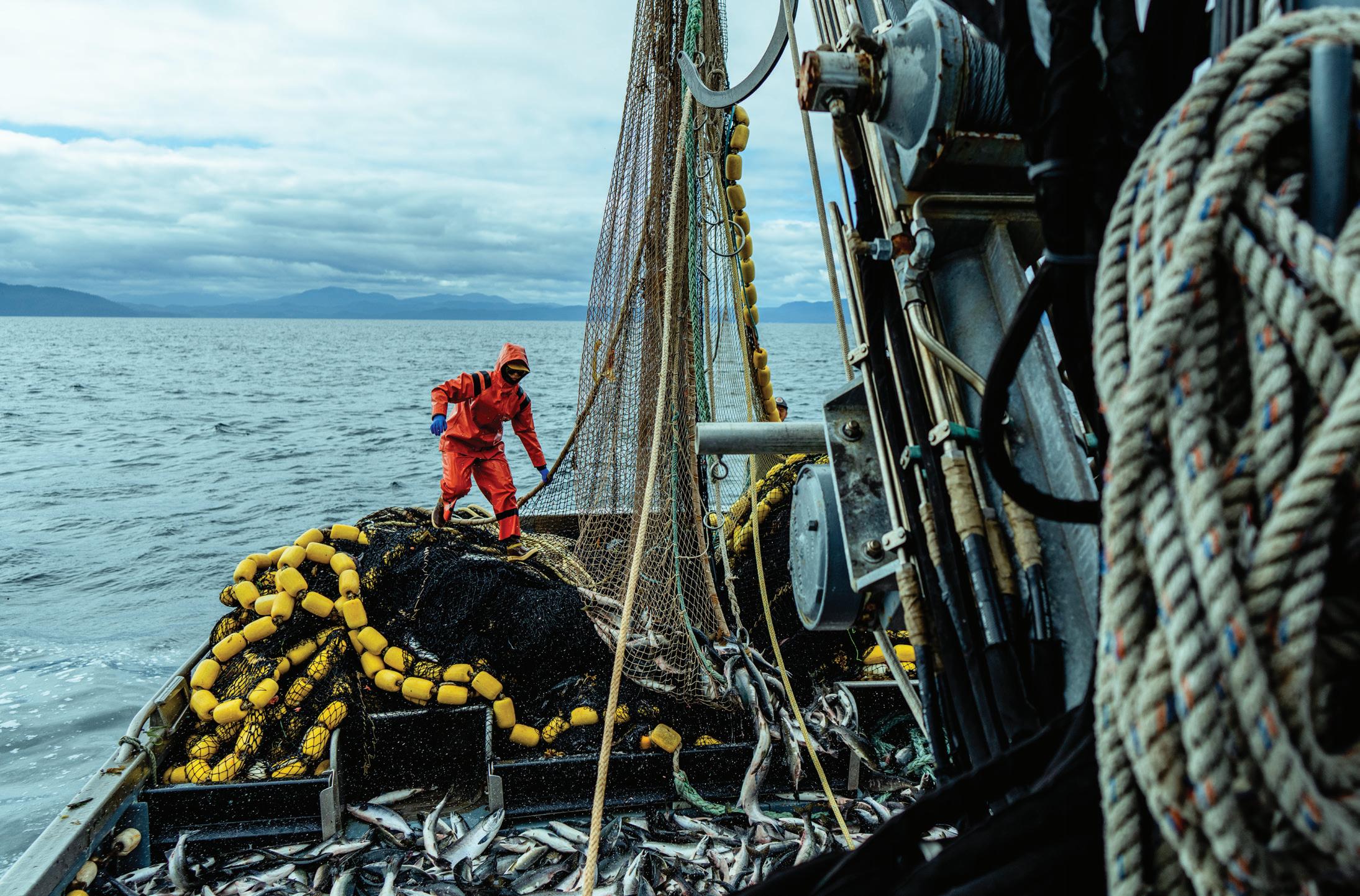

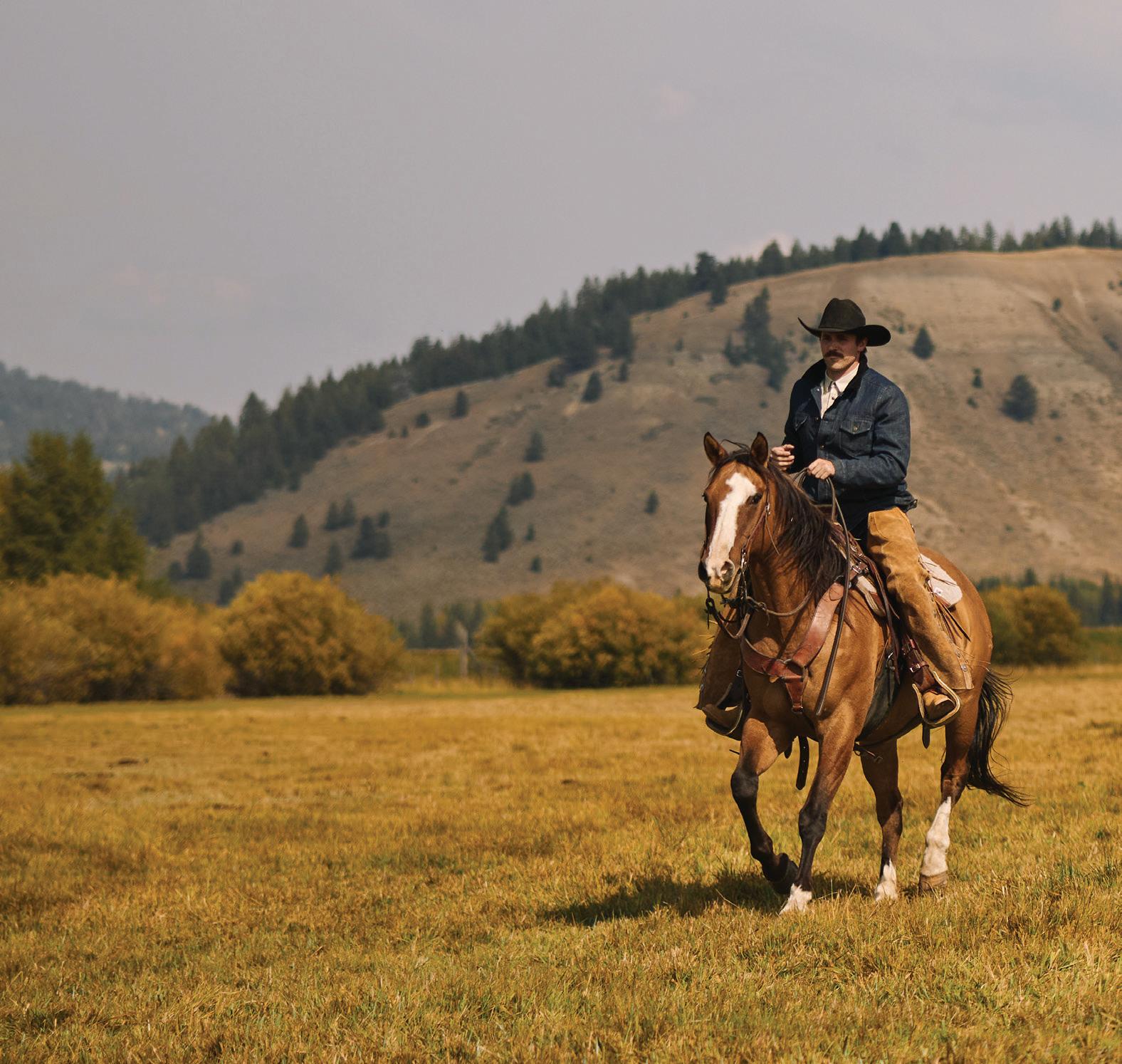
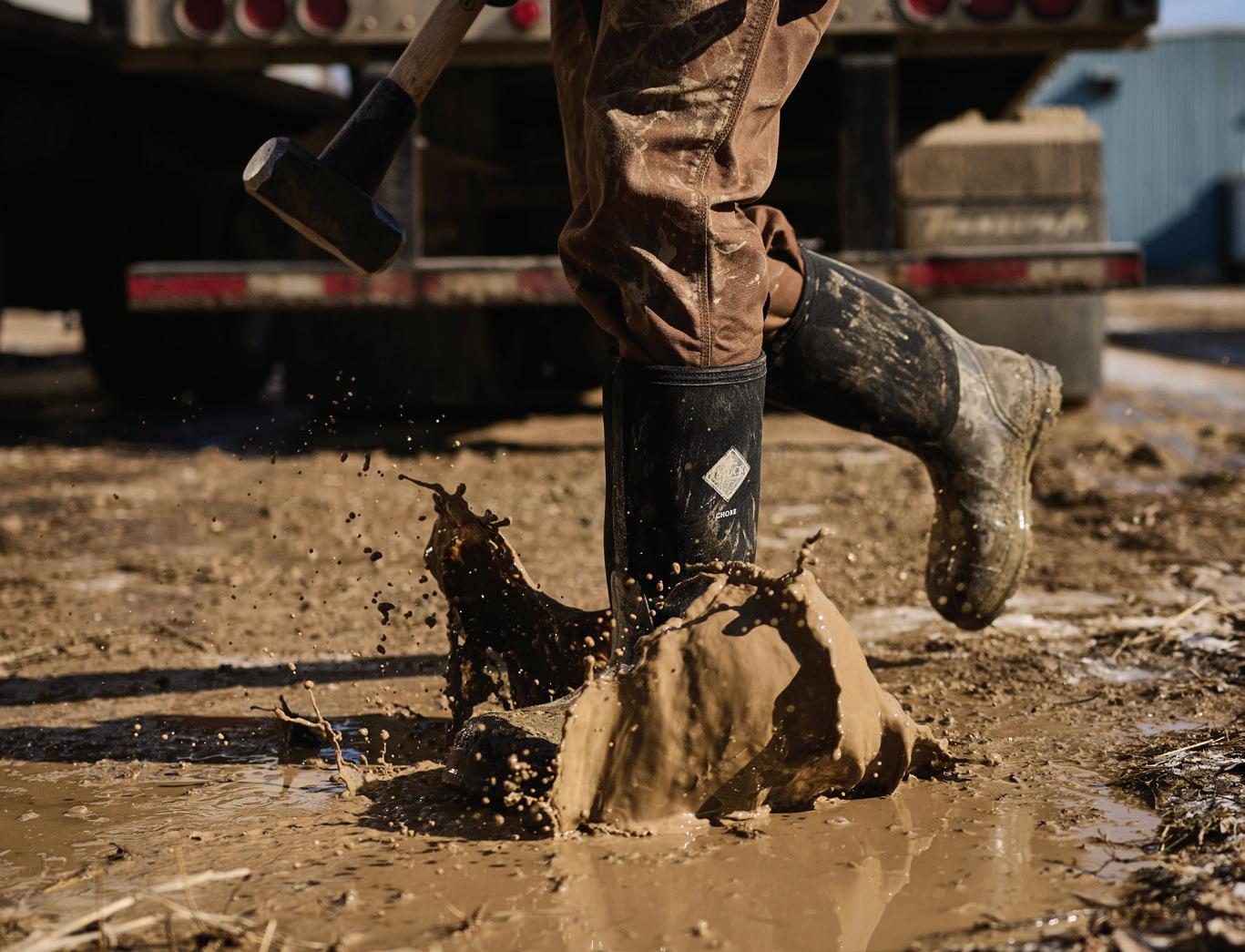
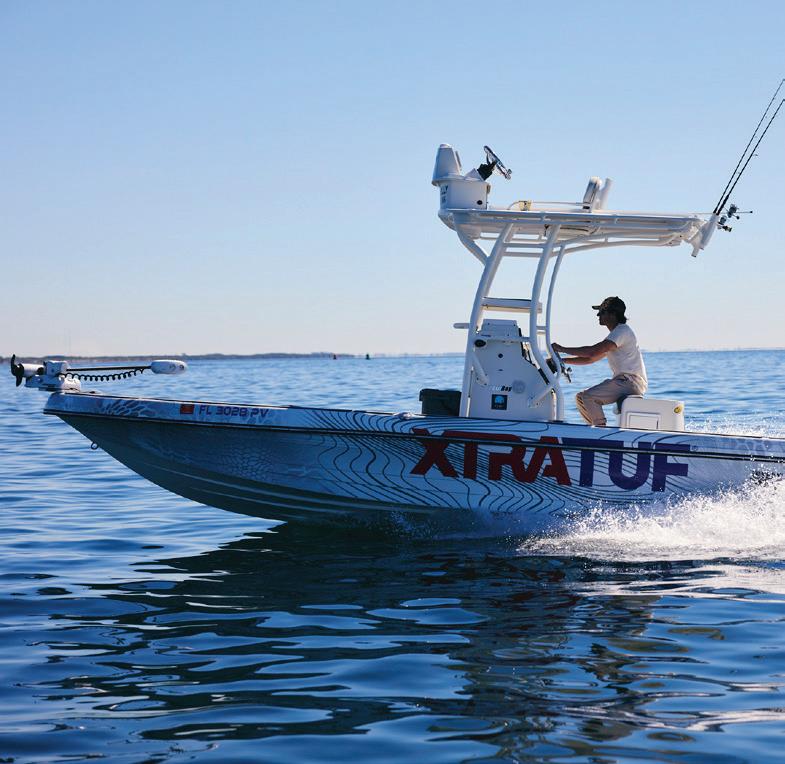




already. Dansko has the resilience to come back. We’re still standing strong. Not a lot of brands can claim that. Many have been acquired and are now part of a big brand house or private equity.
So the future for Dansko is bright?
Absolutely. We just submitted our five-year plan, and we have high singledigit growth planned for each year. It’s conservative and controllable growth. We’re not putting a 25 percent leap in sales on paper. But we still believe we have the potential to grow steadily.
Is being employee-owned advantageous in terms of projecting steady growth?
The advantage is stability. The decisions we make are really longer term and what’s best for Dansko. We don’t have to worry about reacting to quarterly results. We still have board meetings every quarter; there’s accountability. But it’s not a case where we say let’s push out all that product because we’ve got to make a quarter and we’ll see what happens next quarter. Those types of conversations just don’t happen here.
Does it help that employees can put roots down, knowing Dansko won’t be snapped up by private equity or another company at any moment?
Definitely. If we were ever acquired, I’m pretty sure we wouldn’t stay in Southeast Pennsylvania, and Dansko wouldn’t be Dansko anymore. The lives of all these families who work for us would become very different and they certainly wouldn’t be as fortunate as they’ve been. On that note, two members of our executive team relocated from Boston and Columbus when they joined us, and part of the draw was the average long tenure of our employees. We haven’t gone through big rounds of layoffs like many other companies did during Covid.
Now that Dansko has refocused and rediscovered its clog and Pennsylvania horse country roots, what is your outlook for the rest of this year? Our outlook is very positive because the product is checking and because our strategies, including treating the Professional like the icon it is, are working. That’s all well and good, but when retailers call us saying they have to cancel an order because a big part of their local community works for the government or in a Veterans Administration hospital and they’ve just been laid off…All bets are off. For example, one of our retailers in the Dakotas, a military base town where the VA hospital is a major employer, had half of the staff laid off recently. We sold a lot of Dansko clogs to those employees. Our retailer said she can’t bring in anything right now because of those layoffs.
I’m guessing the buzz saw taken to the Department of Education won’t help with Dansko’s strong customer base among teachers. That will have a negative impact on us. Stores based in the DC area are also being impacted because of all the government agency cuts. Our industry and business in general continue to be tough. Looking simply at revenue goals, we eked out the year and were fortunate to give everyone in the organization a bonus. It wasn’t a terrible year, but we’re not throwing huge celebrations. We’ve put some of the things we’d like to do—like making bigger investments in marketing—on hold.
How do you manage your business in the face of such epic and unprecedented disruption?
The most important thing right now is to maintain a very open line of communication with our retailers and figure out how best to support them. While I can’t change what our government decides to do today or next week, open communication enables us to walk through any decisions that might need to be made in response. Communication is essential to help our retailers. Thankfully for us, these aren’t huge numbers of pairs that have been impacted so far.
What is Dansko doing in response to the tariff war?
Like everybody else, there are two things we can do. The first is obvious: work out potential price scenarios. Currently all our production is in Vietnam, and now that there may be 46 percent reciprocal tariffs, in all probability, there will be some price increases. We’re also experiencing price increases from our factory partners because the demand to source in Vietnam is growing. Their workers are demanding higher wages. Different regions of the country have had labor strikes because they know they’ve got more advantageous factories. They’re charging more because of the labor demands, but also because they know they can. So on top of tariff increases, there are those cost increases.
Any reaction from Dansko retailers to these possible price increases?
There have been some questions about price increases. A few even asked if we might be opening a factory in the U.S. I was completely transparent and said no. We will continue to produce in Vietnam for the foreseeable future and our profit margins will shrink. In addition, part of those cost increases will be passed along in the form of higher wholesale prices.
Some think that shoe manufacturing will return to the U.S. on a meaningful scale, even without the necessary infrastructure and trained labor force? It wouldn’t happen overnight or within months. That’s for sure. What can I say? It’s a very interesting time. We’ve been looking for diversification in our sourcing. We started making wood-soled products in Brazil that just hit at retail and are doing very well. We’re also looking at other countries—Spain and Portugal, to name a couple. But as we can all see, we just don’t know what might happen and no country is safe from tariff hikes.
Looking back to when you became president, did you see any of this epic disruption coming? Did you sign up for this?
We’ve been dealing with plenty of disruption in the past five years, be it wars in Ukraine and the Middle East or the fallout from the pandemic. But this feels like déjà vu all over again. That said, I wish it felt like September of 2023.
Times have changed. Speaking of which, it’s been crickets regarding the Earth Day marketing cycle. Are brands afraid of potential backlash? Some probably are. Dansko continues to source the way it always has, which is looking for the most
sustainable and responsible sourcing partners. Doing the right thing in the most sustainable matter is what Dansko is all about. It’s what Mandy and Peter mandated from the beginning. That won’t ever change. But we also learned, about three years ago, that promoting the fact that our molded product is 60 percent or more recycled material didn’t move the needle. That Earth Day tie-in fell on deaf ears. So we’ve pulled back promoting sustainability attributes except on DTC, where we have the space to do that.
Is it harder to be “Dansko” in such a politically charged environment?
I don’t think it’s harder. We just have to be very mindful that there are diverse viewpoints, and buying shoes shouldn’t be a politically based decision. People of all political persuasions are welcome to buy Dansko. But that doesn’t mean we won’t stick to our long-standing values of high product standards and doing the right thing. We just don’t talk about the latter as much, because any negative reactions just aren’t worth it.
Brands have learned from the Bud Light fallout. That said, I think Dansko’s approach isn’t red or blue as much as it’s doing right by 29

In one of Manhattan’s most iconic neighborhoods, one of Manhattan’s most iconic shoe stores is celebrating 85 years of success— and gearing up for many more. By Kathy Passero
AS ANY REAL Upper West Sider can tell you, Tip Top Shoes is a neighborhood institution—as dependable and iconic as nearby Zabar’s and Barney Greengrass, and with product just as fresh and tempting. While countless retailers around it have come and gone, Tip Top has remained a fixture on West 72nd Street decade after decade. Generations have grown up shopping at the store, which turns 85 this year. They’ve passed the tradition along to their children and their grandchildren. They might even have rubbed shoulders with famous Tip Top shoppers like John Lennon, James Gandolfini, Carolyn Kennedy, or a young Marc Jacobs. Or they might have discovered one of the many now-famous brands the retailer helped introduce to American shoppers, from Birkenstock (Tip Top was the German company’s first North American account) to Mephisto, Timberland, Ugg, and Ecco. Late owner Danny Wasserman’s gift for finding the next hot brand in footwear was legendary.
Now stepping into Danny’s role are his children, sibling co-owners Lester and Margot Wasserman, the third generation to run the family business. (The original owners opened the store in 1940 and sold it to Danny’s dad, Max Wasserman, in 1964. Max officially passed it along to Danny in 1980.) Lester and Margot took over after their father passed away last fall, but they’re hardly newbies. They grew up in the store, and the biz is in their blood.
“There’s not one inch of this building that I don’t know. This is my home,” says Lester. “To be a part of this piece of the fabric of New York and the global footwear community is pretty amazing.” Adds Margot, “I was always proud to work at Tip Top, but hearing stories from people in the industry about my dad’s legacy makes me even more proud to do what I do every day.”
In the age of consolidation and ecommerce, how does an old-school, independent sit-and-fit retailer not just survive but thrive? The secret is in the service, selection, and spirit of the team.
“We’re selling a lasting relationship that starts with a friendly face, a smile, a greeting at the door from full-time career salespeople,” says Lester. You’ll never walk into Tip Top and find employees
with their heads down, scrolling through their phones. “We’re looking at you, we’re greeting, we’re seating. We’re able to build sales just by chit chat.” It’s the “lost art” of great salesmanship in action—the kind of approach that fosters real trust and ensures that the customer walks out happy, says Lester. “That’s a highly underrated skill in the modern world,” he adds.
Brand Director Adir Landes, a relative newcomer with just under five years’ tenure at Tip Top, likens the store to the eponymous Boston bar from 1980s sitcom Cheers . Even if everybody doesn’t literally know your name here, they make you feel welcome. “I grew up in the neighborhood, and Tip Top was always a beacon to footwear,” he says. “This was the number one place I wanted to work.”
Of course there’s more to Tip Top’s success than congeniality. Beneath the gregarious vibe is deep expertise. Many staff members have been with the store for decades. “The employees on the floor, behind the scenes, and in management are like family to us,” says Lester. “They’ve been with us longer than my children have been on this earth. I grew up with them. They taught me how to sell shoes.”
Solid business sense, strong relationships with vendors, smart restocking strategies, a sixth sense for what will sell, and a stellar selection are equally key to success at Tip Top as well as its two sister stores, both located in the same block of West 72nd Street—Tip Top Kids, opened in 1987 and now one of the last dedicated children’s shoe stores in Manhattan, and West NYC, which started as a sneaker wall at Tip Top and evolved into a standalone boutique with limited-edition sneakers, streetwear, and hats in 2007. (See sidebar, p. 20.)

“We like to say if we don’t have it, you probably don’t need it,” says Adir of the selection at the three stores. “We’ve got shoes for literally every occasion, from this week’s Jordan drop at West to the most comfortable shoes for your grandma at Tip Top.”
What’s more, “We pride ourselves on measuring feet, especially in the kids’ store,” says Margot. “We really take the time to get everyone the proper fit, which is unique in this day and age.”
That’s a crucial point of difference in an era where “shoes are available just about anywhere,” says Lester. “You can buy shoes on your iPhone at 3 in the morning, but folks want to come to Tip Top for the nostalgic, old-school play that
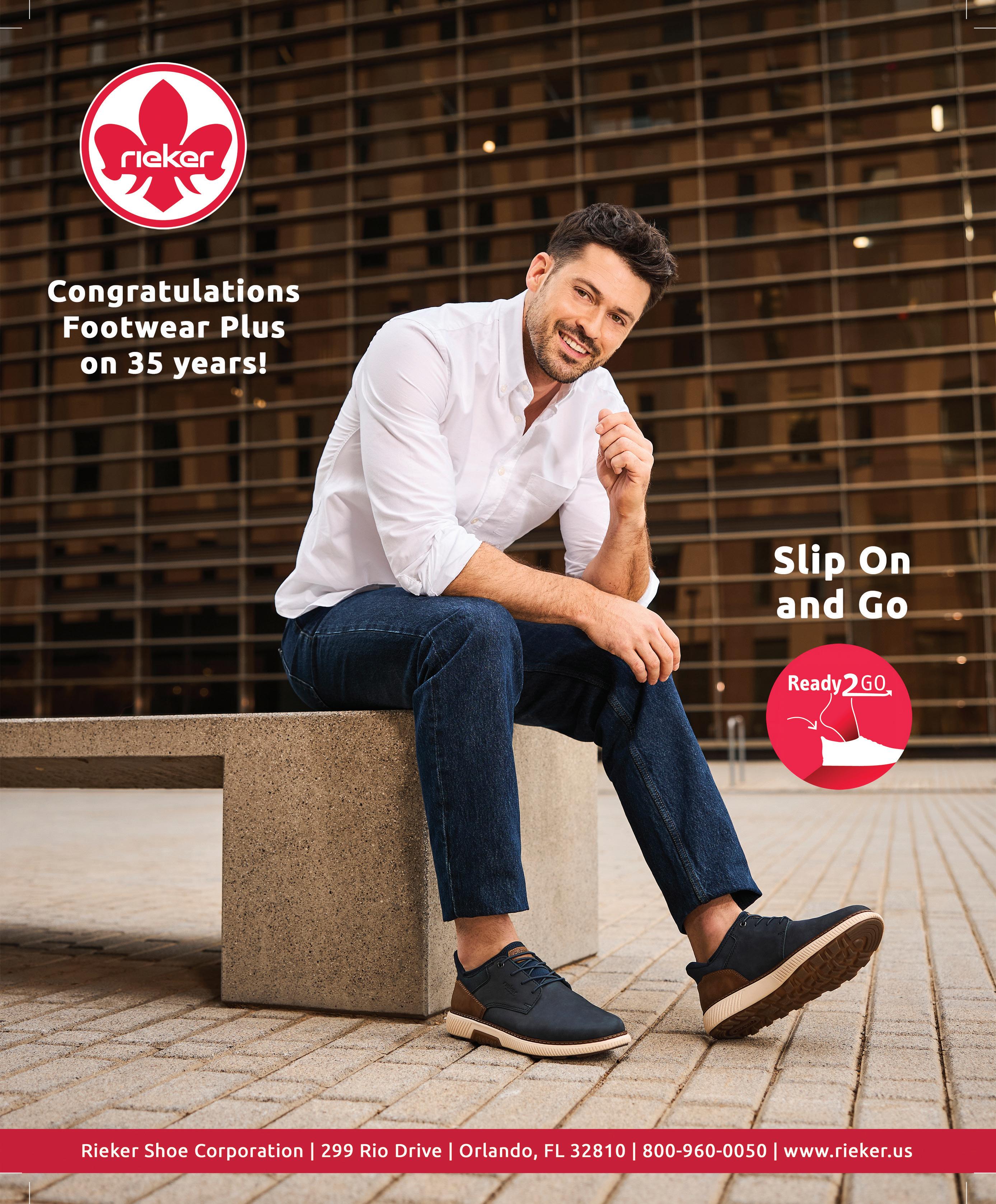
involves a shoehorn, a fitting stool, a Brannock Device, [and the ability to] touch and feel the products.”
Although Tip Top’s core shopper is 45-plus and female (the selection skews 70 percent women’s), “our customer base is diverse,” says Lester. That’s why “we carry so many brands. We’re always asking how new product—from mundane to eccentric—could have a space in one of our doors.”
From mundane to eccentric. Upper West Siders themselves have been described in similar terms. Labeled everything from bohemians to curmudgeons, they’re a notoriously eclectic bunch, but Tip Top wouldn’t have it any other way. “Upper West Siders are some of the best, most entertaining customers out there,” Lester says. “When you sit face to face at the stool with some of these people, you learn plenty. There are laughs and great stories shared. It’s quite an experience.”
Most shoppers come in with “a good sense of style and an idea of what they’re looking for, but they trust us to find the best, most comfortable version of it for them,” Lester explains.
Through the decades, Tip Top has weathered its share of challenges, from the blackout of 1977 to the dark days following 9/11 to the Covid pandemic to the most formidable challenge to date—the shift to online shopping.
“Online you win when you have the right size and nobody else does, or when the analytics favor you. That’s all great stuff, and it’s part of the jigsaw puzzle, but our brick-and-mortar stores win with human interaction,” Lester says. If the advent of ecommerce has a silver lining, it’s that “Our customer service game got even better,” he says. “Each customer got more important. The best customer is always the one in front of you.”
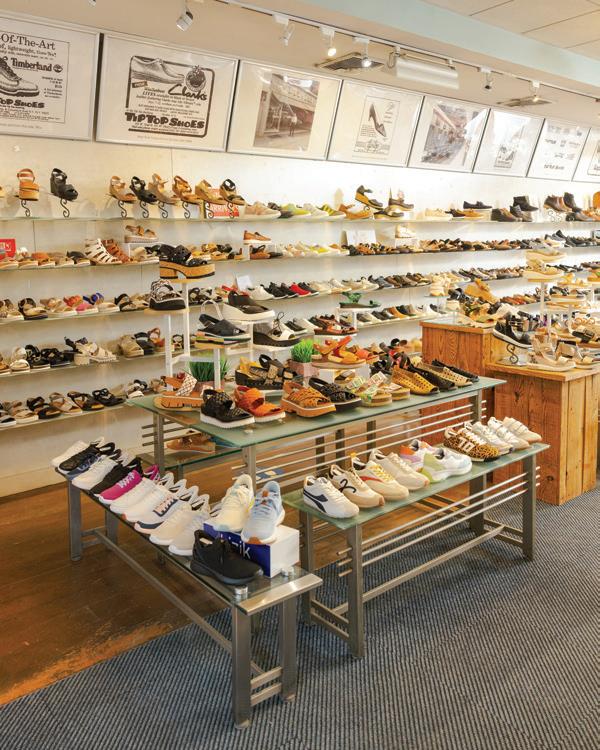
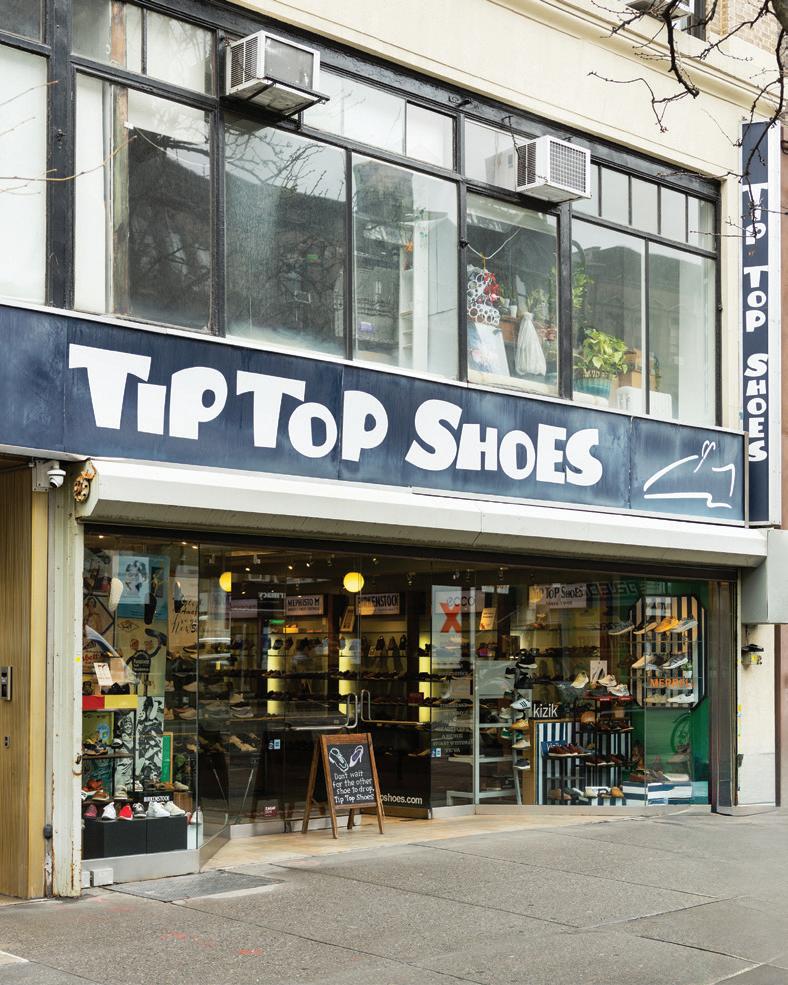
To keep up with a changing shopping paradigm, Tip Top’s own ecommerce business has grown, too. (Their website now offers same-day delivery Monday through Friday for online orders placed before 1 p.m.) So has the retailer’s social media presence. Tip Top Shoes, Tip Top Kids, and West NYC have a presence on Instagram and Facebook, with a unique voice and style curated for each platform and store. “Everything’s got to be treated
“We’re standing on the shoulders of those who came before us, and that’s been a very effective technique.”
—Lester Wasserman
with respect and created for its own platform,” Adir explains.
The team learned through trial and error that “Shoes styled well on a nice colored background don’t necessarily move the needle,” Lester says. For the flagship’s socials, “Adir had an idea to take a more behind-the-scenes look at a shoe store, where we’re doing things like a day in the life at Tip Top Shoes. You see real people in a real store that looks like a lot of fun.”
“We have a different strategy at West,” Adir adds. “There, we like to do more viral stunt videos for product launches. For example, we did a project with Adidas that dropped in December at West. One of our videos got 1.3 million views—far more plays than that week’s Jordan launch even though we have about 50,000 followers and they’re in the 20 million range.”
Tip Top Shoes also made its first foray into local TV ads in spring 2024. “We

Clockwise from top: The latest looks at Tip Top Shoes are juxtaposed with vintage ads honoring the store’s 85-year history; sandals have long been a staple for the footwear retailer that introduced Birkenstock to the U.S.; the flagship has been a fixture on West 72nd Street for eight and a half decades.
West NYC started small—as a sneaker wall within Tip Top Shoes. From those humble roots, it grew into a nearby standalone store that carries limited-edition sneakers and apparel and doubles as a sort of lab for Tip Top, where the team can give new brands and bold looks a trial run.
“West is how we get smart,” says Brand Director Adir Landes, who likens the store’s genesis to Concepts’ early days in the back of Boston’s The Tannery. “We’re able to pick up trends faster than other brown shoe retailers because we’re getting the first crack at West…it gives us a lot of opportunity to do fun projects, and it gives us entrée to brands we otherwise wouldn’t be able to do business with.”
Meanwhile, the broader selection at flagship Tip Top Shoes allows West NYC to carry brands many sneaker boutiques don’t, including Keen, Teva, On, and Birkenstock—and that makes for a more eclectic and interesting selection, Adir says. This, combined with sneakerhead culture’s expansion beyond its guys-only roots, may be contributing to the store’s appeal with an increasingly broad range of shoppers. “Our women’s business at West has grown significantly in the past couple of years,” says Adir. He theorizes that the recent influx of younger residents to the Upper West Side is bringing more women in the door.
West NYC also carries its own clothing line and has collaborated on special projects with powerhouse brands like Nike, New Balance, and Saucony. —K.P.
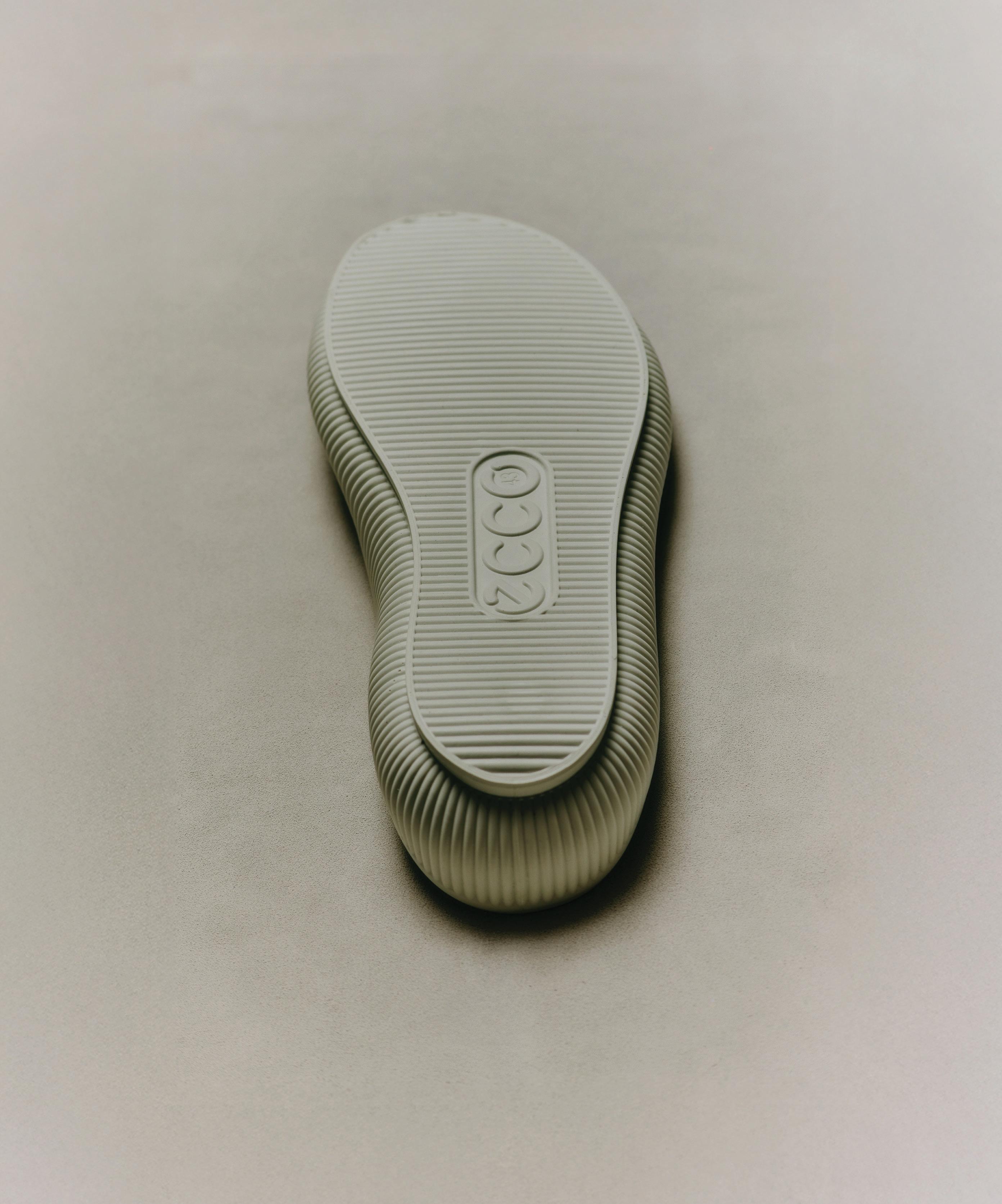
AN INCREDIBLE JOURNEY.
THE TEAM AT ECCO CONGRATULATES BOTH FOOTWEAR PLUS ON 35 REMARKABLE YEARS & TIP TOP SHOES ON 85 YEARS OF BUSINESS. HERE’S TO MANY MORE SUCCESSFUL YEARS TO COME!
use voiceover [talent] with a very thick New York accent. It gives the commercials a very upbeat, fun, New York kind of feel,” says Adir. “We’ve seen a great response to that.”
The commercials, which sometimes promote the store and sometimes promote specific brands it carries, were a longtime dream for Lester, who holds a special place in his heart for the iconic local commercials he grew up with, like Roscoe the Bedbug Dog from Bell Environmental Services. In New York, “Everyone knows Roscoe. Everyone should know Tip Top Shoes,” he says. “You have to let people know you exist.” To that end, increased TV advertising is one of his top goals for 2025.
Tip Top’s delivery system for self-promotion has changed over the years, from promoting Birkenstock as “the ugly shoe that makes you smile” in Rolling Stone and The Village Voice in the 1960s, to running onscreen ads in local movie theaters, to taking out regular space in The New York Times, the erstwhile gold standard for retail advertising, in Lester’s opinion. More recently Google ads have been a “tremendous success,” but with shortcomings: It’s hard to know what sold and who bought, and it’s even harder to convey personality through a Google ad, he says.
This year naturally calls for more fanfare. Tip Top plans to celebrate its big birthday through special events and collabs with brands including Kizik, Clarks, and Adidas. (See sidebar below.) The store will also ring in the fall with a Birkenstock Oktoberfest event featuring a live band, bratwurst, cider, beer, and pretzels to pay tribute to the brand’s heritage and the Wasserman family’s roots. “Danny spoke fluent German, and the Upper West Side used to be full of German Jews, so we feel it’s fitting to serve German fare that day,” says Lester.
Though losing their dad was a tremendous blow, Margot and Lester feel well-equipped to take up the mantle. Both siblings spent years watching Danny at work and learning from the master. “To have him as my teacher and mentor was the honor of a lifetime. I’d like to think he’s still keeping a watchful eye over what we’re doing,” says Lester. “We’re not trying to shake things up too much. We’re standing on the shoulders of those who came before us, and that’s been a very effective technique. Things are still moving in the right direction. We had a great 2024…and we’re still very bullish on 2025.”
Since the Covid pandemic, Tip Top’s fastest-growing segment has been athletic. The barefoot trend is on the uptick too, with Vibram FiveFingers and Lems selling well. Slippers continue to be popular too, like Ugg and Haflinger. Still, the daily quest to find the next hot style continues. “We’re always asking, ‘What’s the next lightning in a bottle?’” says Lester.
To mark Tip Top’s 85th anniversary, the retailer is partnering with Adidas on two special commemorative shoes—a Men’s SL 72 RS and a Women’s Handball Spezial.
The men’s sneaker (retail $120) pays tribute to Tip Top’s sit-and-fit brown shoe heritage with perforations evocative of wingtip oxfords on a rich chocolate suede and nylon upper with a leather tongue. Printed on the insole is the phrase “Your feet are in good hands,” Tip Top’s tagline. In each
Margot and Lester Wasserman share these five retail rules to live by, passed along by their late, legendary father, Danny Wasserman.
1) Pay more attention to what people are trying on—and especially what they’re taking to the cash register—than to what’s on the walls and shelves.
2) Date every document. Notes are useless if you don’t remember when you wrote them.
3) Get to work early. Walk the floor, see what’s missing from the display, get a clear frame of mind, and get your game face on before the crew comes in.
4) Make reordering a priority. Go through your weekly selling report on Monday and make sure you’re reordering shoes, socks, accessories, etc. so you’ll always have a full inventory. “Danny bought shoes every single day,” says Margot. “We still buy three to four times a week.”
5) Stock European sizes. It increases the turn of inventory exponentially and boosts profits for everyone. “That’s one of the things Danny tried to teach the industry because he wanted to see it healthy. He wanted to see everybody persevere and win,” says Lester.
Though brother and sister have contrasting work styles, they complement each other. “I’m very organized,” says Margot, who spent eight years working for Ralph Lauren before joining the family business in 2012. “You can ask me for an email from 2004, and it’s filed away. I keep everybody rolling, make all the appointments for the shoe shows, keep all my orders together, and never mess up a style number.”
Lester is the opposite. “Our dad would sometimes write purchase orders down on napkins. If you ever saw his office, it looked like the FBI had flipped it. I definitely took that from him,” he says. “My strong suit is dealing with people. I’m able to take a bad situation and turn it upside down and get a laugh and a good Google review out of a customer.”
The latest generation of Wassermans say they’re proud to be writing a new chapter in Tip Top’s ongoing story. “It wasn’t always a bowl of cherries, but part of the sweetness is that we weathered the storms,” Lester says. “We were there for the ups and downs, and somehow we managed to persevere, come out on top, and find the next hot products. Being a part of that timehonored legacy is truly an unbelievable honor.” •
box is a postcard with a painting of long-time owner Danny Wasserman, who passed away last fall.
The women’s sneaker (retail $130) is multicolor bouclé, a nod to women’s power suits of past eras, and is adorned with the phrase “West Side Best Side” on the heel tabs. “The women’s shoe is a little more fashion-forward, a little more vibrant and colorful, whereas the men’s is more of a nod to Tip Top’s history. It isn’t brown, but it gives that heritage authentic vintage look. We’re
super excited about both of them,” says Brand Director Adir Landes. “I’ve never seen another brown shoe retailer have a sneaker launched strictly to themselves.
Both shoes launched at the end of April in store and online at West NYC and Tip Top Shoes. A portion of the proceeds will be donated to Two Ten Foundation.
Look for a Clarks Wallabee collaboration toward the end of 2025. —K.P.
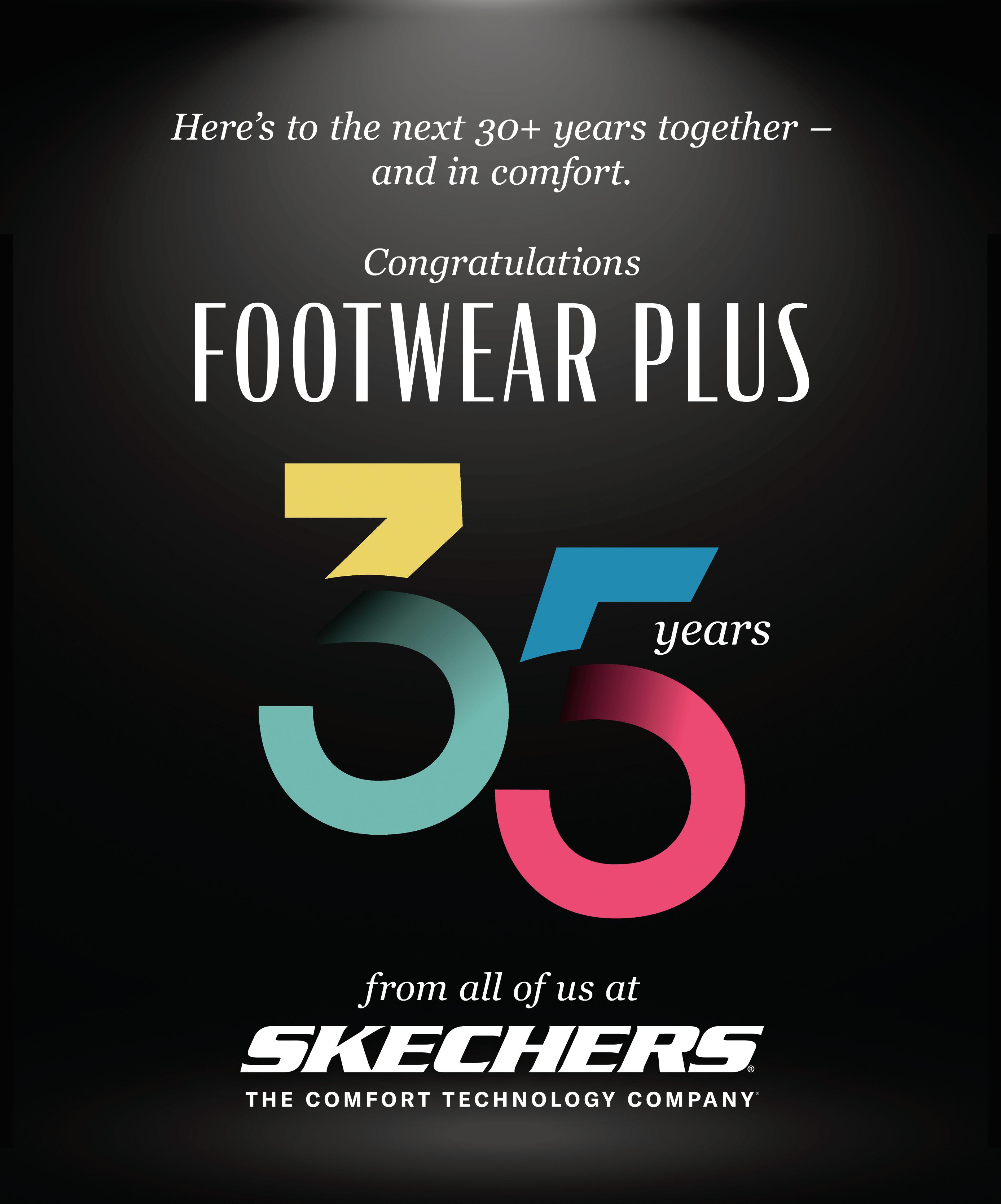

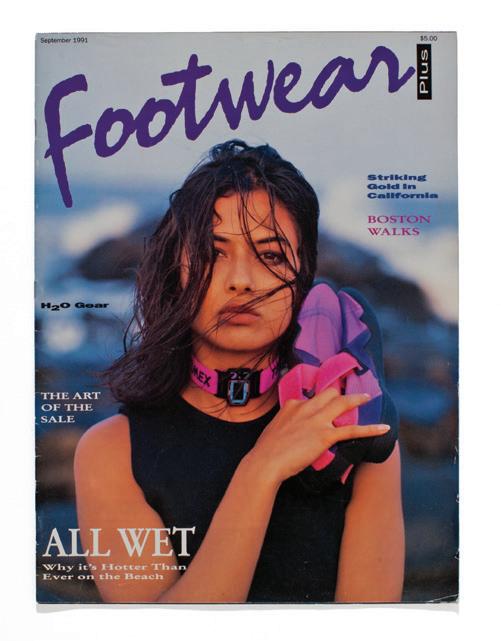

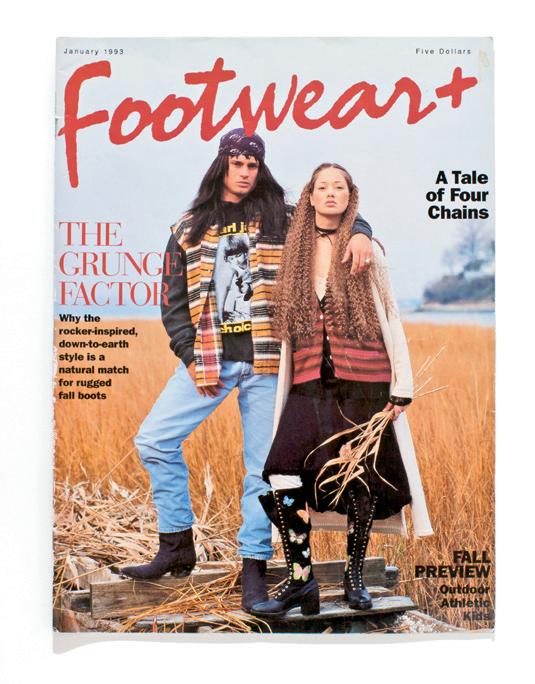

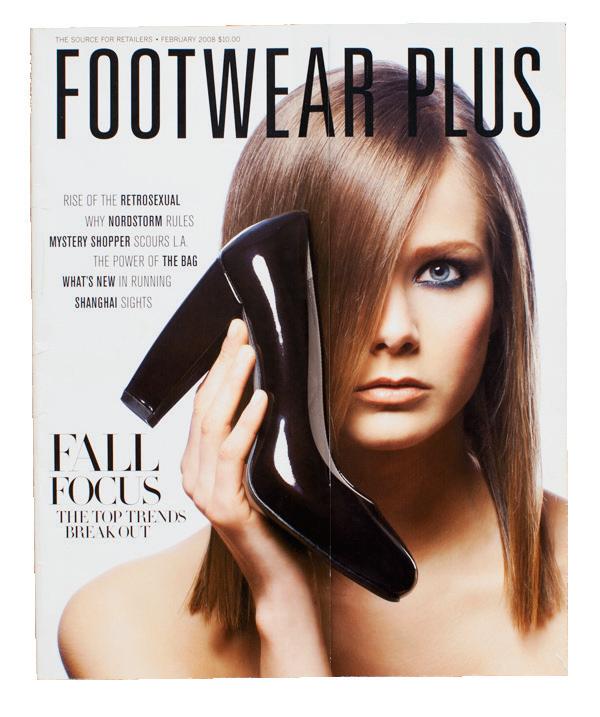
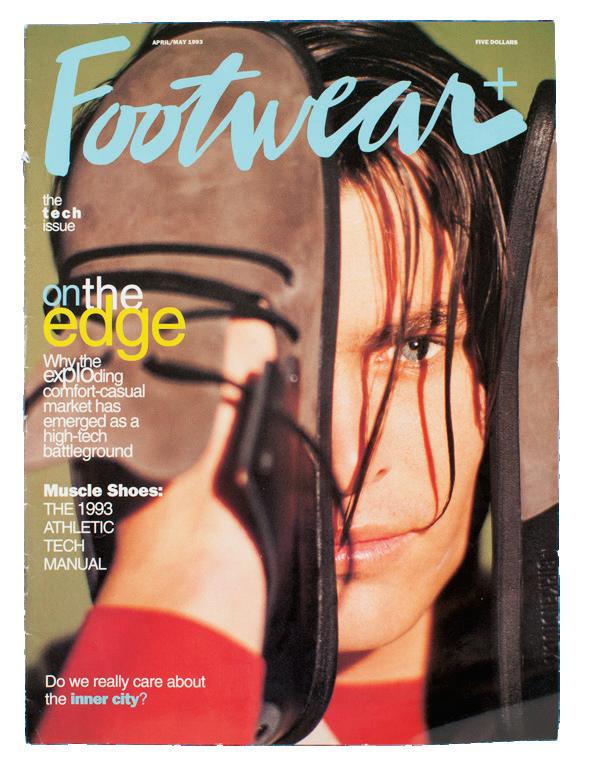

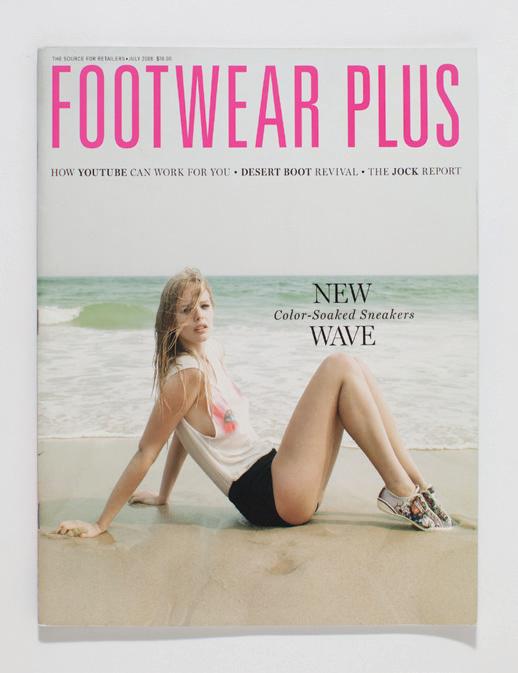

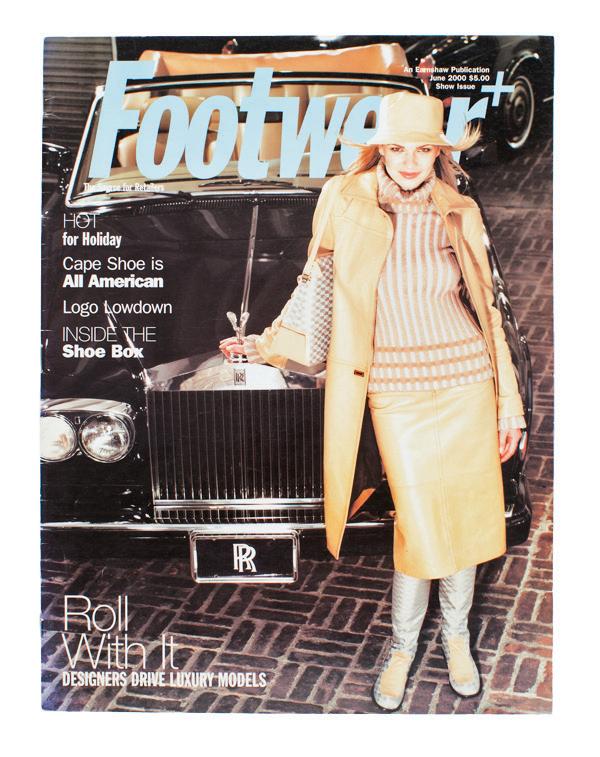
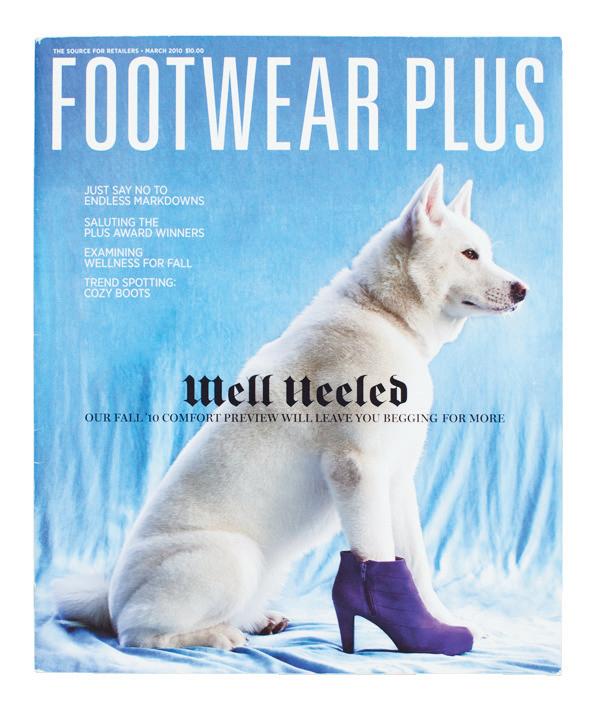
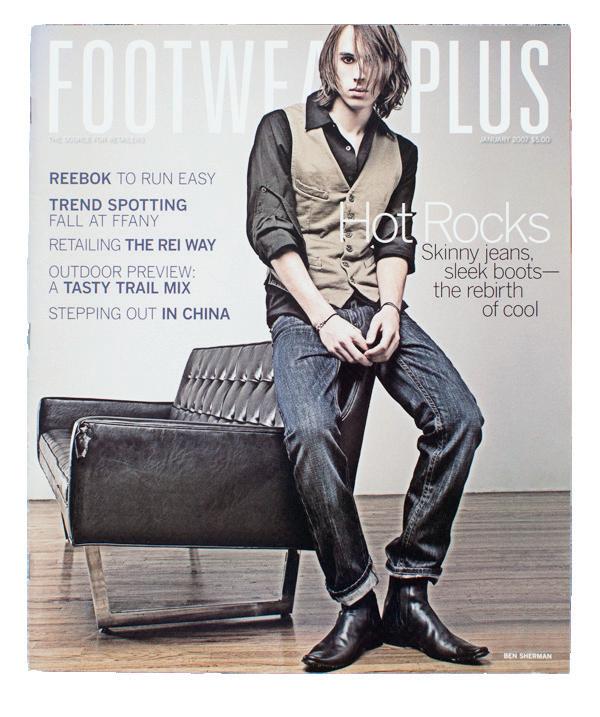
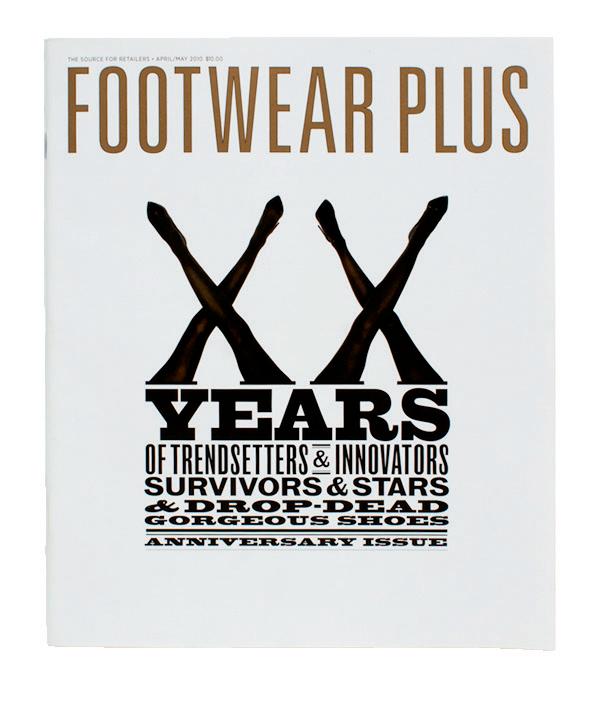

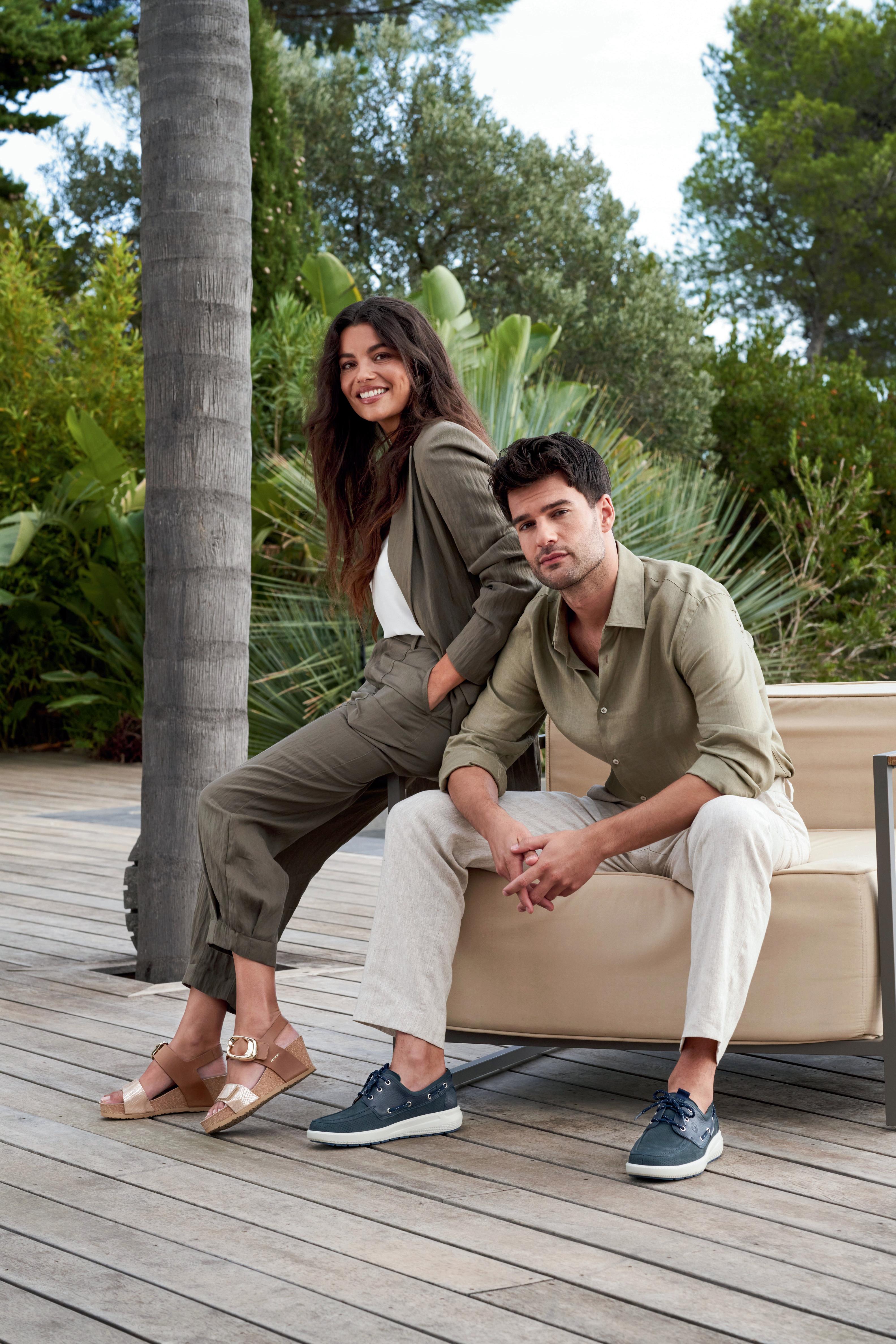



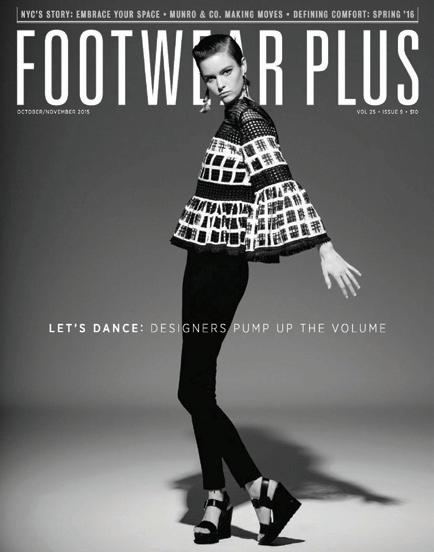
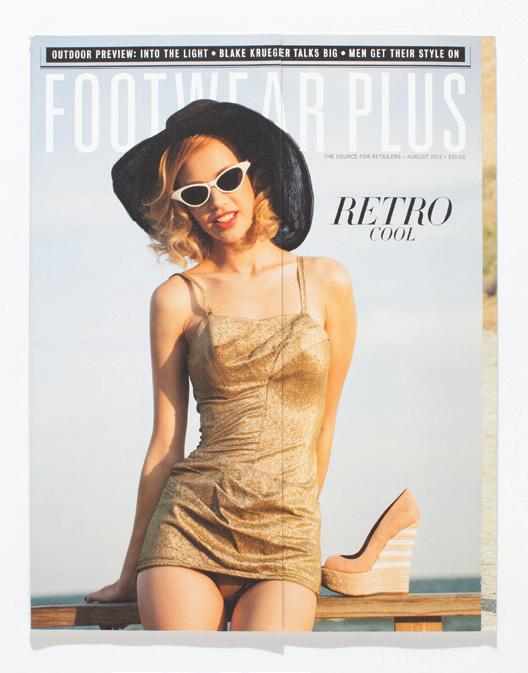
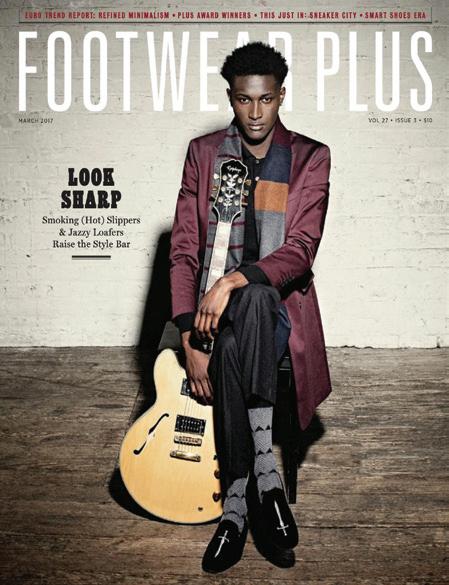
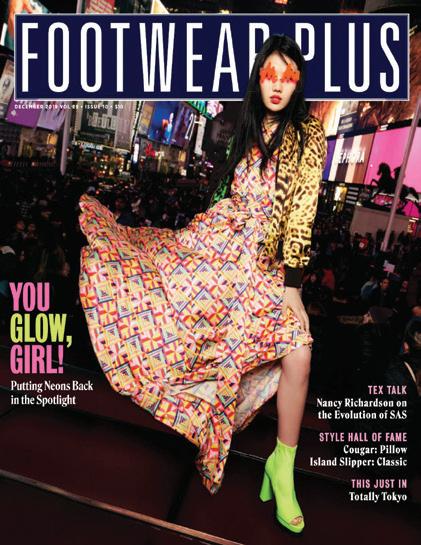
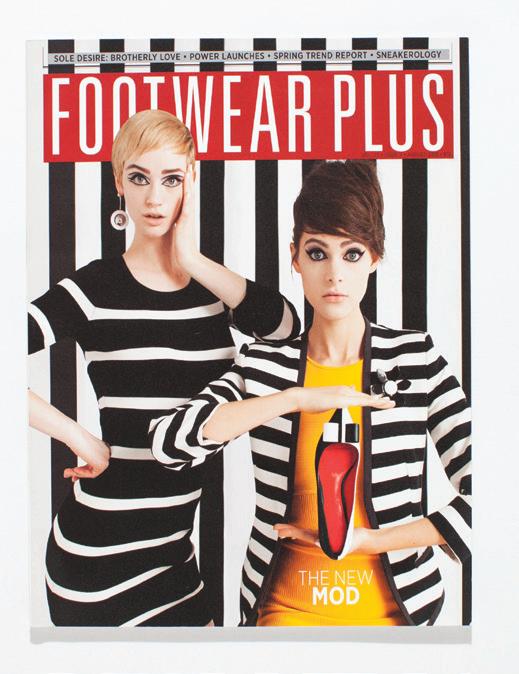
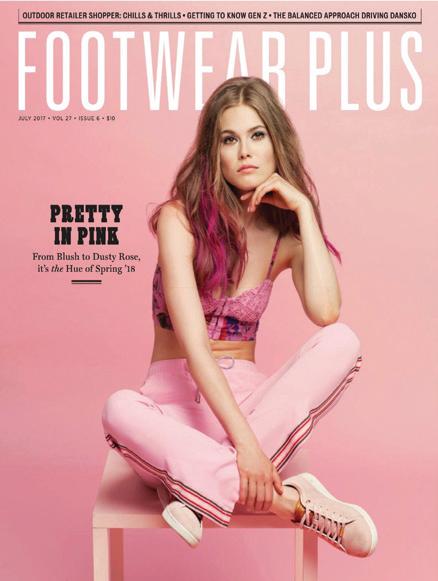
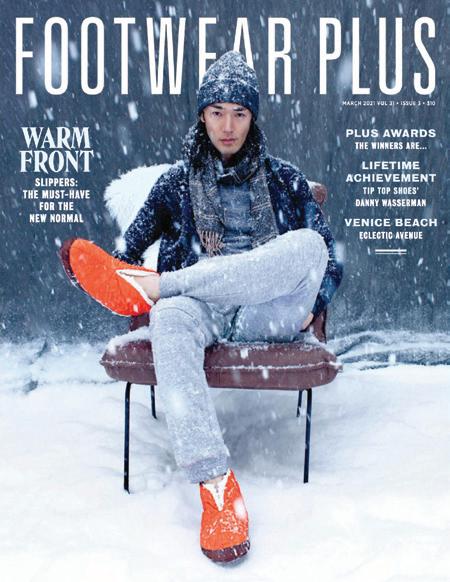
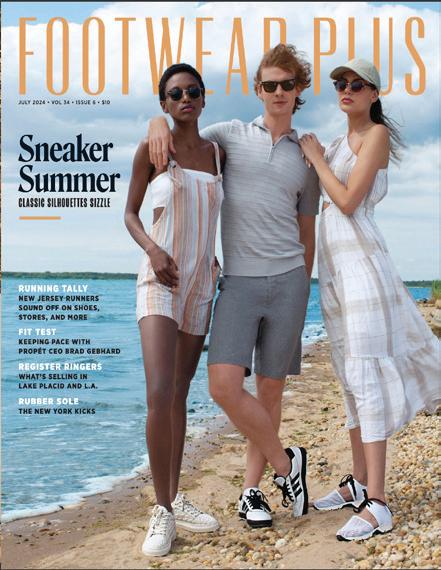
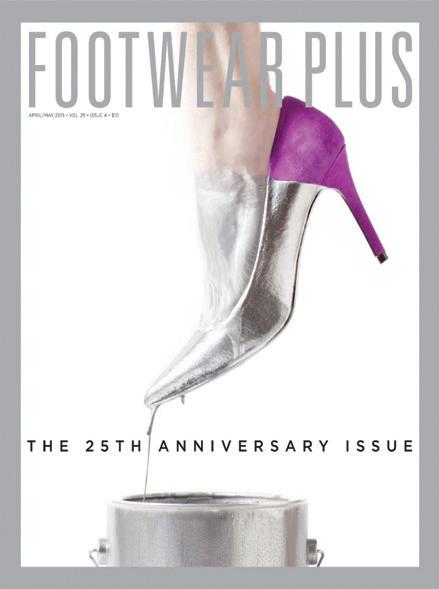
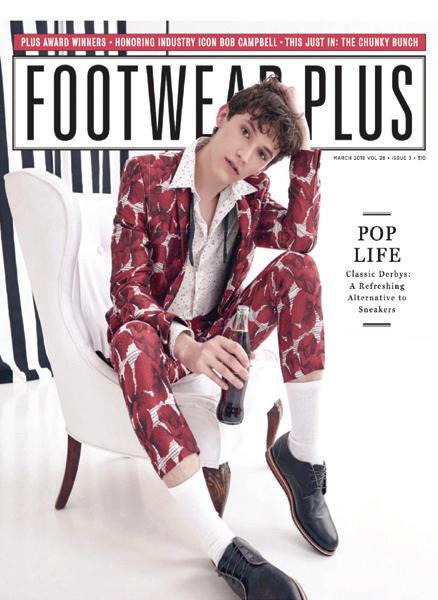
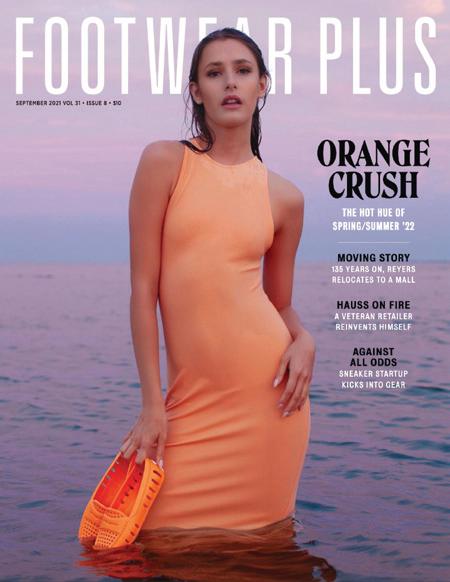
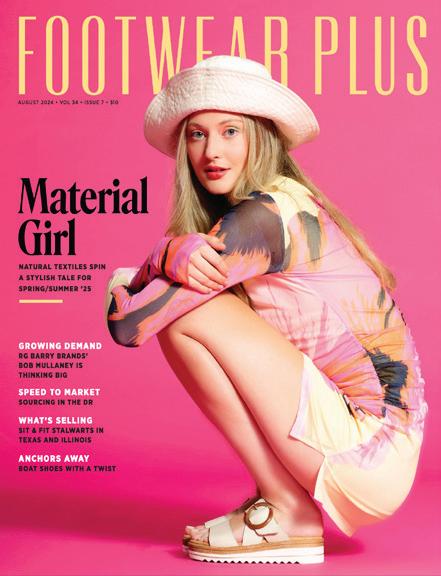
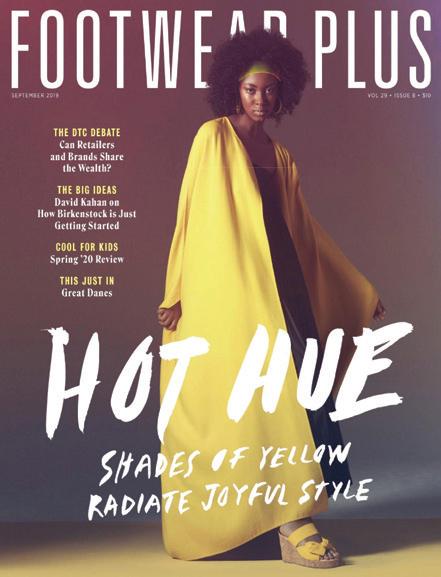
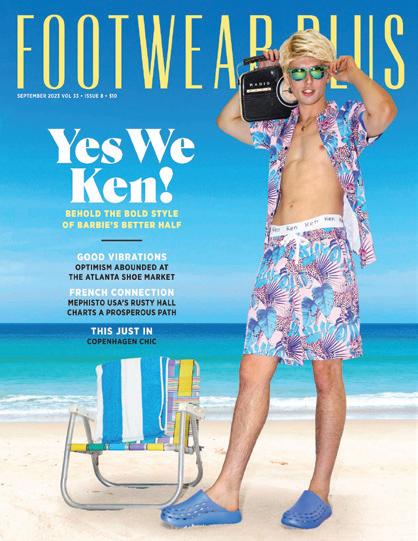
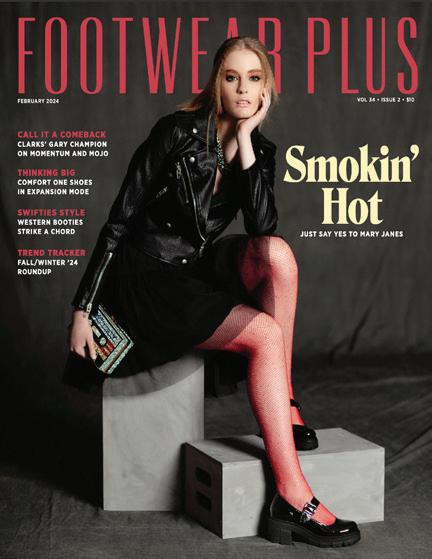
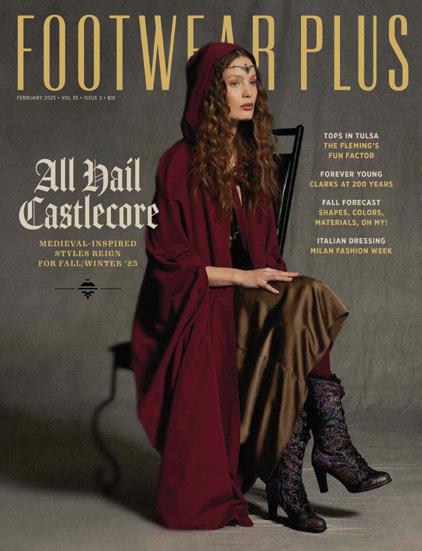
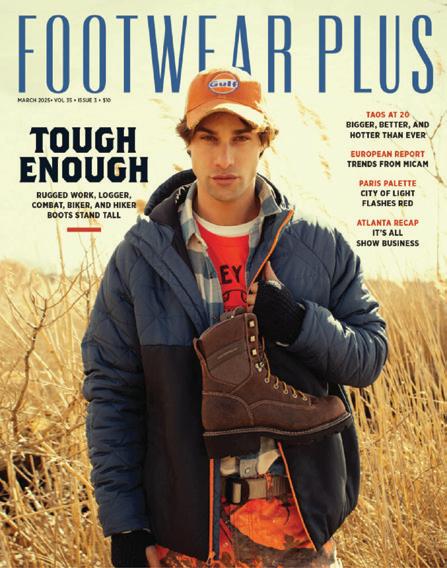
Congratulaons to Greg Duer and Footwear Plus on 35 years!
A huge milestone for a publicaon that connues to lea its mark.
- Bob Muaney and the RGB team

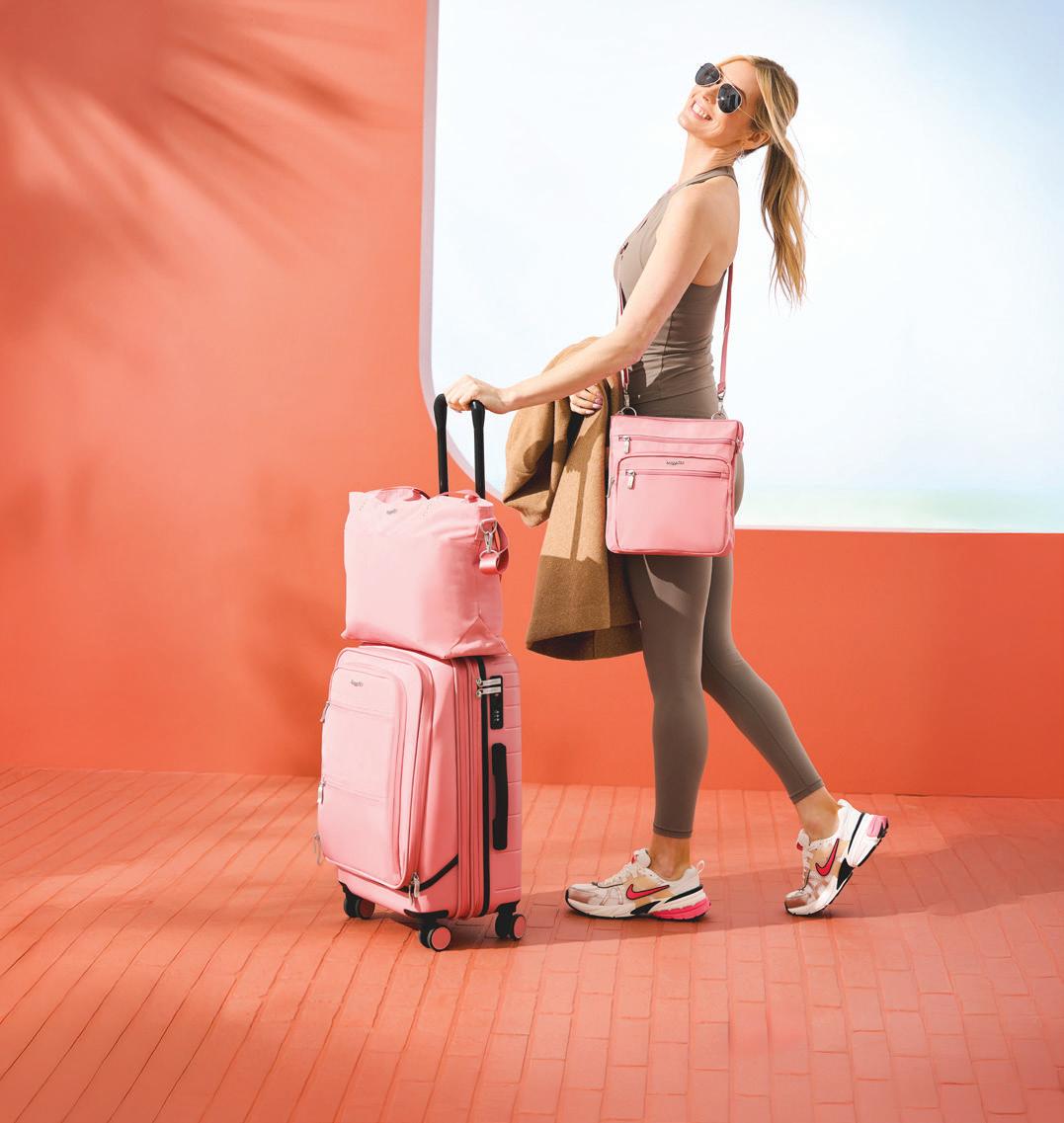
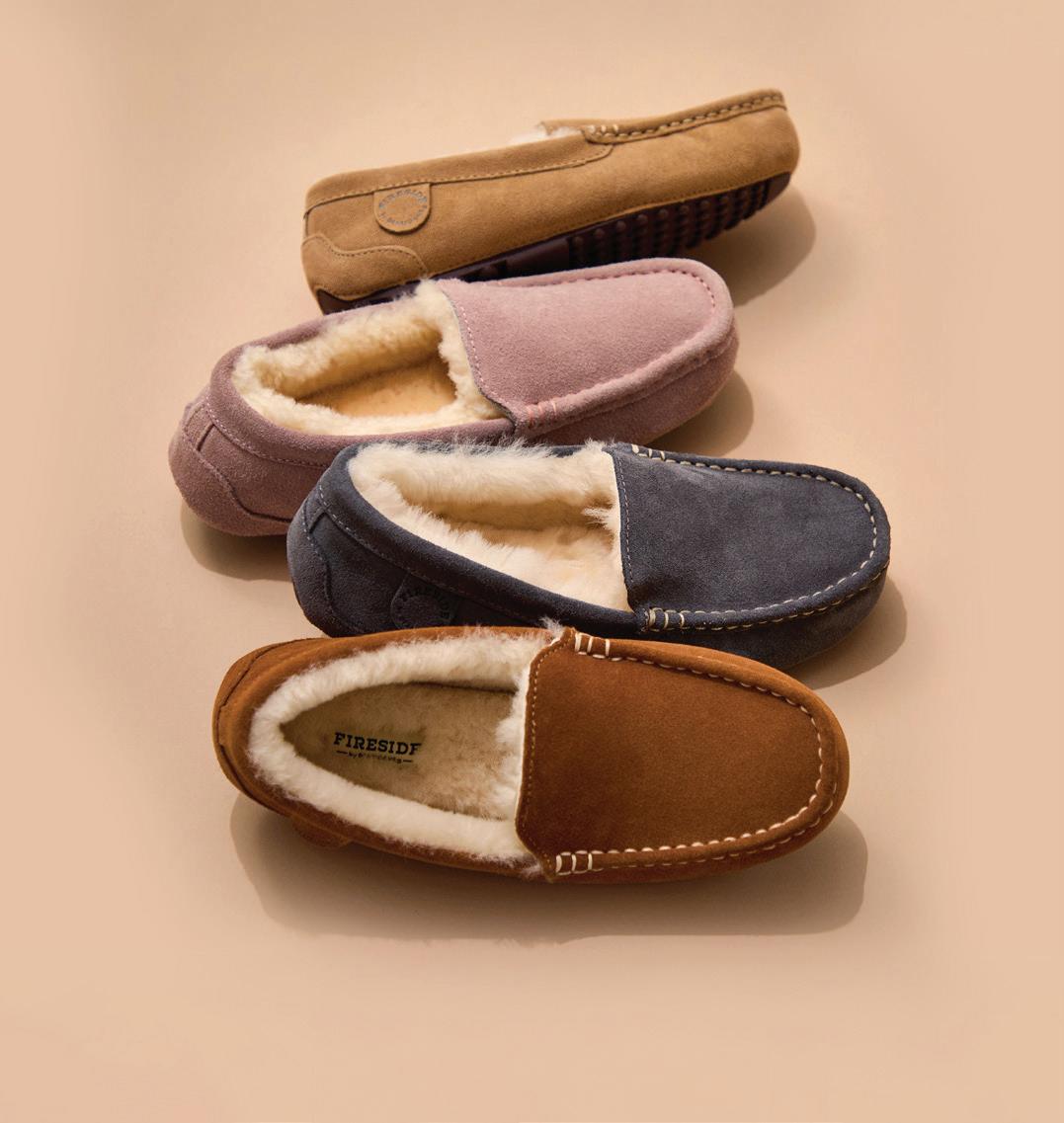
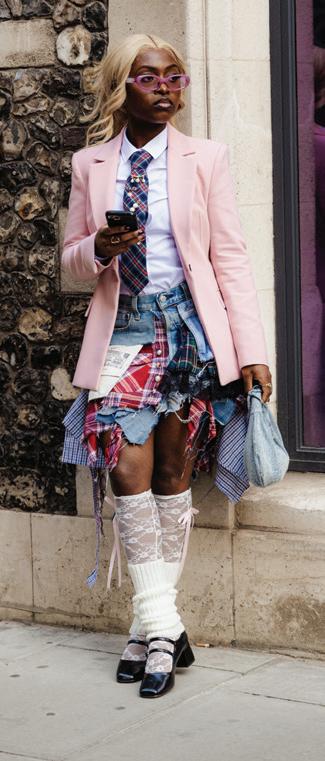
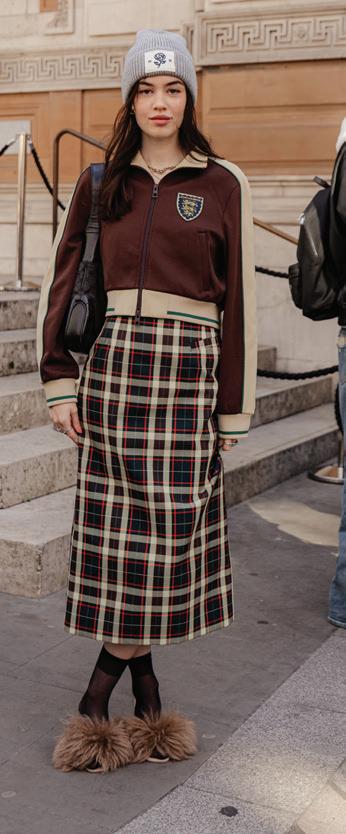
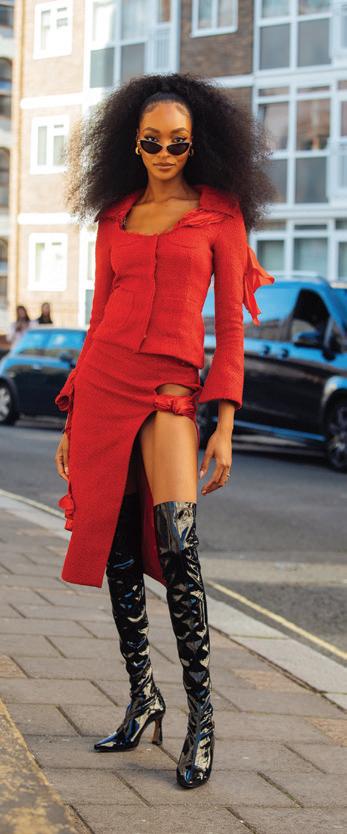
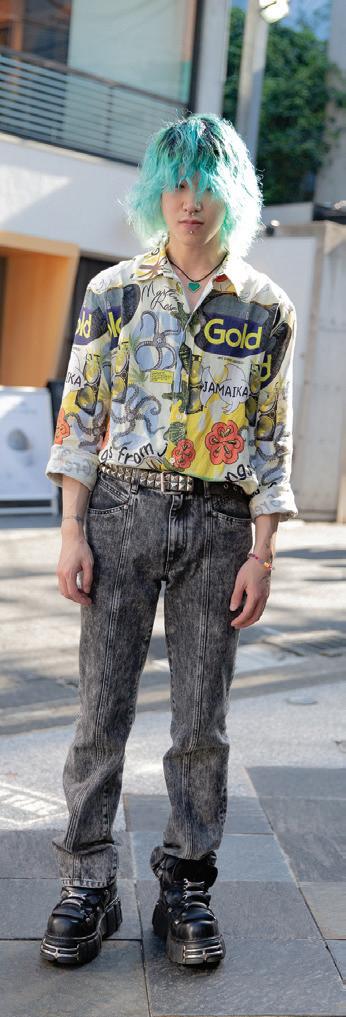
Our photogs have tracked trends here, there, and everywhere. Photography by Melodie Jeng and Marcy Swingle
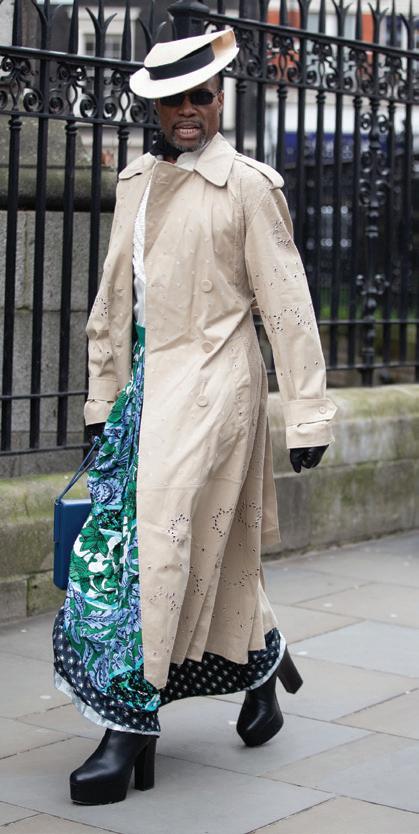





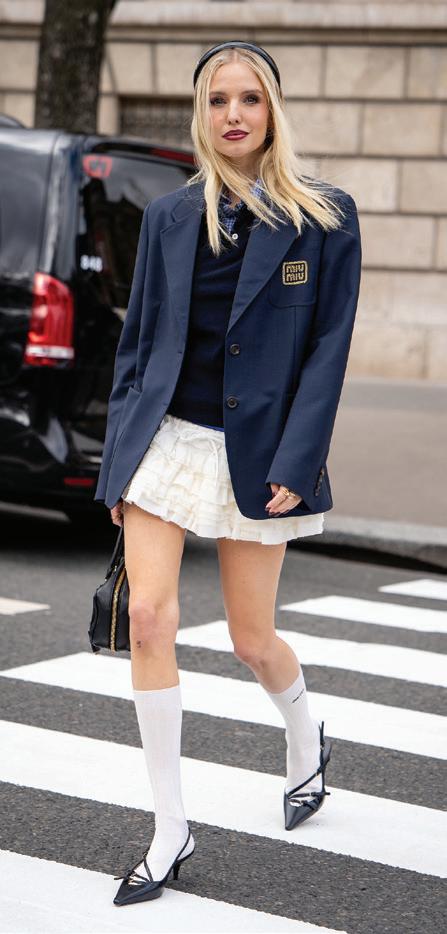
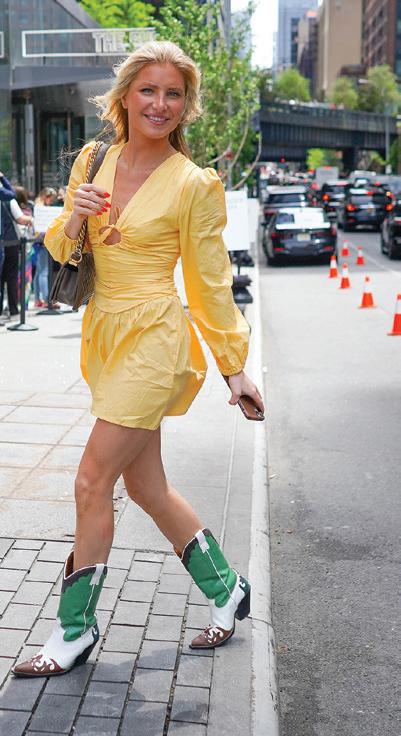
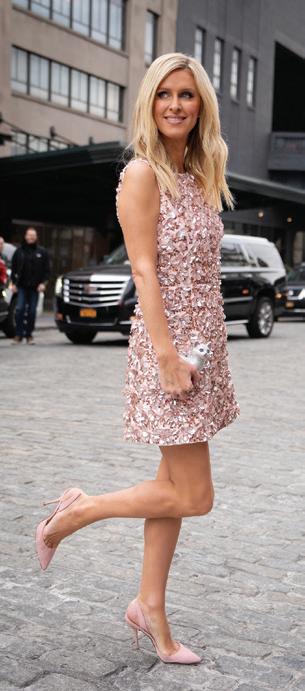

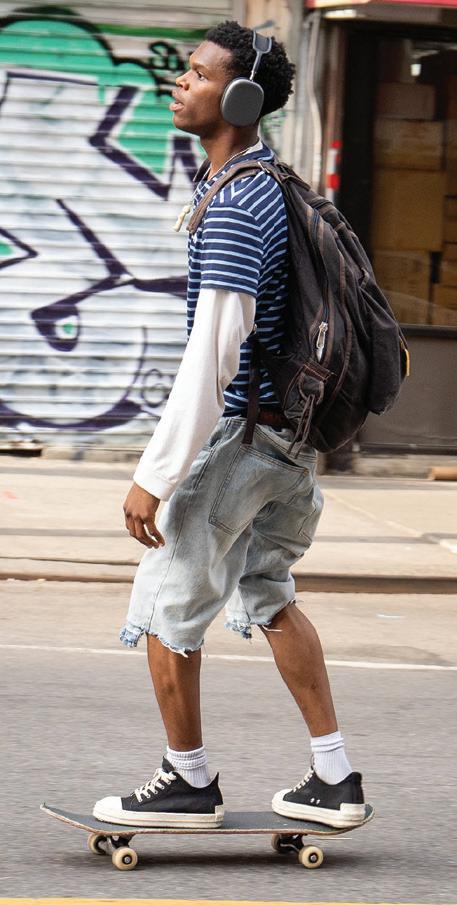

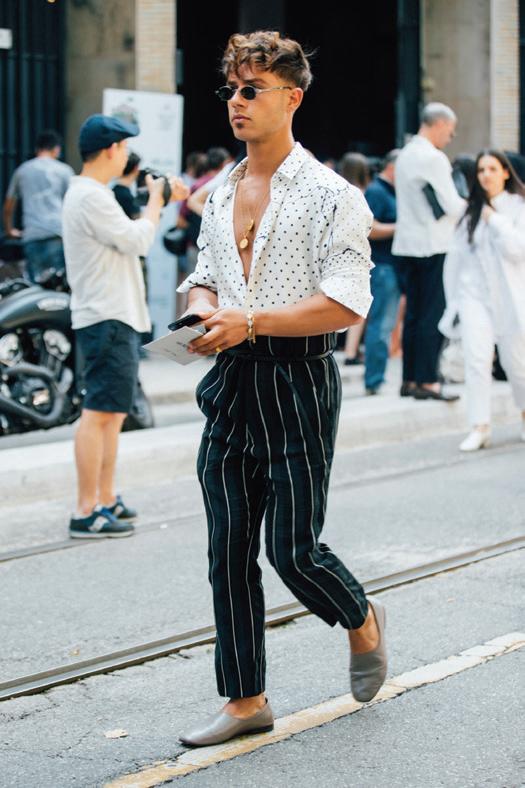
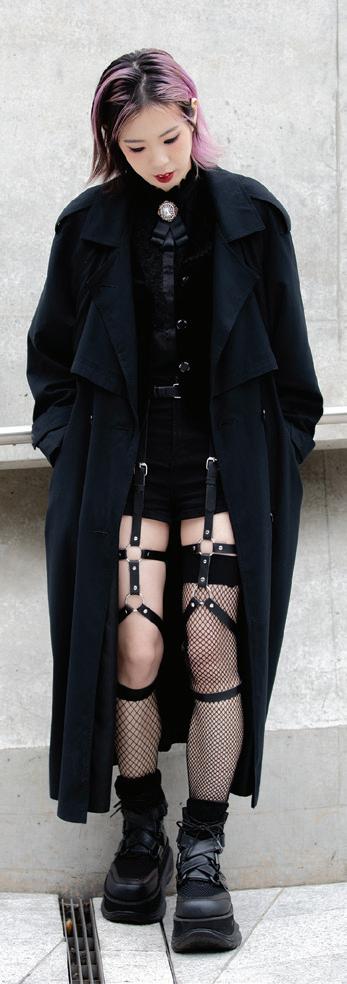

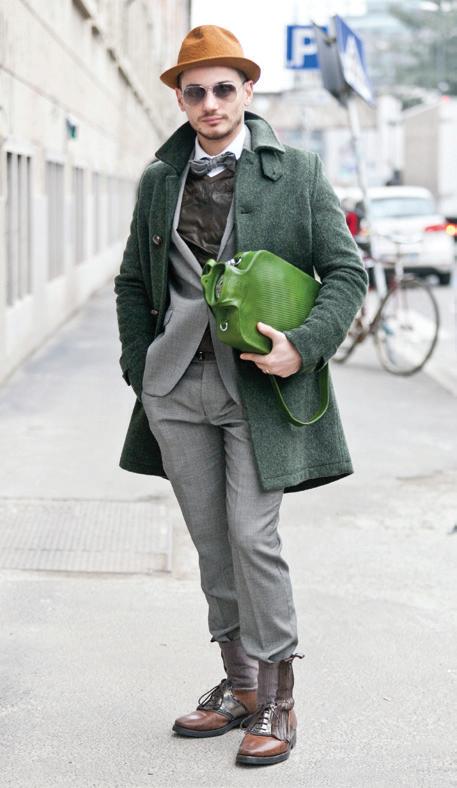
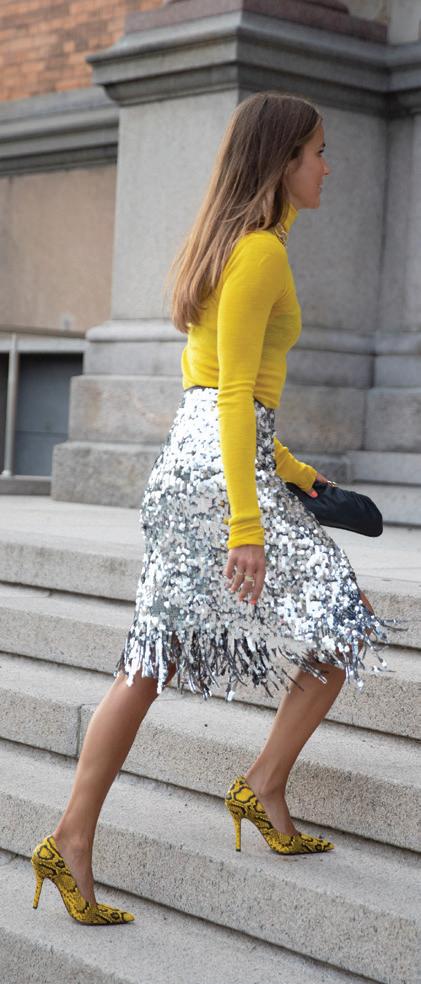
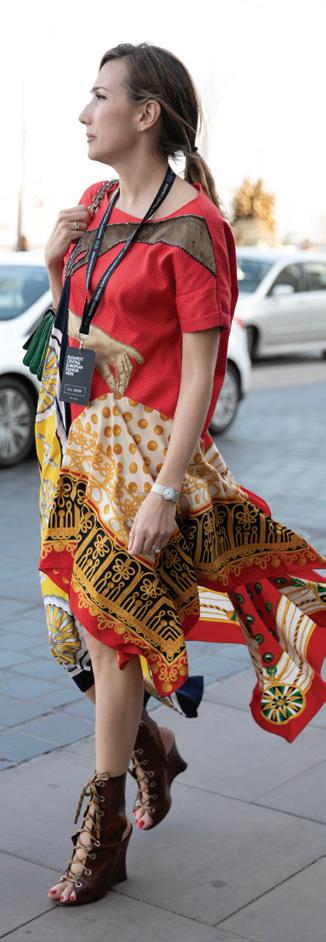


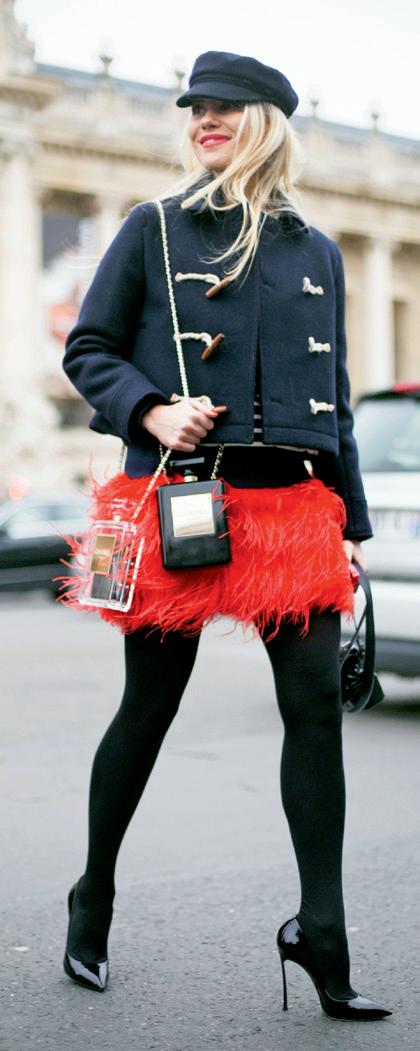

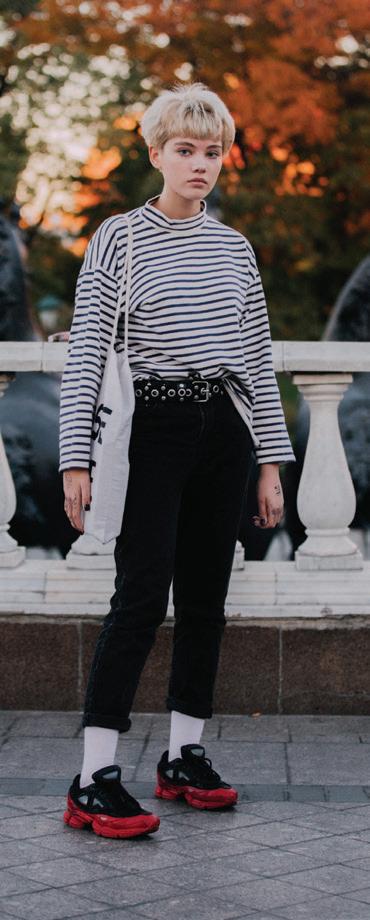


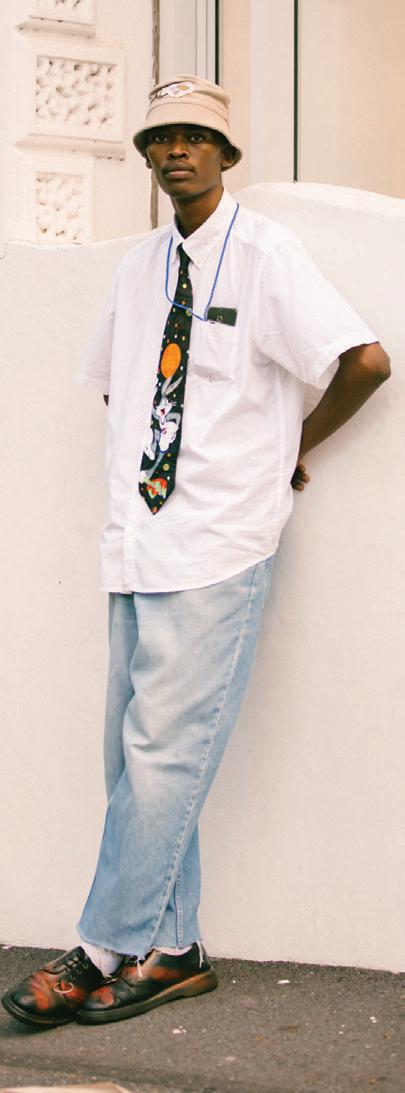
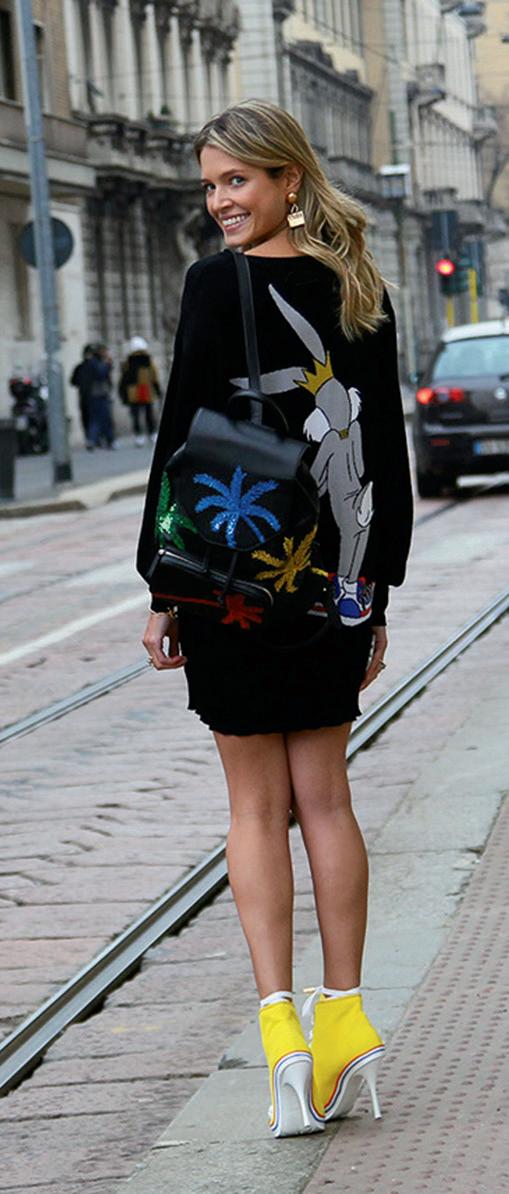
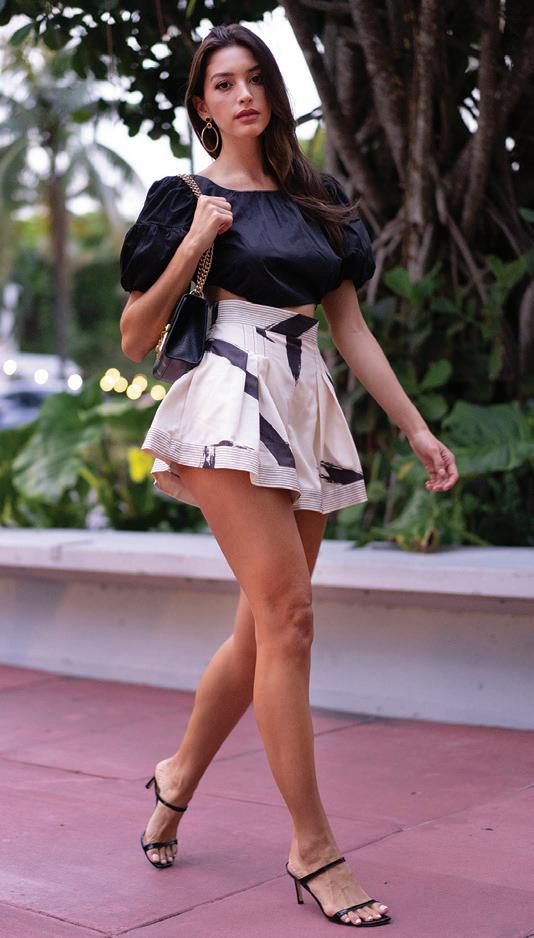
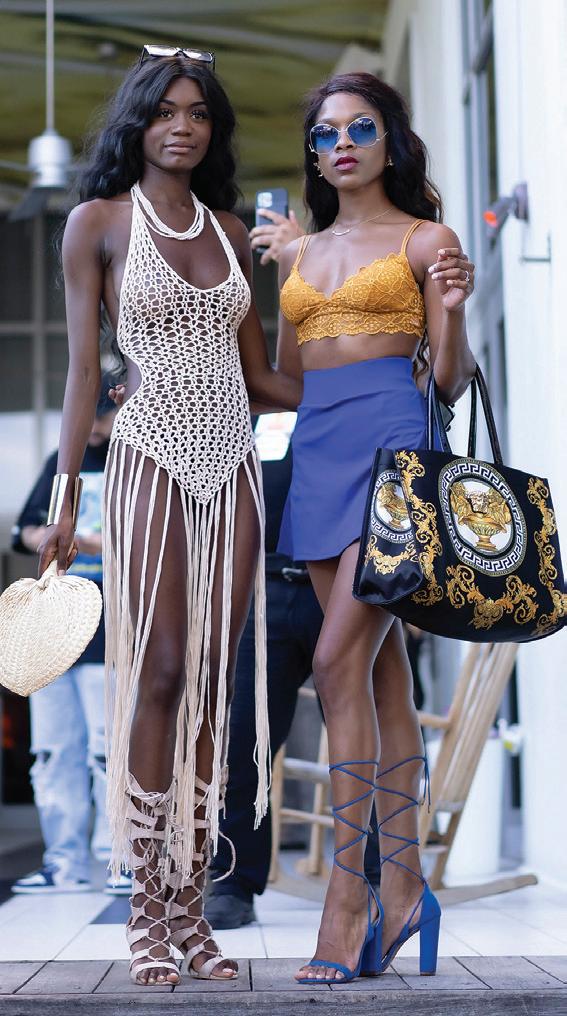
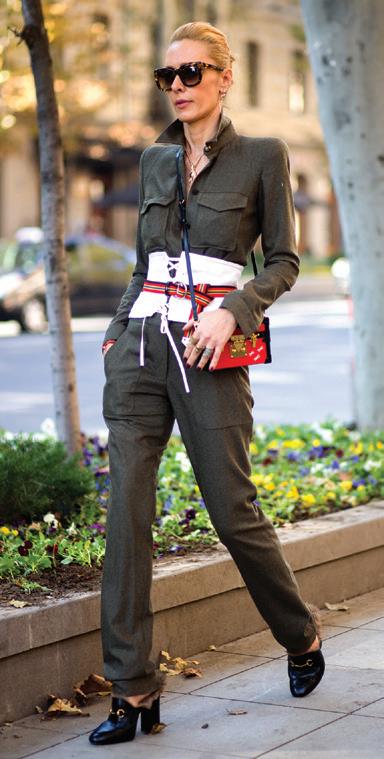
Birkenstock Americas CEO David Kahan recalls putting in the work, one independent account at a time.
IN 1990 David Kahan was working the mean streets of his hometown: Noo Yawk, a.k.a. the Big Apple. He was a regional sales manager for Nike, responsible for the metropolitan territory. There were hundreds of accounts to visit just in the five boroughs. It could be a grind at times, and using payphones, pagers, and fax machines had its challenges. Still, Kahan was all-in on this business.
“I knew with absolute certainty that the rest of my career would be in this industry,” he says, adding that it didn’t matter to him if he worked in the athletic, dress, or comfort sectors. “I knew for sure the footwear wholesale/retail brand business was where I was meant to be.”
Kahan bet on himself that year. “I’d just rolled the dice and bought my first apartment, a co-op, and I hoped I could pay the overhead,” he recalls. It was a very smart bet. His success and the industry accolades he’s received, especially for his 12-year tenure at Birkenstock, speak volumes.
In 1990, though, the shoe industry was a different world—another planet, really. There were a lot more retailers to call on. That meant more potential, but also a lot more work. “It’s almost hard to imagine,” Kahan says, recalling a landscape of regional chains like Kohl’s, Mervyn’s, Herman’s World of Sports, Dick’s, and The Sports Authority, which was just getting started. In addition, there were hundreds of independent sneaker/shoe and Army/Navy retailers. “We’d allocate product block by block, and that definitely taught us brand management and discipline,” he says.
Among the smaller stores were some great retailers, and a cast of memorable characters, Kahan says. They were “real urban guys who were hardcore, inthe-store-seven-days-a-week retailers,” he says. “You also had guys who sold a lot of athletic footwear plus denim and tons of Starter jackets.”
In those days, the athletic market was on fire. Foot Locker, Champs, Sneaker Stadium, Footaction, Fan Club, Dr. Jays, and VIM were also quickly expanding. “The growth was off the charts in athletic,” Kahan says. “Plus, department stores all bought regionally while Nordstrom stores bought individually.”
The best way to meet all these individual buyers was on their turf, which wasn’t easy in the pre-GPS/smartphone age. “We used to stop at payphones when out on sales visits,” Kahan recalls. “We’d drive around with the Yellow Pages ripped out to find the stores in a town. Eventually, town by town, we got to know every store in New Jersey, Long Island, and Connecticut.”
This was also the age of the fax machine, an imperfect technology at best. “I’d get home at night and there’d be a ream of fax paper that went on for
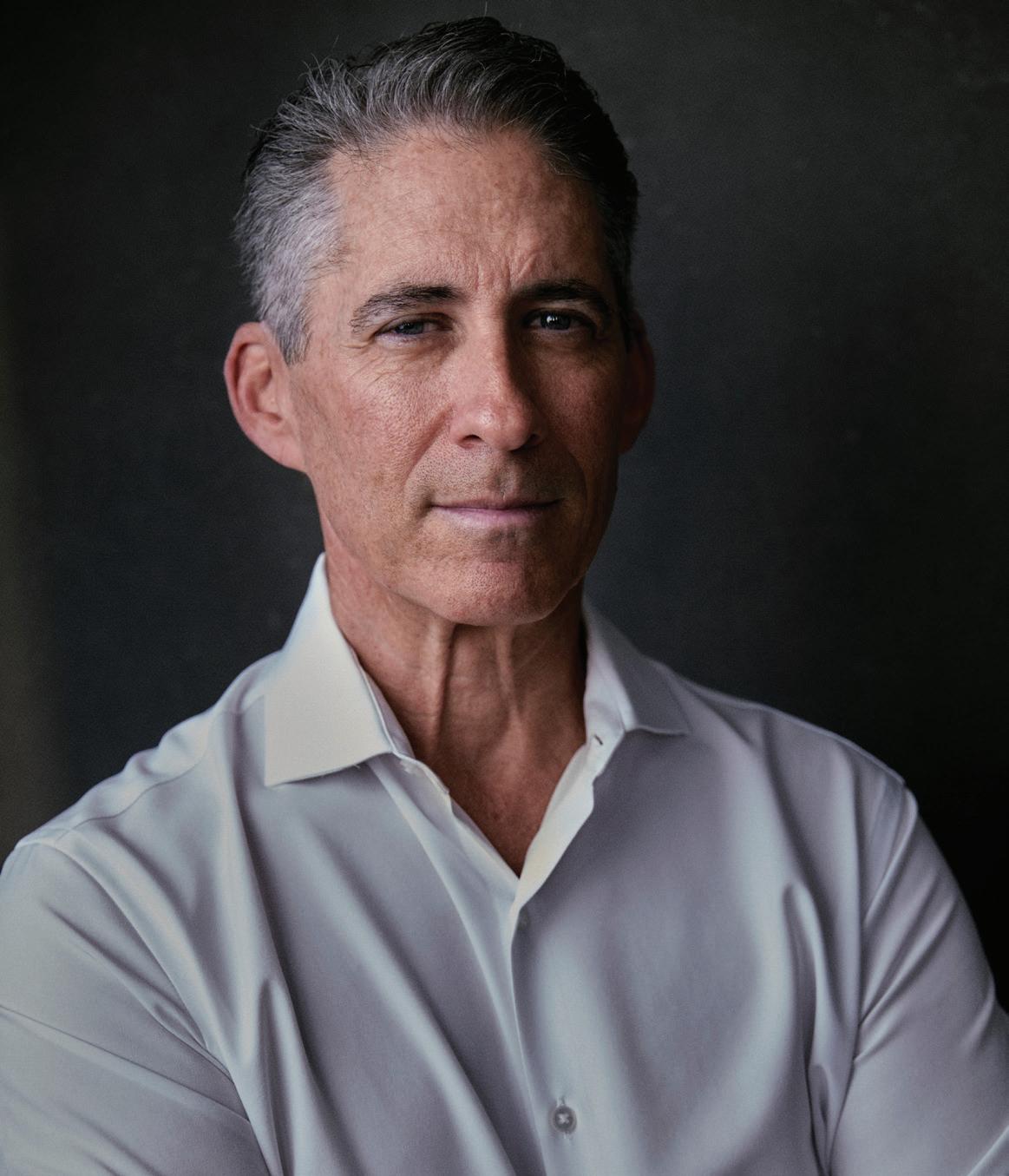
10 feet with orders,” Kahan remembers. “Trying to read them on that paper where the ink would fade if it was left in the sunlight too long didn’t make it easy.” Kahan also recalls the time his boss gave him a pager so he could be reached on the road. “I’d get paged and then have to find a payphone to call. So today’s technology has sped things up dramatically, but it definitely has impacted people’s ability to find balance.”
While Kahan was confident even in 1990 that he’d make this industry a career, “never in a million years could I have imaged the exact path,” he says. “I’m so grateful for the many mentors who set great examples of how to really be in the business.” The past 35 years has enabled him to gain a lot of perspective. The key to long-term success, he says, is learning this simple lesson: It’s not about you. “The more you focus on serving others, the more you will get in return,” he says. •



Dansko Founders Mandy Cabot and Peter Kjellerup are embarking on another an all-sides-benefit business model.
By Greg Dutter
THERE ARE ENTREPRENEURS who launch amazing businesses with great products, teams, marketing, logistics, and profit structures that can sustain a company for decades.
Then there’s the dynamic duo of Mandy Cabot and Peter Kjellerup, who go the extra mile by mixing in a “do the right thing” approach across product, people, and planet. Their formula fueled a successful 28-year run that saw Dansko become a cornerstone comfort brand while serving as a beacon for best sustainable and philanthropic practices. Dansko did a lot of good while selling tons of clogs and other styles. In 2018, the couple’s plan was to kick back in Belize, a tropical paradise they’d started visiting a few years earlier and fallen so in love with that they’d bought a second home there. But you know what they say about the best-laid plans…
“We really had no intention of embarking on what is now chapter three, following Five Star Farm (equestrian business) and Dansko when we retired,” Cabot says. The pair originally thought of planting a few crops for their own consumption and returning full circle to the farming that her husband did in Denmark before moving to America.
Well, one thing led to another and now the couple find themselves in full-on, rapid-growth mode as the heads of Silk Grass Farms (SGF), a vertically integrated agribusiness covering nearly 8,500 acres and processing a wide variety of crops into value-added products such as juices, juice blends, creams, milks, honey, and oils. “I guess we’re not the ‘retiring’ types,” Cabot says, though she admits that “We never really saw ourselves lounging on a beach with nothing important to do.”
Their plans took shape when an opportunity arose to purchase a “crazybig” piece of land. Cabot and Kjellerup went for it, resolving to preserve the wild parts of the land parcel and rehabilitate the farmed parts. Though they had no hands-on industrial-sized farming experience, they took the plunge, diving in the same way they dived into the footwear business years earlier. “Go big or go home, right?” she says.
The decision seemed easier after the couple got to know several impact investors—people whose business model was Dansko’s “do the right thing” approach on steroids. (Think Newman’s Own and Patagonia’s Perpetual Purpose Trust models.) At SGF, 100 percent of the profits from the farms and factory go to preserve the 24,500 acres of adjacent rainforest that Cabot and Kjellerup have permanently protected as the Silk Grass Wildlife Preserve. “This is a quintessential circular economy: Profits from the agribusiness support the surrounding ecosystem, which in turn provides the nourishment on which our business depends,” Cabot explains. “That’s clean air and water, thriving habitats for pollinators and beneficial insects, thriving biodiversity, etc.”
The more Cabot and Kjellerup explored the impact business model, the more excited they got. “We can protect this incredibly important wildlife corridor from development, illegal logging, wildlife extraction, etc., and totally

rehabilitate the farm as the economic engine that ultimately supports the whole shebang,” Cabot says.
That shebang now includes:
• three more farms (another 6,000 acres), which increases the supply of citrus, cacao, coconuts, and mangos
• a new, built-from-scratch, 130,000-square-foot, state-of-the-art food processing facility
• new employee housing, as well as a rec center, commissary, laundromat, and cafeteria
• a new two-megawatt solar array to power the entire operation
• a one-ton/hour biorefinery to turn biowaste, like coconut shells and fruit peels, into biochar, both for carbon credits and as a soil amendment to the farmland
• rebuilding and repurposing the original owner’s residence into a modern field station to house visiting researchers for the Silk Grass Wildlife Preserve
• planting hundreds of thousands of native trees as riparian buffers, windbreaks, nitrogen-fixers, and erosion controls
• building the Sandy Creek Academy, an onsite school for the children of SGF employees
That is walking the impact model walk. But that’s not all. SGF, Belize’s first certified B Corp business, also offers employees pensions, free medical and psychological care, and free education for their kids. Few, if any, Belize companies do all that.
“Why on earth wouldn’t we want to offer these things if it means a stronger, more resilient, more educated workforce?” Cabot says, adding, “If a business can’t truthfully claim that it enhances the quality of life of everyone it touches, then it
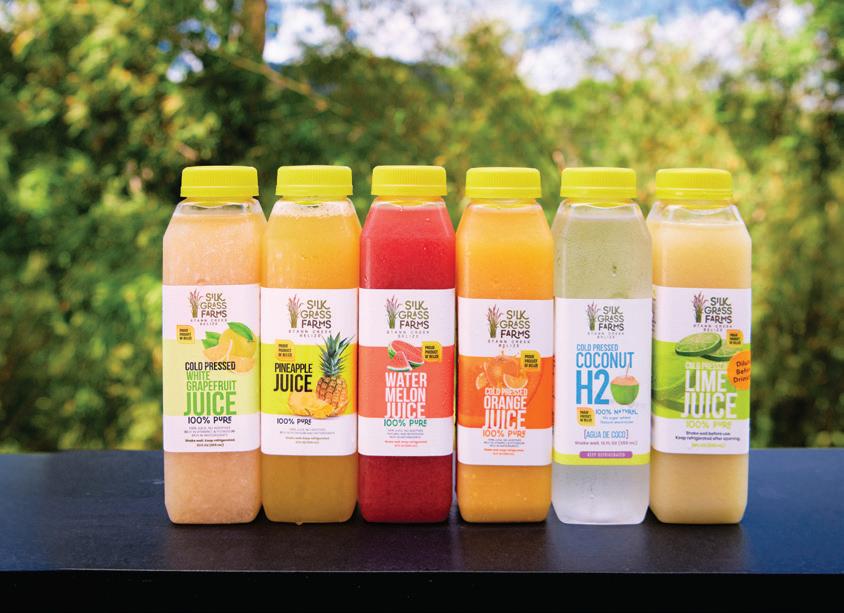


should go back to the drawing board. Why else should a business even exist?”
Life for Cabot and Kjellerup is really good. They’re now permanent residents of Belize and live on a milelong stretch of mostly deserted beach. SGF is in the foothills of the Maya Mountains, about a 35-minute drive northwest of their home. “‘Rush hour’ might see half a dozen cars on the road and about as many motorbikes and bicycles during our commute,” Cabot says, noting that temperatures fluctuate between the high 60s and the low 90s year-round. “The seasonal changes are much more nuanced, unlike Pennsylvania, when the changing seasons can smash you over the head.” Cabot adds, “The official language is English, and I’ve never met friendlier people.”
SGF, Cabot promises, is their “grand finale” as businesspeople. (She is now 70, and Kjellerup is 80.) Their goal is to get SGF to financial sustainability within their lifetimes, though the pair have never been profit-motivated. “With Dansko, we wanted to be our stakeholders’ favorite shoe company. Full stop,” she says. “We had something great to share, and the sharing would fuel the business and generate the profitability. With SGF, profitability is required to achieve financial sustainability, our ultimate goal. We’re not looking to extract a penny of value from the enterprise.”
Indeed, Cabot and Kjellerup bought the land to rebuild, restore, enrich, and leave it better than they found it. Ultimately, “Our intention is to return to Belize what was rightfully their land and natural resources, reversing decades of extraction economics by the British,” Cabot says, noting that they’re applying everything they learned during their shoe industry days to SGF. “Operationally, structurally, culturally, financially—we want to share those learnings with the next generation of leaders,” she says. “Belize is hungry for this impact business model that hopefully other Central American countries can follow. SGF can be its North Star. This is our legacy.” •

(continued from page 13)
customers, retailers, employees, and the planet. There’s nothing offensive about an everyone wins business model.
I agree. And as a 100 percent employee-owned organization, everybody should have that lens. So if talking about sustainability might anger half the country for reasons that don’t make sense to me…ok, then we won’t, because I have 180 families counting on Dansko not pulling a Bud Light.
Enough negativity. Tell me something positive. We’re opening our first nameplate Dansko store, aside from our outlet attached to our headquarters. It’s in Portland, OR, in partnership with The Shoe Mill. The soft opening is early May and the grand opening will be in early June in conjunction with the city’s Rose Festival. It will have the total look and feel of a Dansko shop but technically is one of their Footwise concepts. Actually, Shoe Mill is leasing an old Clogs N More space. They thought about opening a Shoe Mill or Footwise there, but then approached us last summer about opening a flagship. It’s very exciting; they’re incredible partners.
Why Portland, specifically?
Our business in Oregon has always been phenomenal. In fact, our team was there recently buying antiques and furniture to make it feel like a warm gathering space, and a lot of people walking by were so happy to see that we were opening a store. It bodes well.
Will Dansko partner with other retailers around the country to open more flagships?

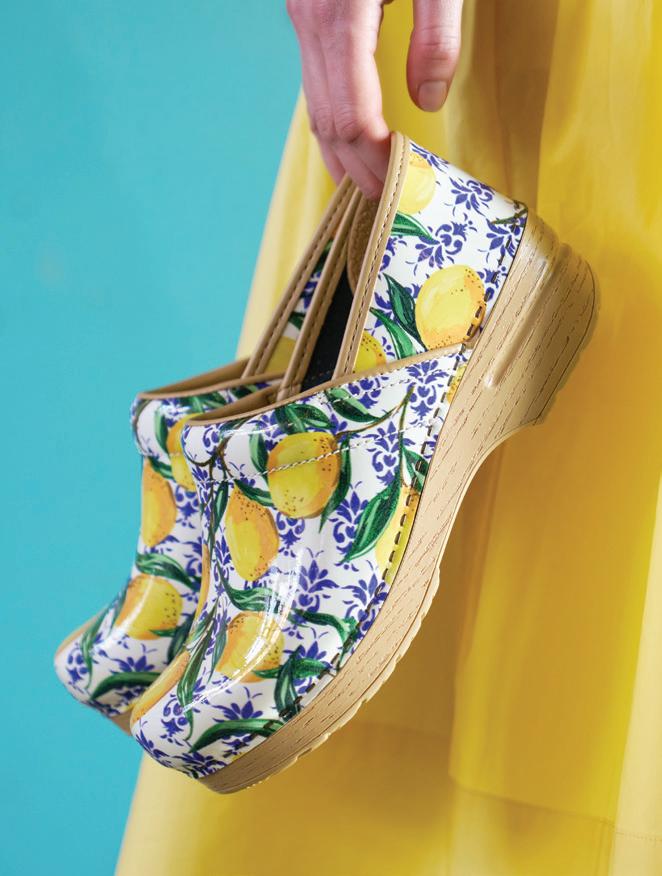
Absolutely. We expect to learn a lot from this partnership. For starters, this store has the opportunity to carry the entire line, including exclusives on Dansko.com. We’ll also double down on being involved in the local community. We want this to be a gathering space. Our hope is that it will all work out, then we can replicate it in other markets where the brand has strength.
It sounds like a win-win for Dansko and Shoe Mill. It is, potentially. We can get a ton of feedback on Dansko. It’s like a brand lab. And Shoe Mill gets to do what it does best. Also, many of the communities where Dansko already does well have strong retailers. So isn’t it better to work with those partners? On that note, the store manager is a Shoe Mill employee but will attend our sales meetings and be immersed in our processes so they can speak to what we do and how we do it.
Anything else of note in the hopper?
We’re participating in more apparel shows in effort to open more boutiques. That’s more for brand awareness than sales volume. We want to reach our consumer where she prefers to shop, which is our long-term goal of being wherever our customer is. Of course, that’s always changing. For example, I’d have said recently that she doesn’t want to be in department stores, but we’re seeing things turn around nicely at Nordstrom. So maybe she does want to be there, too.
So, is the glass half empty or half full?
It’s half full because we have to think that way. We have to figure out how to navigate any challenges and come up with solutions. We remain on a mission to find moments of joy because Dansko still has plenty of opportunities to do great things. Now it’s just in a world that is contextualized a little differently than we’d like. Regardless, we have as much energy and excitement around our business as ever. I’m reminded of that when I glance at the Shopify app on my phone to see what’s selling. Oftentimes, I’ll notice a spike in sales on the heels of some terrible world news. It reminds be that it’s not all bad. Life goes on and people still want and need our shoes. •
Hawley Lane Shoes Owner David Levy’s career runs from Wall Street dreams to Main Street success.
IN 1990 CONNECTICUT native David Levy was dreaming of working on Wall Street and making a name for himself in the finance world. He was busy earning his M.A in economics degree at Kent University in England.
“It was an exciting and eye-opening time, both academically and culturally,” Levy recalls. “My plan was to break into investment banking and build a long-term career in finance. I was driven, ambitious, and excited to become a part of that high-energy world. I was dreaming of living the full-on, stereotypical ‘Wall Street’ life—suits, skyscrapers, and the fast-paced hustle. I wanted to be in the middle of the action.”
First, though, Levy embraced Europe with open arms. “I made lifelong friends and traveled throughout the continent,” he says. “The Berlin Wall had just come down; the energy across Europe was incredible. There was this overwhelming feeling of change and possibility. It was a once-in-a-lifetime experience to witness that kind of history unfolding in real time.”
That same year, Hawley Lane Shoes, Levy’s then second-generation, family-owned business, was a different operation than it is today. First off, it was just one location, not the five it is now, and it was focused heavily on fashion. “We catered to style-conscious shoppers, whereas today we’re entirely focused on service, comfort, and solving foot pain,” Levy says. “Shopping with us has become a full experience. We’re committed to helping people find real solutions, in addition to great shoes.” Levy credits the shift in format to his mother, Sandra Levy, and uncle Bob Smolensky. “They were the true visionaries who transformed Hawley Lane Shoes into a comfort-focused, life-changing experience for our customers.”
It wasn’t until 2020 that Levy joined the business full-time. In fact, his footwear career started by chance. Back in the U.S. and job hunting amid a recession in 1991, a friend mentioned that her sister had a job opening at Stride Rite in product development. “Something told me to meet her,” Levy says. “I got the job and just six months later, I was on a plane to South Korea—completely on my own and no idea what I was doing.” It was intimidating and
I’d tell myself to stay open to the unexpected, because the path ahead isn’t what I think. It’s even better. I’d say, “You won’t believe it, but shoes are going to take you places—literally and figuratively.”
I’d also take a moment to appreciate the simplicity of that time, and maybe bring back a pair of retro kicks just for fun. Of course, I’d buy Apple stock at 40 cents. No question. Mostly, though, I’d remind myself that life doesn’t always go according to plan, and that’s ok. Sometimes, that’s exactly where the magic happens.
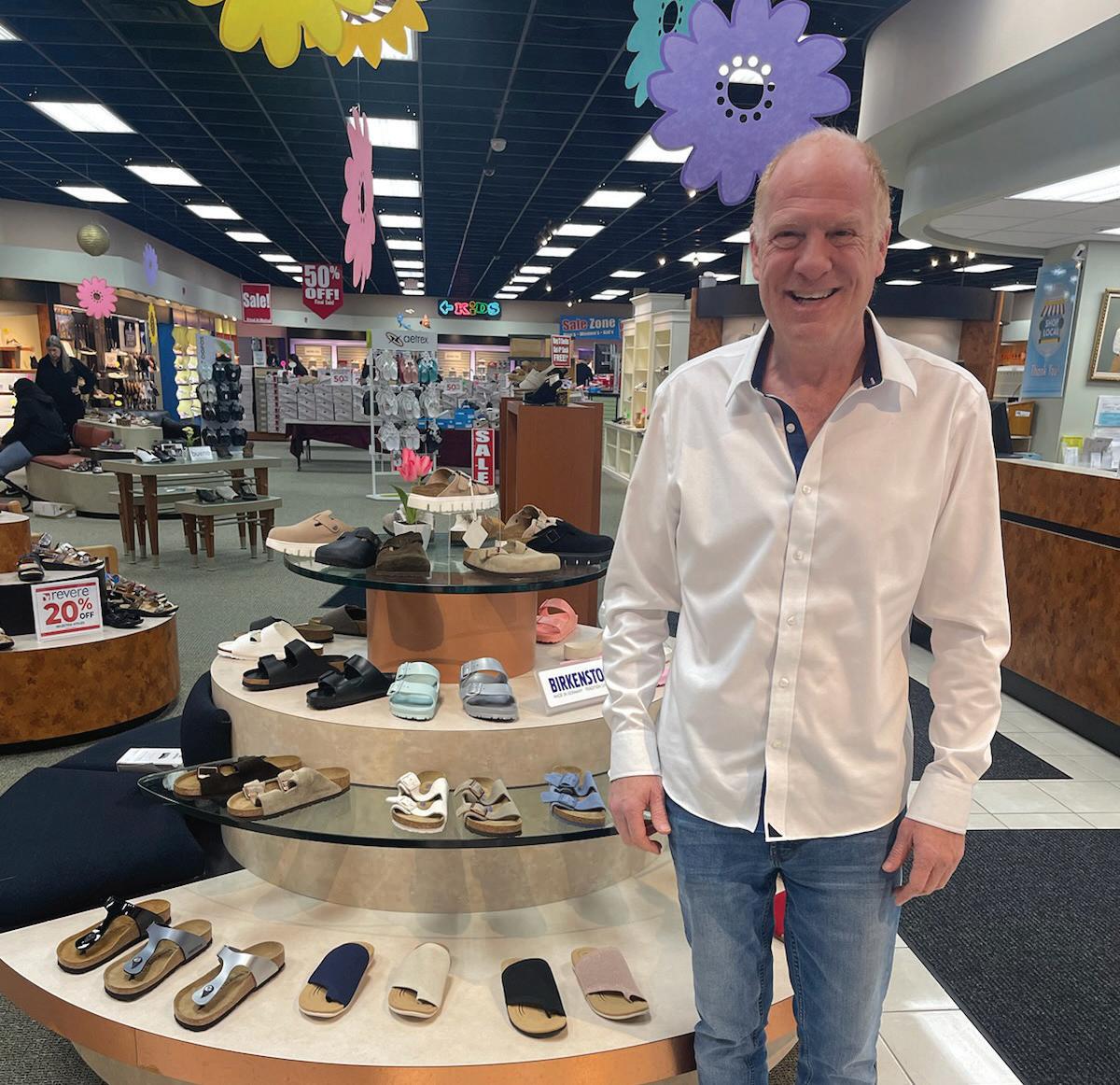
exciting all at once, and it led to a rewarding career in product and marketing, working at Keds and Converse. Levy then became Director of Product for the launch of Tommy Hilfiger footwear—a project he was “incredibly grateful” to have been a part of.
Levy’s decision to leave the corporate world started with a request. “My mother and uncle offered me the opportunity to join the family business that they’d built and evolved with so much heart and intention,” he says. “I’m incredibly grateful for the trust they placed in me and the chance to be part of something so meaningful.”
Levy considers himself lucky. Specifically, working in a profession that blends creativity, purpose, and real-world impact. “Helping people feel better, whether it’s through great product or personalized service, has been deeply rewarding,” he says, adding that traveling the world and working with iconic brands and learning from brilliant colleagues were bonuses. “The greatest gift has been bringing all of that back to our family business and building something meaningful for our communities. The shoe business has given me a life of purpose, connection, and fulfillment. For that, I’m truly thankful.” •
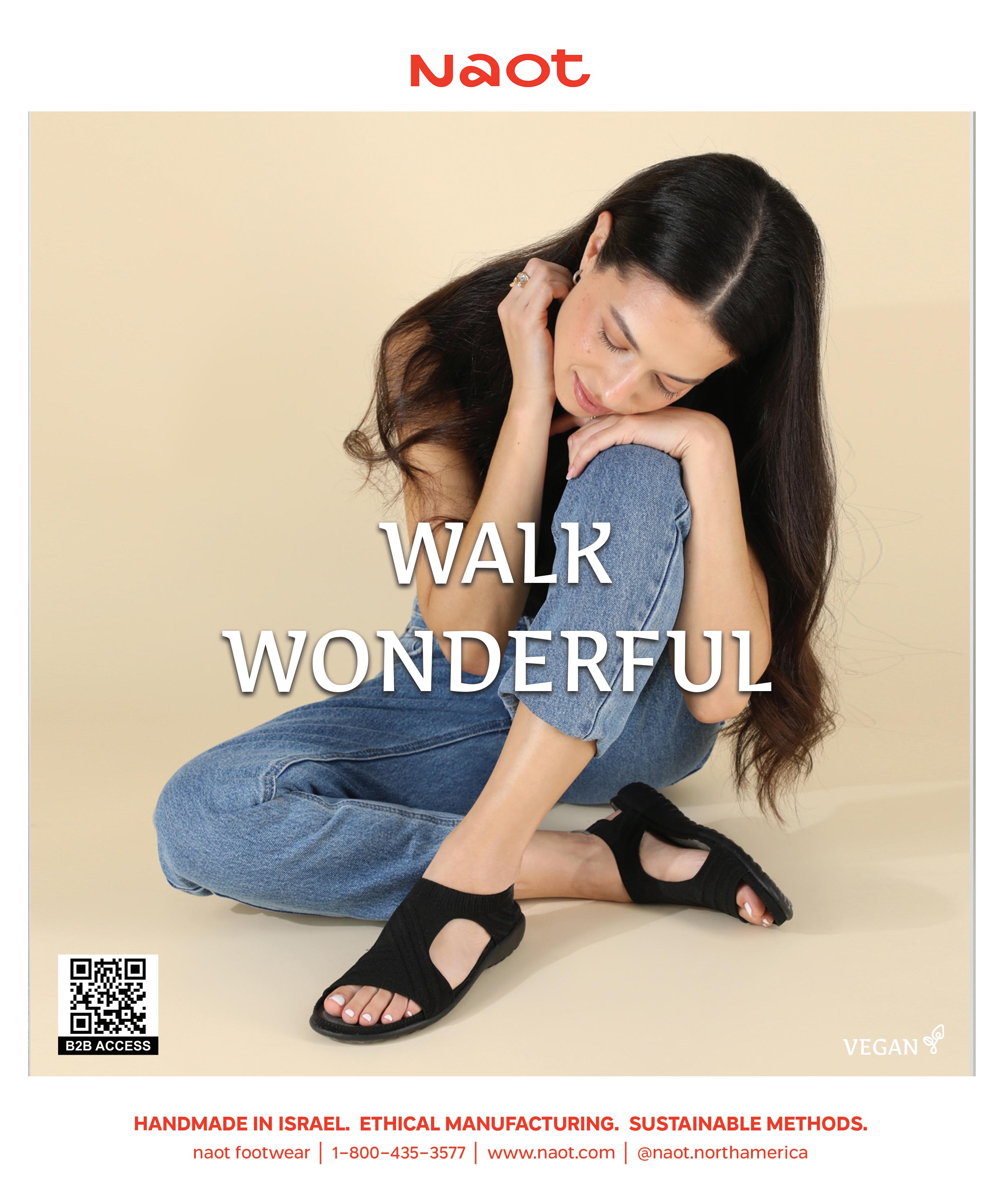
Legendary shoe retail expert Joe Salzano, a 26-year veteran of Clarks Companies NA, is still swinging away.
OFFICIALLY, JOE SALZANO hung up his shoe industry spikes eight years ago following a Hall of Fame career in retail sales and training. Now he’s most likely to be found wearing spikes for senior league, high arc softball as a catcher/manager for one team and manager for another, both in Massachusetts. That’s two games a week and plenty of practices for a good chunk of the year, plus competing in tournaments around the country—at age 87, no less! And as everyone who knows Salzano can attest, he plays to win. The Charlie Hustle of shoes is scoring as much success on the diamond as he did in his shoe industry career, winning more than 50 tournament championships and hundreds of games to date, including a 37-game winning streak last season.
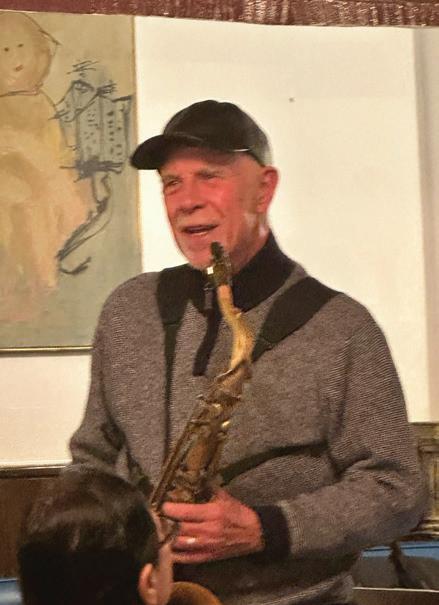
“I GOT PEOPLE MOTIVATED. I GOT
THEM EXCITED ABOUT DOING THEIR JOBS, AND THEY GOT BE ER AT THEIR JOBS.”
“Senior softball is my life now,” says Salzano as he preps for another season doing regular walks of a couple of miles around his neighborhood and hitting the gym often. “It’s been good for me because it has some resemblance to my former job in that I take it very seriously, I do lots of preparation, and I play hard. Senior softball has given me another way to keep active.”
Salzano says it was difficult to walk away from an industry he dearly loved for 59 years. He began his career at Altier’s Shoes in Rochester, NY, then followed coworker Bob Infantino to Rockport, and later served as Vice President of Sales at Clarks, where he rose to industry fame. Salzano missed only one day of work in that entire six-decade stretch, due to food poisoning in Missouri. He was the Cal Ripken of shoes, even though this diehard New York Yankees fan might bristle at the Orioles reference. Indeed, Salzano’s passion for his job and the industry was unparalleled. His speaking tours to motivate and educate store staffs throughout North America are the stuff of Shoe Dog legend. Some of his memorable sayings include: “Now is the time”; “The more you show and tell, the more you sell”; and “If you pay peanuts, you get monkeys.”
“It was very difficult to retire, but I decided I’d had enough. I could sit back and say, ‘Wow, I was lucky,’” Salzano says. “For a person who barely had a high school education, I had a pretty great career in the shoe business, and I enjoyed it all immensely. I’m not disappointed by anything.”
Salzano misses the biz—the energy, excitement, and thrill of sales. Most of all, as the consummate salesperson, he misses the people. “I always urged people to enjoy what they were doing, because if you don’t like what you’re doing, you’re not going to do well,” he says. “And I
never felt like my career was work. It was just so much fun to travel around the country and see all these great stores and engage with their staffs.”
What is his shoe legacy? “I got people motivated. I got them excited about doing their jobs, and they got better at their jobs,” says Salzano. It was a win-win: Stores sold more shoes overall and Clarks, in particular, flourished. “People who attended my presentations wanted to be entertained, but they also wanted to learn something they could take back to their stores to become better at their jobs,” Salzano adds. “That was my mission—to give people self-motivation that would stick.”
When Salzano is not on the ballfield these days, he can often be found playing his saxophone. Until recently, he played regularly in clubs in downtown Boston during the summers. But, after battling prostate cancer the past couple of years, he’s dialed it back and now plays at local senior homes on occasion for free. “They love it,” Salzano says, noting that he aims to practice every day for at least a half hour. “In my retirement I’ve tried to emulate everything I did in the shoe business: Stay active and engaged, try to get better, and be as positive as possible,” he says. “If you think you’re too old, that’ll put you below ground. I’d rather stay above ground playing ball and my horn. It’s working for me.”
Joe Salzano is a numbers guy, and here’s some data proving that.
Like a machine gun, Salzano is renowned for firing o exact dates of memorable events from long ago, sales figures, projected growth estimates, lists, line-ups, win-loss records, SKUs, size runs, batting averages, ERAs, and anything else that can be quantified.
Here’s a sample, excerpted from a Footwear Plus profile saluting Salzano’s career in 2012. 1955, the year he joined the U.S. Army; July 28th, 1958, the date he left; $1.50, the hourly wage at his first retail job at Kinney Shoes; 3 months, the time it took to be hired away by Altier’s Shoes; 1962, the year he was named a store manager; $300,000, that store’s yearly sales within 2 years’ time and up from $90,000; 30, his age when his first wife passed away, forcing him to raise 5 boys on his own; 3, the number of characteristics he looks for in a new hire, with enthusiasm being key; 2, his morning rituals that involve reading the newspaper’s obits to make sure his name isn’t there and looking, in season, at the American League East standings to confirm that the Yankees are in first place; 1, the number of days he called in sick during his career.
It adds up well for a guy who will turn 88 on July 6th

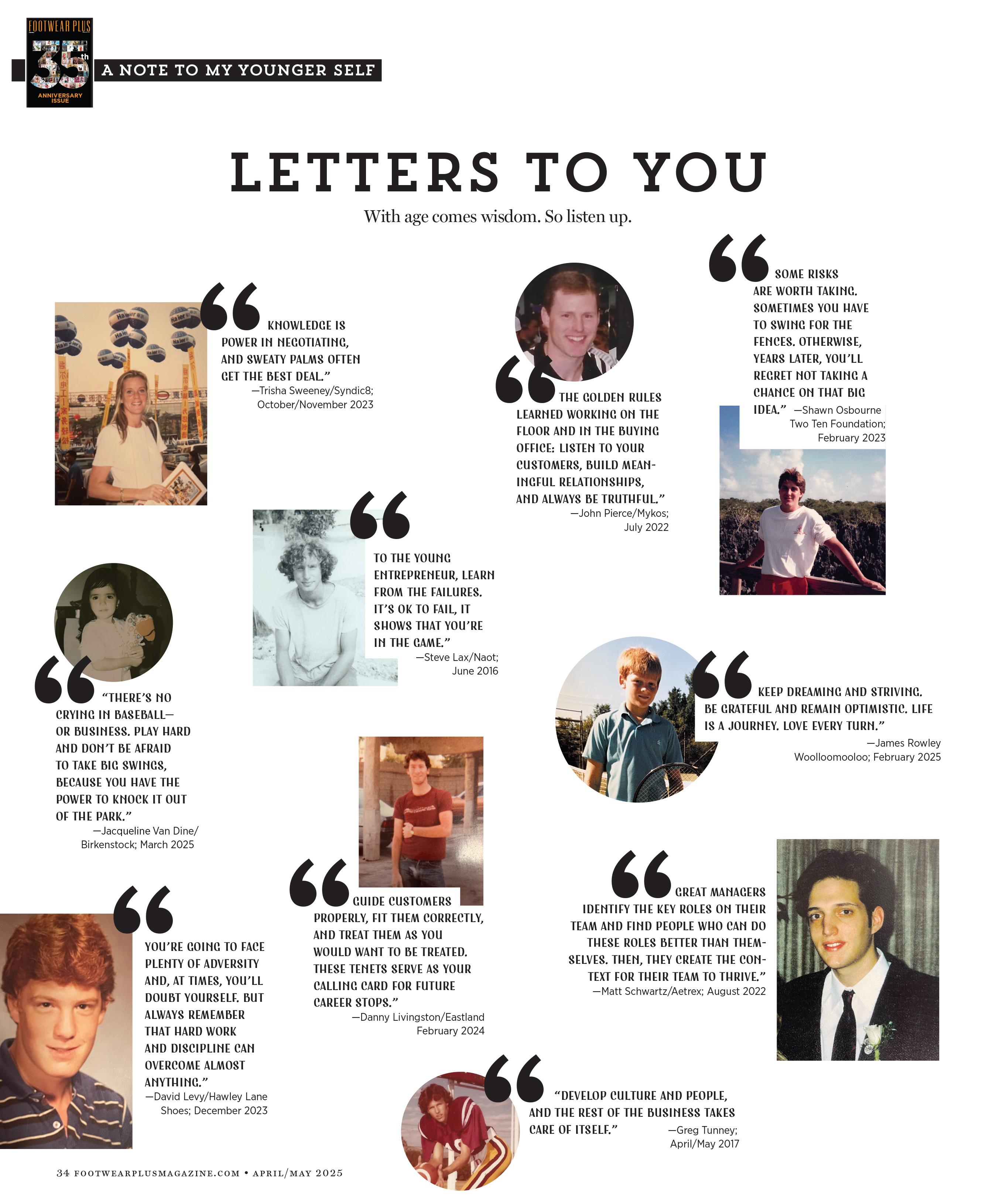

“YOUR BUSINESS PHILOSOPHY IS SIMPLE. PUNCTUALITY IS IMPORTANT. IF SOMEONE IS LATE TO A MEETING, IT IS CANCELLED. NO EXCEPTIONS.”
—Joe Ouaknine/Titan Industries; December 2016
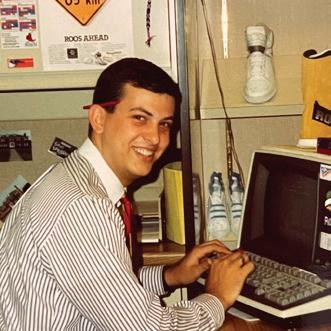
“
WHEN AN OPPORTUNITY IS PRESENTED, SAY YES! NEVER ASK ANYONE TO DO SOMETHING THAT YOU WOULDN’T. AND, MOST IMPORTANTLY, YOU CANNOT DO ANY OF WHAT YOU DO BY YOURSELF.”
—Sam Spears, Ara NA; January 2022
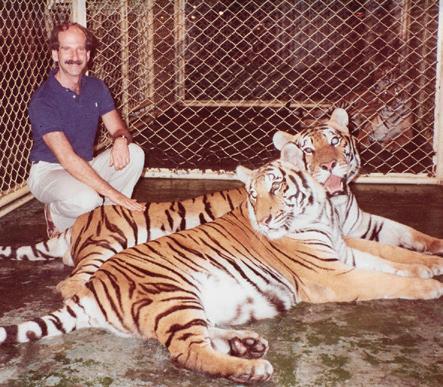
“YOU DETERMINE YOUR OWN FATE. DO NOT EXPECT ANYTHING FROM ANYONE. IF SOMEONE DELIVERS WHAT YOU WANT, PRAISE AND THANK THEM. REMEMBER, THE GLASS IS ALWAYS HALF FULL.”
—Marty Rose/All Black; January 2018
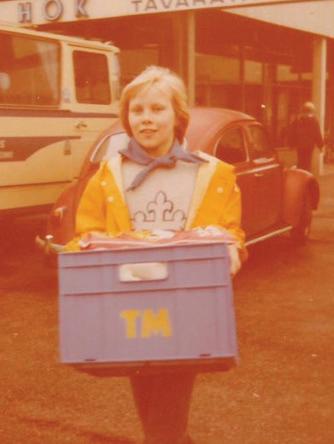
“DON’T TRY TO BE ANYONE ELSE; JUST BE THE BEST VERSION OF WHO YOU ARE. BELIEVE IN YOUR GUT. IT WILL LEAD YOU IN THE RIGHT DIRECTION.”
— Sari Ratsula/Seychelles; August 2017
“TECHNOLOGY IS KEY TO MAINTAINING INVENTORY AND RETAINING CUSTOMERS WHILE INCREASING PROFITS.”
—Mark Denkler/NSRA; December 2024
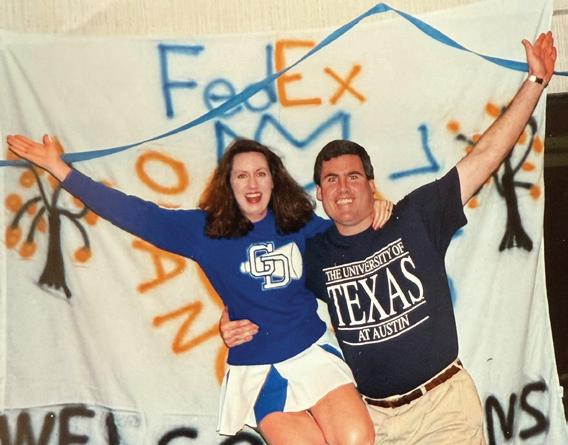

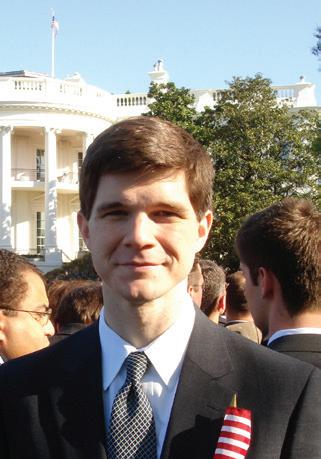
“WE MUST MEET WHATEVER COMES OUR WAY, AND WHEN IT COMES. IGNORING BAD NEWS ONLY LEADS TO MORE BAD NEWS.”
—Matt Priest/FDRA; September 2023
YOU CAN ALWAYS GET WISER, AND YOU CAN LEARN FROM YOUR MISTAKES. GATHERING KNOWLEDGE BUILDS CONFIDENCE, ONE LESSON LEARNED AT A TIME.”
—Fabrizio Gamberini/Vibram; October/November 2021

“THANK YOU FOR BEING OBSESSED WITH THE MOB…THE MORE ADMIRABLE PARTS: FAMILY, LOYALTY, AND KEEPING YOUR WORD.”
—Gary Hauss/IR Show; June 2017

“ “
APPRECIATE AND RESPECT ALL YOUR EMPLOYEES. NEVER FORGET THE DAY YOU DECIDE TO CHANGE YOUR BUSINESS PHILOSOPHY FROM THE CUSTOMER ALWAYS COMES FIRST TO YOUR EMPLOYEES.”
—Laurel Tate/Two Sole Sisters; June 2024
DOING WHAT YOU KNOW AND LOVE HAS NO BOUNDARIES. EVERY EXPERIENCE AND DECISION IN LIFE CREATES YOUR OWN TAPESTRY, ONE THAT CANNOT BE DUPLICATED.”
—John Daher/Shoe Box & Co.; August 2024


“
ALWAYS BE OPEN TO OPPORTUNITIES, WELCOME RISK, AND COVER YOUR DOWNSIDE. DO THIS AND YOUR SHOES WILL TAKE YOU ALL OVER THE WORLD— LITERALLY!”
—Chris Gallegher/Vionic; February 2020
Michael Greenberg was just getting started.
By Greg Dutter

IN 1990 Michael Greenberg was the national sales manager for L.A. Gear, which had taken the market by storm after Greenberg’s father, Robert Greenberg, and his partners launched the brand in 1983. Seven year later, sales had surpassed $800 million annually and the company’s celebrity endorsement roster ranged from Joe Montana to Michael Jackson. L.A. Gear helped invent and cement the fashion/sport lifestyle category.
Like his father, the younger Greenberg had a nose for big brand potential. In fact, he dropped out of college, in 1984, to join L.A. Gear as an account representative. He got no special treatment. He worked his way up the company ladder to West Coast regional sales manager and then national sales manager.
When L.A. Gear ran into ownership issues a year later, the Greenbergs departed but didn’t stew. They picked up right where they’d left off and launched Skechers in 1992, a company that recently passed $8 billion in annual sales and now ranks as the world’s third largest athletic footwear brand. Skechers uses the same fashion/sport lifestyle formula L.A. Gear did, only on a vastly bigger and broader scale. It’s that rare breed of brand that speaks to the masses across nearly all footwear categories, ages, and demographics. It’s the Dallas Cowboys of footwear—America’s shoe brand.
“Our initial thought was that Skechers would be a ‘little’ company, but that thought lasted about five minutes,” Greenberg says. “We have too much passion and energy to think small. By the end of our second year, we had sold almost two million pairs.”
Still, Greenberg says the initial goal was modest: deliver comfortable, stylish, quality, innovative footwear, beginning with a Sport Utility collection for men. “But then women started wearing the styles, and kids were asking for them,” he says. The more, the merrier. Skechers responded by introducing new shoes styles and continued to gain customers. “Instead of offering approximately 100 styles and selling a couple million pairs, we’re now selling around 300 million units a year,” Greenberg says. “Our product line has expanded to include thousands of styles, covering both lifestyle and high-performance footwear.”
Greenberg sensed huge potential early on. Each first in the company’s journey, he notes, was a clear indicator of its growth potential. That included the first TV ad in 1993, which marked the beginning of Skechers’ broader marketing efforts. Then, in 1995, Skechers opened its first retail store in its hometown of Manhattan Beach, CA, and expanded internationally with stores in Tokyo, London, and Paris in 2001. Currently, the company operates more than 5,000 flagships
in more than 120 countries on six continents, each with the same brandspecific look and feel. Plans are to surpass 10,000 stores in the next few years. Indeed, Skechers is fast becoming the world’s shoe brand.
Greenberg counts going public in 1999 and surpassing $1 billion in annual sales in 2005 as key growth milestones. “It felt like this was just the beginning. We have so much potential, the sky is the limit,” Greenberg says, citing inclusion in the Fortune 500 list and marking 25 years on the New York Stock Exchange as two more recent milestones. The latter included the team ringing the opening bell, a bucket list moment for Greenberg. “Still, as we were ringing that bell, I was thinking, we have so much more to do. I can’t wait to get back to work,” he says.
A sense of family is another key ingredient to Skechers’ success, Greenberg says. “In my experience, there really is no other brand quite like Skechers, nor a company that’s as globally connected while maintaining a close-knit, family-like atmosphere. No matter where I travel in the world, I know I’ll find someone I can call a close friend. This is a testament to the way we connect with our team members and partners, as well as how we treat our customers. This combination of global reach and personal touch is what makes Skechers truly special in the industry.”
The family approach extends to Skechers’ extensive charitable efforts. For example, the Skechers Foundation and annual Skechers Pier to Pier Friendship Walk has raised more than $28 million for public education and children with special needs. Greenberg also helped found the Friendship Foundation, a nonprofit mentoring organization. Its future Friendship Campus, the Greenberg Family/Skechers Center, will offer job training, skill building, and continued education for young adults with varying abilities. The non-profit Harrison Greenberg Memorial Foundation, founded to honor Greenberg’s late son, is dedicated to restoring and protecting Manhattan Beach’s Roundhouse Aquarium. In addition, the BOBS from Skechers philanthropic brand, in partnership with Petco Love, has surpassed $12 million in donations to save and support more than 2.2 million shelter pets across the North America, the UK, and Japan since launching in 2015. Skechers also regularly holds adoption events at its stores and recently introduced the Paws for a Cause Design Scholarship, which gives consumers a chance to wear design students’ shoe patterns and recognize their personal shelter pet stories. BOBS has also donated new shoes to 16 million children in need globally. Skechers has also donated millions to disaster relief funds, including for 2005’s Hurricane Katrina, 2023’s Maui wildfires, and last January’s L.A. wildfires.
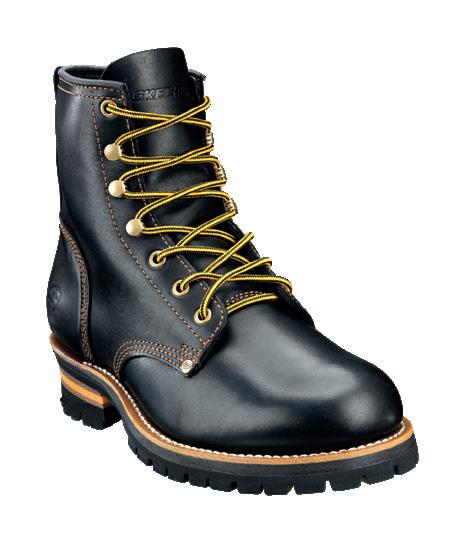
Skechers is famous for Robert Greenberg’s brand-building mantra: “Unseen, untold, unsold.” His son is a devout disciple of that approach. Skechers, a young company at 33, is just getting started, he says. “Not much has changed in terms of our core mission, only now we’re operating on a much larger scale,” Greenberg says. That’s fitting for a company whose name was early ’90s teen lingo for someone who can’t sit still. •
Skechers’ first style was in tune with Grunge.
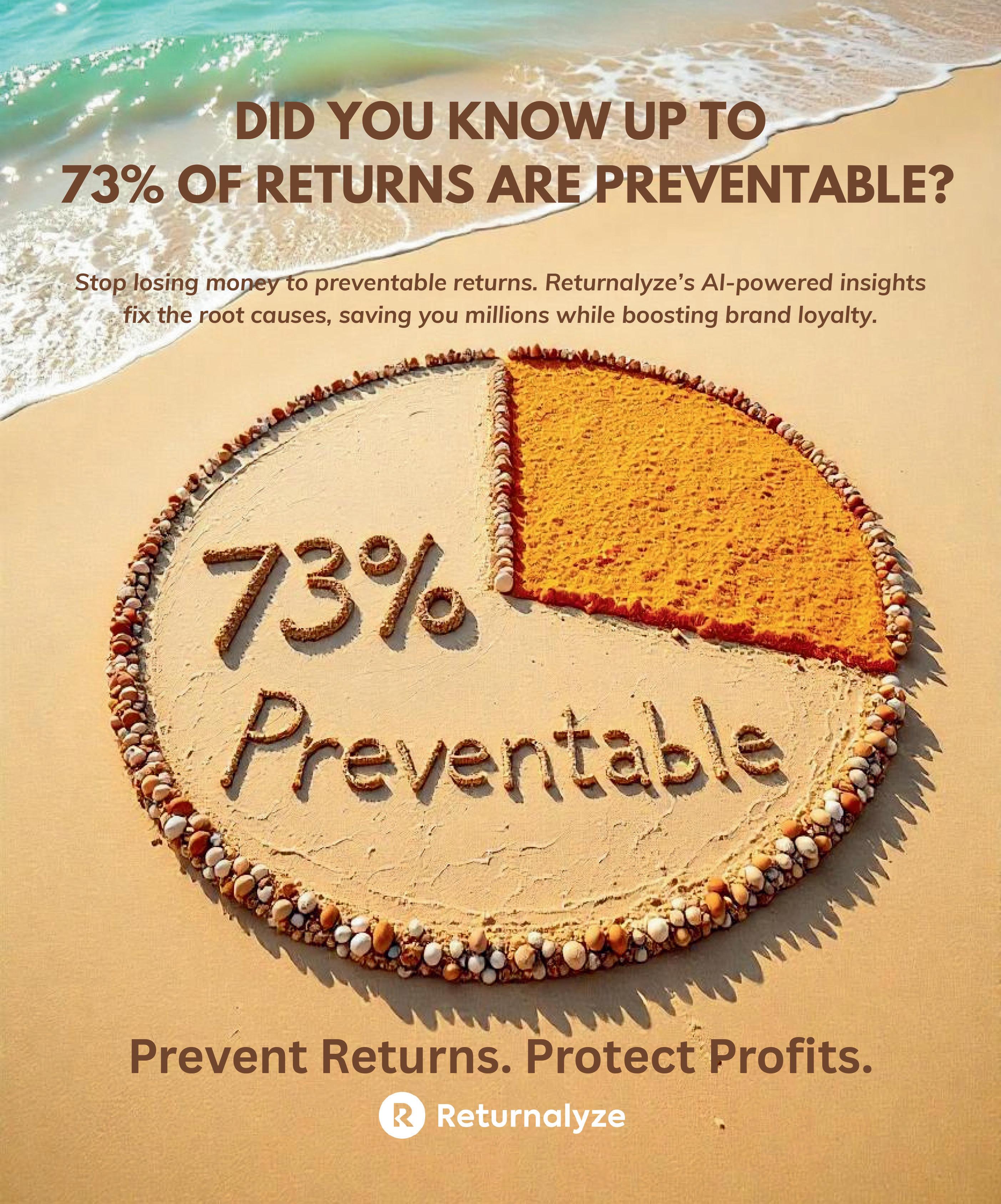
When it comes to retailing, there are certain statements that are worth their weight in gold.
TODD KIRSSIN
GMM, Downtown Locker Room; September 1998
“We are super-aggressive about adding new lines and, yes, there’s risk involved, but you never know when you’re on the cusp of the next New Balance.”
ROBERT SCHWARTZ
Eneslow Shoes; October 1998
“People won’t go shopping unless they need to, so your audience is in a purchasing frame of mind.”
KATHY BRANCH
Fetish; June 2001
“People get too attached to the numbers. They miss out on something spontaneous that they could have done well with.”
ROSCO ROLNICK
Guarantee Shoe Center; October 2001
“Don’t feel bad about taking the customer’s money—take all of their money.”
DANNY WASSERMAN
Tip Top Shoes; February 2007
“Older shoes will be even older next year. Don’t be a collector or want the last penny. Sell!”
SCOTT MEDIN
Nordstrom; February 2008
“Each year out goal is to improve our customer experience. We aim for perfection, but service is an imperfect science, so we continue to renew that goal.”
PETER HANIG
Hanig’s Footwear; owner, October/ November 2006
“If you aren’t on the lookout for new products and ideas, eventually it catches up to you. Today, it catches up even faster.”
MARK JUBELIRER
Reyers Shoes; June 2011
“Selling begins when the customer says no.
JOE LAHOUT
Lahout’s Country Clothing & Ski Shop; January 2013
“Customers are very sophisticated now with smartphones. They know what they want, they know the prices at other stores, and they’re very knowledgeable about products. You’re not going to fool anybody.”
ISACK FADLON
Sportie LA; July 2013
“From the Justin Biebers of the world to the high school kid from across the street to the grandmother coming in with her grandson, everyone is treated equally.”
DAVID ASTOBIZA
Sole Desire; August 2013
“Don’t be afraid to change if your customer is changing.”
TAREK HASSAN
CNCPTS; April/May 2015
“If you don’t always stay at the forefront, you become stagnant very quickly. The consumer will move on, and it will be very hard to get them back.”
ROGER RAWLINS
DSW; January 2019
“When consumers enter a store, the conversation rate is 35 percent while the online rate is three or four percent. Which would you rather have?”
JOHN SCHULER
Schuler Shoes; March 2019
“Every customer is unique and every transaction is different. You have to become their friend and gain their trust, because people don’t buy from people they don’t like.”
MARK WORDEN
Shoe Carnival; February 2022
“As a bricks-first retailer, we believe investing in that brand
experience so families can have a moment of joy while shopping for shoes…Shopping for shoes is a social occasion; it’s doing something fun”
JIM CONROY
Boot Barn; June 2022
“The numbers show that most retail is still conducted in traditional stores. I just don’t understand how so many people have convinced themselves of something that is so blatantly untrue.”
TROY DEMPSEY
The Heel Shoe Fitters; February 2023
“We’re always recruiting. Wherever we go, whomever we meet, we’re always thinking about potential hires…If we bump into a 14-year-old kid who’s sharp, we let them know that if they’re ever looking for a job, they can come speak with us. Think about the impression that makes on a young person.”
JOEY POINTER
Fleet Feet; July 2023
“Retail is not for the faint of heart. You have to continue to adapt and advance. We’re continually evolving our retail theater as a reason to come into our stores.”
GARRETT BRETON
Comfort One Shoes; February 2024
“Grabbing a shoe out of the backroom and handing it to a customer is not service. The boomer generation, in particular, wants an experience where they’re treated nicely by people who know what they’re doing and can actually save them time.”
RYAN FLEMING
Fleming’s Comfort Footwear; February 2025
“Not many people send thank you cards in the mail anymore, but we send them to let people know we appreciate their business.”
Tony Chiappetta of Chiappetta Shoes in Kenosha, WI, saw sales plummet. The team pivoted to online sales. A lot of SEO work moved a large majority of products to its Facebook shopping feeds and added brands to its Amazon Marketplace page.
Virus Takeaway: “Act quickly with conviction and as much information about your unique situation. Also, fail fast. Recognizing a poorly performing marketing campaign, optics, etc. and pivoting to the next idea is essential. Top vendors are key. Those with greater awareness drive demand. Lastly, diversification wins the day. Selling into any channel profitably helps weather demand shocks.”
Isack Fadlon, owner of Sportie LA, closed for more than two months—devastating for a business that thrives on consumer experience. Pandemic pivots included developing a more robust online experience.
Virus Takeaway: “It may sound cliché, but these last couple of months have put front and center what we take for granted: family time, friends, neighbors, teachers, and just being together. I’m hopeful that we will not easily forget the lessons of the past few months. They’ll help us build better communities and, ultimately, a world that prioritizes goodness and compassion above all else.”
Libby Hartung, owner, Zelda’s Shoe Bar in Portland, OR, put deliveries on hold and applied for government grants and low-interest loans. Then, a rep suggested a virtual trunk show on Zoom for select customers. A Facetime shopping trial, pick-ups, and appointment shopping followed.
Virus Takeaway: Zoom, personal videos, and intimate walk-throughs confirmed that Zelda’s is all about relationships. “Amid di cult times comes opportunity. Really knowing what my customer likes and wants, and having meaningful conversations about that, wins over point-and-click any day.”
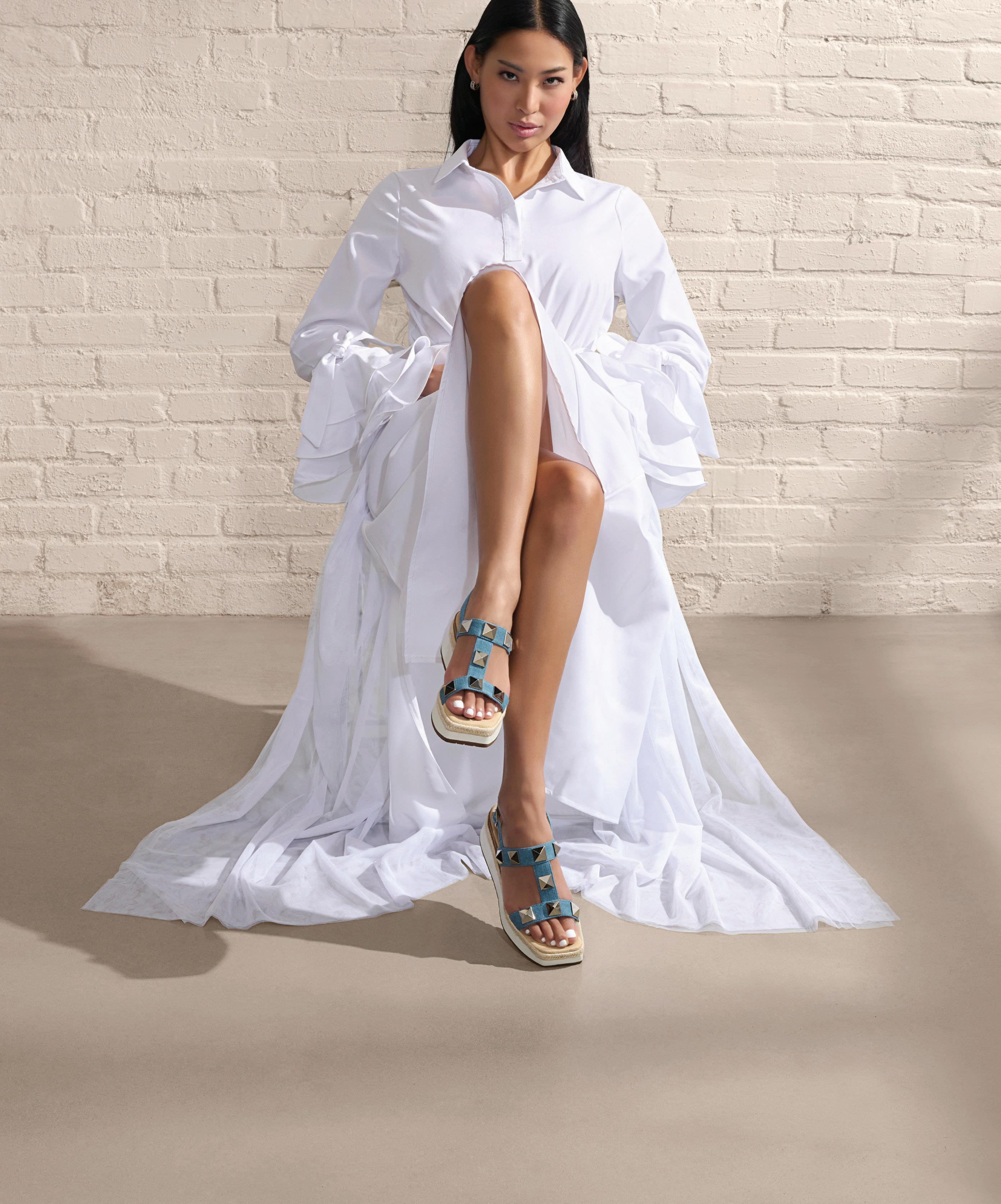
ShoeBuy.com Founder Scott Savitz continues to set the pace in the start-up universe.
NOTHING VENTURED, NOTHING gained best sums up the approach—and massive success—of Scott Savitz over the course of his illustrious venture capital career. The exec is now Managing Partner of Data Point Capital, a Boston firm he founded in 2012 with the aim of being involved in multiple start-ups building innovative, scalable, and fun businesses.
“We look at 40 to 50 deals a week, and every couple of months we come away with another great business that we invest in, where I often become a director and a partner to help in any way Data Point can,” Savitz says, noting the current portfolio consists of 30 “terrific” companies. “We’ve had a number of very fruitful investments, and instead of working with one very fun company, I’m now working with numerous very fun companies.”
Those include:
• online sports betting leader DraftKings, which now has a market cap of more than $18 billion
• leading online mattress seller Resident, which reached $1 billion in annual sales within six years, with $100 million in profit (it was acquired by Ashley Furniture last year for close to $1 billion)
• Paintzen, an on-demand marketplace for painters that grew 800 percent since Data Point invested and was acquired in less than two years by PPG Industries
• Rent The Runway
• CABA Design, one of the largest online customized furniture retailers
• Returnalyze, a software company that allows companies such as Wolverine Worldwide, Brooks, and Famous Footwear, among many others, to significantly reduce returns as well as improve customer experience.
“We have numerous other businesses in cyber security, AI, ad-tech, futureof-work, and other fascinating categories,” Savitz adds.
That’s an impressive line-up. Yet Savitz still regards ShoeBuy as one of his favorite unicorns. The site launched in 1999, and at its height about a decade later, featured 1,000 brands, 800,000-plus products, and more than $3.5 billion in inventory—all available at the click of a mouse. At the turn of the millennium, online retail was in its infancy; there were far more doubters than believers that consumers would buy shoes en masse before trying them on. Boy, were they wrong.
Savitz believed differently, even if he gives credit for the initial idea to a friend who struggled to find shoes for himself and family. As ShoeBuy lore goes, Savitz thought about his friend’s difficulties and determined that if he could partner with a terrific selection of brands and offer their products in a convenient manner, he’d have the makings of a great business. Boy, was he right.
Savitz dreamed big from the onset. His start-up research showed that the mail order shoe business had been about $1 billion annually for years. Plenty of consumers were already ok with buying shoes before trying them on. ShoeBuy, he believed, could be a print catalog on steroids. In a 2010 Footwear Plus profile, Savitz cited ShoeBuy’s working mantra—“put the customer front and center in

everything we do and keep trying to create a better shopping experience”—as key to the company’s success. His early innovations included a sister site featuring 200 designer labels, introducing an iPhone shopping app, and creating a mobile shopping site compatible with an array of smartphones. Additional breakthroughs added an advanced search function that allowed shoppers to narrow their selection by size, width, color, price, heel height, country of origin, etc. There was also another sister site, Product Express, which highlighted more 10,000 products, all with free overnight shipping. ShoeBuy added sunglasses, watches, flowers, activewear, and outerwear to its mix because consumers asked, and the company delivered. In fact, Savitz has never claimed to be a rocket scientist or a shoe savant; he and his team just listened to customers, which made ShoeBuy much smarter.
Savitz has maintained a customer front and center formula. “This has without a doubt proven a winning thesis and something we not only look for in the ethos of the companies we invest in but are always looking to see ingrained in the company’s DNA,” he says. Other best practices developed at ShoeBuy include trying to become profitable on “very little outside capital”; continually innovating and looking to improve the consumer experience; paying attention to the customer already in the door rather than just trying to get more customers into the store; and being obsessed with what customers are saying and doing, using metrics, data, and customer feedback as a compass. “We look for incredible innovative teams that share many of these characteristics,” Savitz says. “As such, we don’t think it’s a coincidence that our average companies have grown over 100 percent annually since we invested and that so many of our businesses have not only quickly become category leaders but have created significant value for everyone involved.”
“
I
-Scott Savitz
ShoeBuy will always hold a special place in Savitz’s heart. It was one of his first unicorns, after all. He misses the “incredible employees who made us great and all our great vendor partners. I also miss getting a discount on shoes. I had a blast with ShoeBuy, and I loved the journey.” Happily, he still has a toe in the biz with Returnalyze. He’s very involved in working with brands to decrease returns and improve customer experience—a platform ShoeBuy would have “embraced in two seconds.”
Once a “shoe dawg,” always one, according to Savitz. “I’ve maintained so many wonderful friendships from those days. That’s something I could not be more grateful for,” he says. “There is life after shoes. But, if you ever miss the industry, just look down at your feet.” •
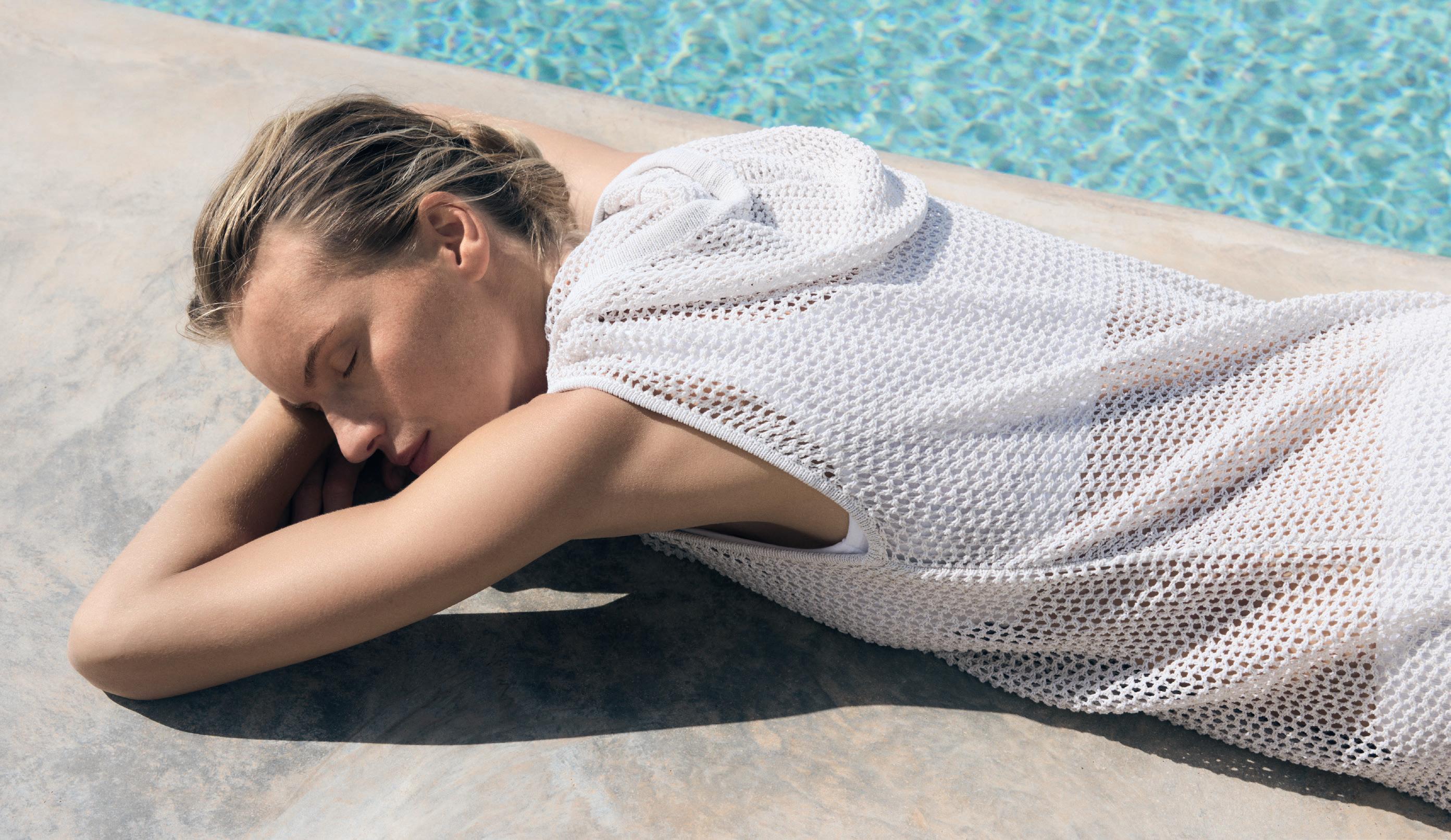
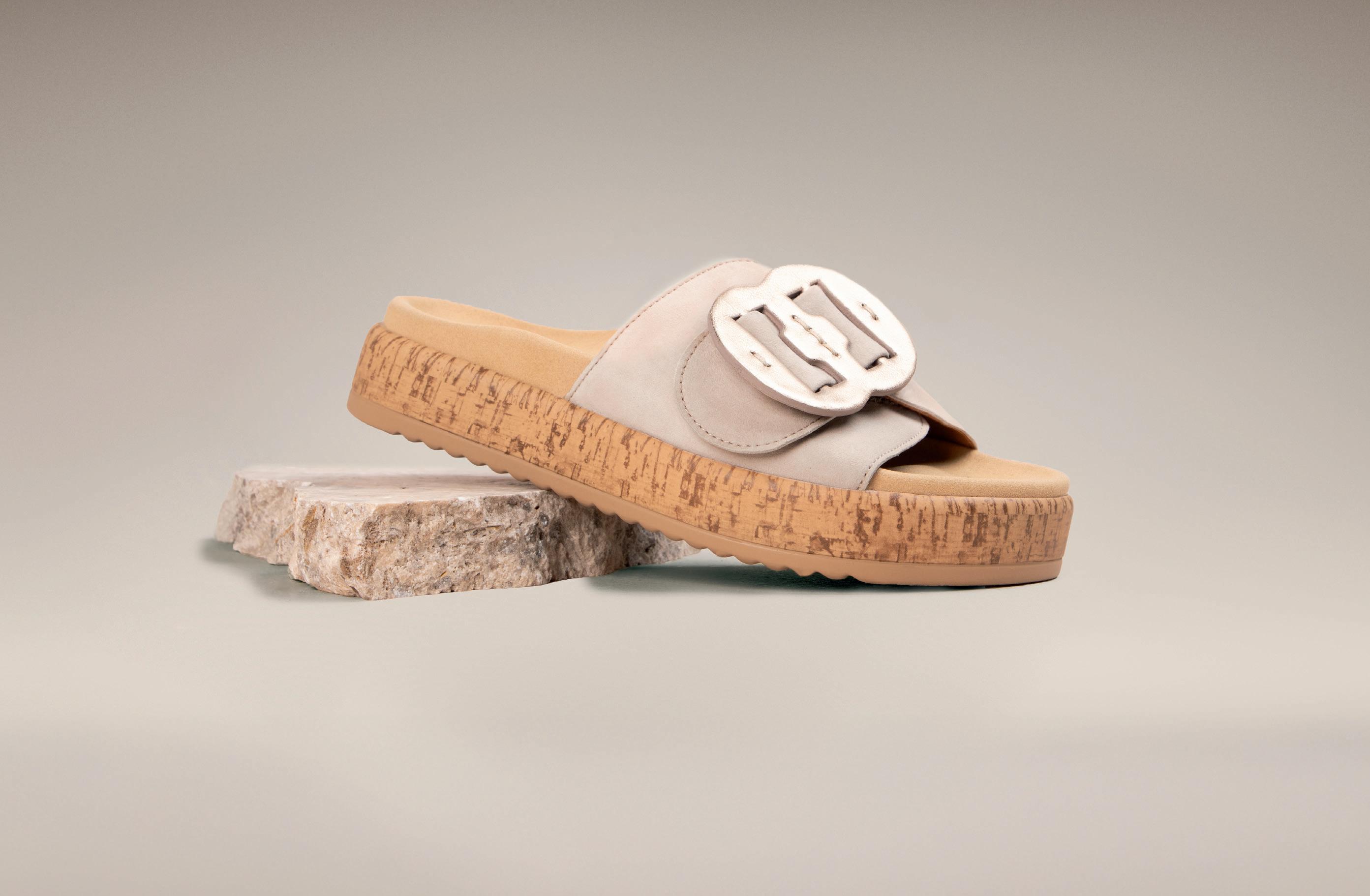
Aetrex Worldwide CEO Larry Schwartz was just booting up what would become a dramatic transformation of his family-owned company. By Greg Dutter
IN 1990 Larry Schwartz was enrolled in Emory University’s MBA program with a concentration in marketing. He had plans to do something entrepreneurial following graduation but wasn’t set on a particular industry. He also got engaged that year and enjoyed watching his beloved New York Giants go 13-3, leading to the team’s Super Bowl XXV win over the Buffalo Bills. (“Thank you, Scott Norwood” for the missed field goal as time expired.)
The following year was memorable for Schwartz, as well. He got married in 1991 and, in the midst of a recession, landed a job in sales at a small computer company that made 380X and 286DX machines. He also joined Prodigy, one of the first consumeroriented online services, and began exploring the start-up days of the internet. Perhaps it was a sign of what was to come when he pivoted, in November, to Apex Foot Health, his family’s New Jersey-based footcare business. Over the next 35 years, the business evolved into Aetrex Worldwide, a company offering footwear and technology like no other. (They designed websites for retailers and more recently proprietary Albert 3D in-store foot scanning devices and data services).
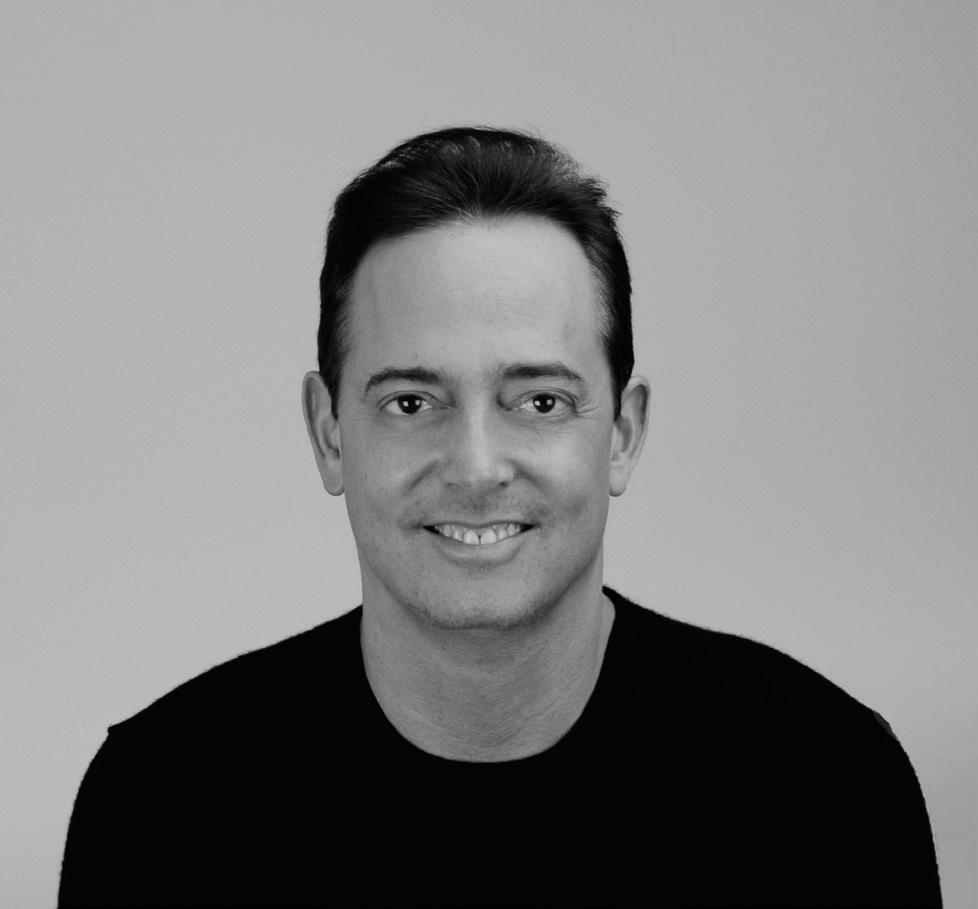
Schwartz admits there was no master plan. It happened organically. “It’s very rare that someone has a vision at that age of how their life will unfold,” he says. “I couldn’t see where our company was headed then.” He cites the wisdom of Steve Jobs: “He said you can only connect the dots by looking back. When you’re going forward, you can’t.”
Schwartz has pressed forward since day one, although it was “slow going” in those early years. Back then, Apex manufactured a broad line of orthotics and related footcare components for shoe retailers, Veterans Affairs, and the medical market. Schwartz was trying to grow sales, improve efficiencies, and shift into consumer products. “My dad knew how to make stuff, and back then being a manufacturer was a point of differentiation,” he says, noting that a turning point occurred about eight years later, when the company launched the health portal Foot.com and soon after started designing websites for retailers. “The internet was really growing, and that’s when the light bulb went on that maybe this could be
cool for us,” he says. “Technology has since become a big part of our business.”
Foot.com was a gamechanger. These were the pre-WebMD days, and major publications recognized it as the best content site for foot health. “We grew about 40 percent that first year,” Schwartz says. By 2001, though, most businesses had websites, and that revenue stream dried up. Time for another pivot. The team met Fitrex, a small Israeli company that made a pressure plate foot scanner device. A year later, Aetrex introduced its first scanner for shoe retailers and pedorthist facilities along with custom fit insoles. In 2003, The Walking Company added the scanners. Many independent retailers followed. (To date, the company has placed more than 12,000 scanners worldwide and performed more than 50 million unique customer foot scans.)
In 2005, Aetrex began making a full range of comfort and wellness footwear. “That’s when we started to really grow, which has allowed us to do more in the years since,” he says. “We’ve always been process-focused and have tried to get better incrementally with everything.” While the company is always working on new technologies and shoes, it’s tough to know what’s going to be important from a product standpoint five years in the future. “That’s why our focus has been on trying to get better in all aspects of business every day,” Schwartz says.
It’s just crazy how di erent the world is today. The changes between then and now are more dramatic than at many other points in history, and thanks to the technological revolution, the pace is only increasing. I’d go back and start learning how to code. That’s where the future is headed.
Amassing millions of unique foot scans is the latest revenue stream for Aetrex. The company can use a 3D or 2D scan of a customer’s foot to recommend specific brands and styles that will fit their feet best based on Aetrex’s accumulated sizing data. This leads to fewer returns. The data is also of value to footwear manufacturers to make better-fitting shoes. “We’re working with a lot of big brands to help them develop smarter shoes, as our Foot.com data shows precise sizing,” Schwartz says. “We’re thrilled to work with other companies to help them make better shoes” because it benefits the entire industry, he adds.
There are corporations that resist innovation; they do essentially the same thing they did 35 years ago. Not Aetrex. “Some people build huge companies doing that,” Schwartz says. “We’re different. Scanning is the centerpiece of our business, and everything extends outward from that.” •


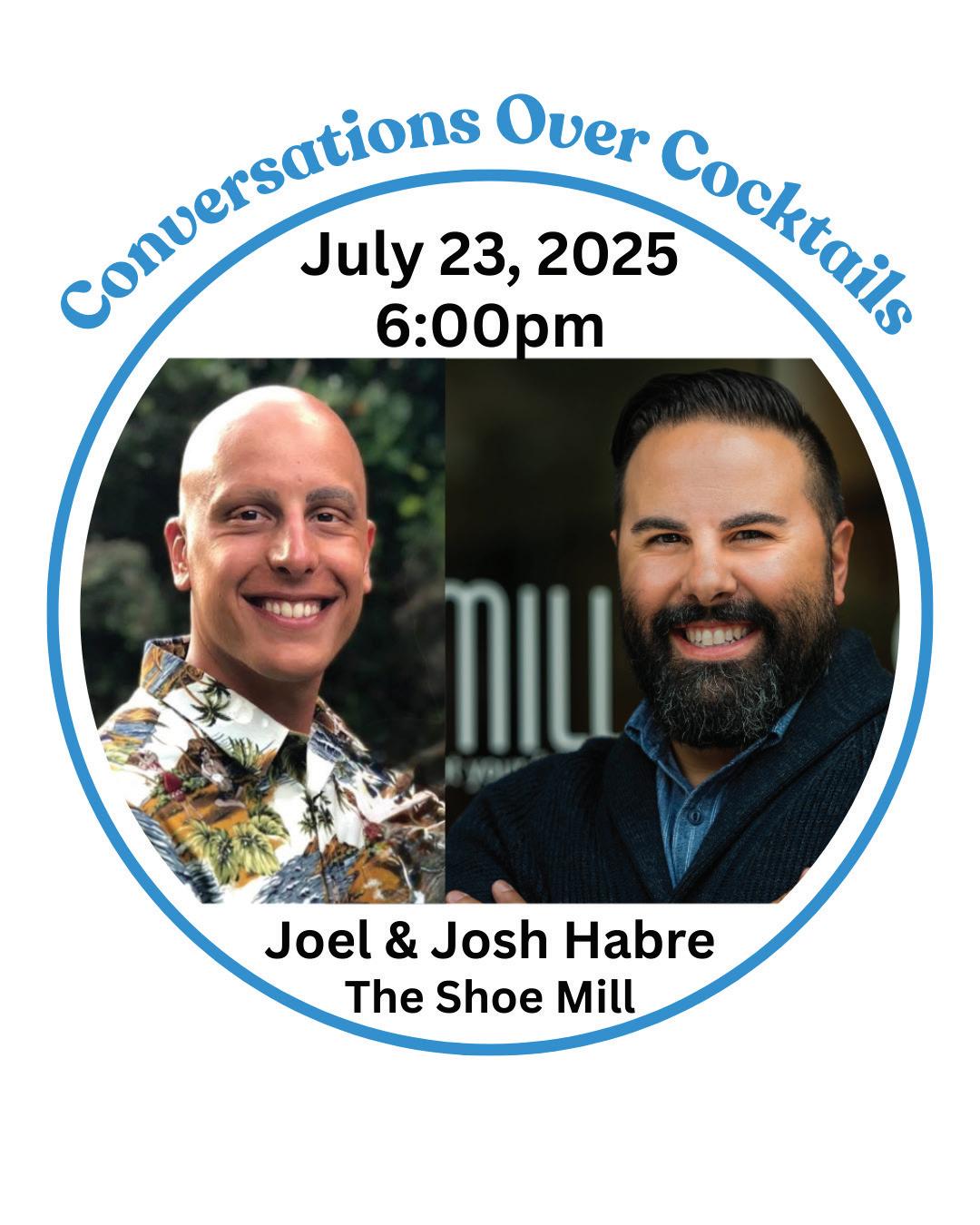


Ryka Founder Sheri Poe has gone from brand birther to baby whisperer.
By Greg Dutter
SHERI POE IS a mother of four children. She also gave birth to Ryka, the first “for women, by women” athletic brand launched from her kitchen table in 1987 featuring shoes specifically designed for the gender’s unique foot shapes, muscle movement, and build. Poe, a big fan of step aerobics at the time, was suffering shin splints and decided there was a better way. The brand was equally a trendsetter in marketing. Poe, a survivor of sexual assault, created the Ryka Rose Foundation in 1992, a non-profit organization dedicated to stopping violence against women—also then a first in athletic footwear.
About 16 years later, Poe led the introduction of MBT into the U.S. market. Sales of the rockersoled exercise shoes zoomed from under $10 million to $53 million in two-and-a-half years. Then she moved on to HSN selling P.O.E (Power of Essentials), a namesake athletic footwear brand. That was followed, a few years later, by leaving shoes behind and launching P.O.E (Period of Elements), a beauty care company.

Poe hasn’t called it a career just yet. Her latest endeavor is Om Baby, a Los Angeles-based postpartum and newborn services company that helps create a healthy and welcoming environment for families. The company took its first baby steps in early 2013 and has since blossomed. Poe is referred to as the “baby whisperer” and is considered a go-to source for all things newborns in L.A. She has amassed a strong following that includes numerous celebrities. NDAs prevent her from any name dropping.
“I decided to do what I’ve always loved doing: helping expecting and firsttime parents,” Poe says. “It’s always been a passion of mine, and I decided to make it a business.” She adds, “I love it. For me, making a difference in the lives of women has been my passion my entire life.”
Poe has tapped into all her previous brand-building skills in getting Om Baby up and running. “I standout in a L.A., a big city with God knows how many others in the pre- and post-natal space, because of my decades of creating businesses and noteworthy brands,” she says. “I took all those skills that I learned launching shoe and beauty care businesses and adapted it to this service model. And even though that’s different than a product model, Om Baby has definitely become a brand. I’ve really carved out a niche, and that’s always an important aspect to long-term success.”
Another key asset to Poe’s latest entrepreneurial endeavor: never being afraid. “The one trait I’ve always had is to be fearless about believing in myself and stepping into something new,” she says. “That’s what I did with Ryka, MBT, and my other businesses. I just did it.” Poe, who never
graduated college, says she learns by doing.
“It’s always been a sink or swim scenario with me,” she says. “I’ve learned from the businesses before and brought that to my latest endeavors. Fortunately, for me, I learn pretty quickly what works and what doesn’t.”
What Poe has learned could be a MBA syllabus. It spans building companies from scratch, fundraising best practices, the pressures of going public quickly (Ryka), innovative marketing techniques, management skills, negotiation tactics, breaking into retail, overcoming challenges (expected and unexpected), handling loads of stress, juggling work and family, and knowing when it’s time to move on, to cite a few lessons. The latter two are what drove Poe to switch from products to service. Despite her previous ventures all being successful, the stress level just snowballed. Layer on the many promises were made but were never kept and Poe had an epiphany: Chasing a moving goal line just wasn’t worth it anymore.
“After decades of working for someone else, I finally decided to follow my passion and move away from just making money and live a life of less stress and do something meaningful,” Poe says, noting that she has to be passionate about what she’s doing or she can’t do it. “When that line of work became more stress than passion, I moved on.”
Poe couldn’t be happier. She makes her own schedule of in-person and virtual consultations and only answers to herself. “It’s stressless and joyful as I get to make a difference in first-time parents’ lives,” she says. “Clients are so grateful, and that’s so rewarding at this stage of my life. It’s the best retirement gig I could possibly have.”
Of course, Poe misses the shoe industry, especially the many close friends made over those years. Many keep in touch and some still request her as a reference. She muses at times about holding a virtual reunion. Poe is especially proud of Ryka, which is still going strong as a subsidiary of Caleres. In fact, she recently consulted with the brand on a 35th anniversary collection. “The shoes are great; I own five pairs,” she says, adding, “I’m very proud of Ryka. So many brands come and go, but I believe this one was just meant to be, which is attributive to its unique women’s-only heritage.” Indeed, Ryka was a labor of love, and the nurturing Poe provided in its early years to fast becoming a market leader served as the solid foundation to decades of longevity.
That said, Poe is living a “great life” post-shoes. “I love my life and what I do at Om Baby,” she says. “A bonus is my children seeing their mother making a difference.” Poe adds, “I plan to do this until I don’t have another breath in my body. I’m not the retiring kind. How boring would that be?” •
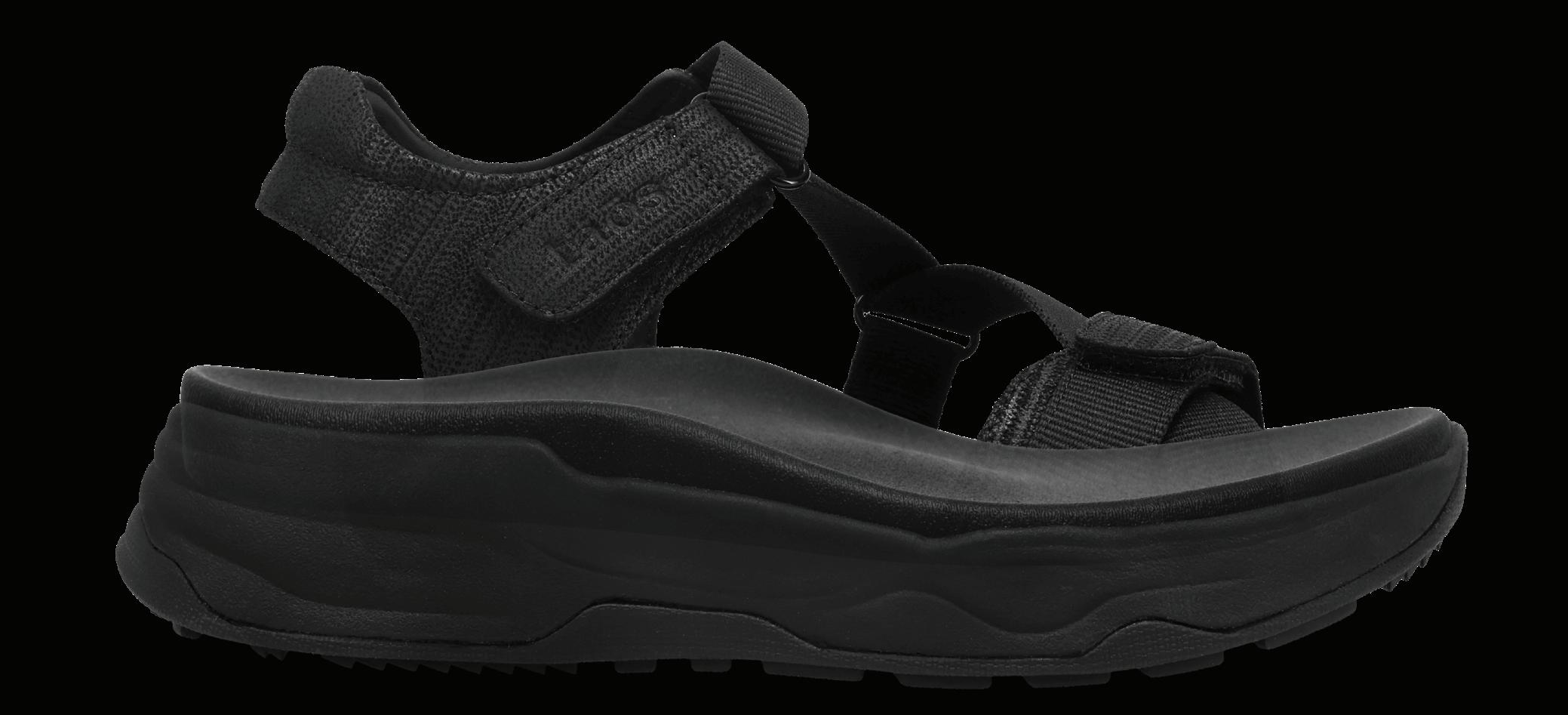
Sam Spears, president of Ara North America, was across the pond and pondering the next breakthroughs in athletic footwear design. By Greg Dutter
IN 1990 Sam Spears was 23 years old, living in London, and working for Pentland Group as vice president of R&D and design for its Pony subsidiary. Pentland had recently purchased the brand from Adidas, where Spears, as Designer and Product Manager, had been busy creating performance footwear for NFL, MLB, and NBA players and the fans who emulated them. London was worlds away for this Tulsa kid, but he loved it.
“The West End theatre district, the museums, concerts at Wembley, all the historical sites. I was in heaven!” Spears recalls, adding that he Rollerbladed across every inch of the city in his spare time. “Canary Wharf’s spacious marble sidewalks and courtyards were the perfect place to skate,” he adds.
Spears ventured beyond London whenever he got the chance. He explored England, Scotland, Ireland, and Wales thoroughly. To date he has visited more than 100 castles and most of the major pre-Roman and Roman sites in the British Isles. “The UK is completely amazing— thousands of years of history. It would take a lifetime of dedication to discover its entire richness,” he says, noting that since 1990 he has visited London at least once almost every year.
Spears was also dedicated to his job—designing cutting-edge performance footwear. “I was young, single, and full of energy and ideas—more ideas than there were hours in a day,” he recalls. “I’d work 16 to 18 hours a day, communicating with our Taiwan factory via teletype and fax to send sketches, technical drawings, and specification sheets.” During that time, Spears introduced what he likes to call the “Return of Retro,” creating the Acti-Lite energy return system tennis collection, which used Pony’s chevron logo as an integral heel-locking mechanism. He also designed “ultra-premium” soccer cleats for Premier League teams and players
I’d invent Amazon and hire Je Bezos to run it. I’d buy a suit of custom-made armor, which I’ve always wanted but never allowed myself to splurge on. And I’d tell myself to slow down and enjoy each day more. All that aside, I’ve been extremely fortunate in my career, so I wouldn’t change anything that I’ve done. It resulted in my being where I am today, for which I am very grateful.
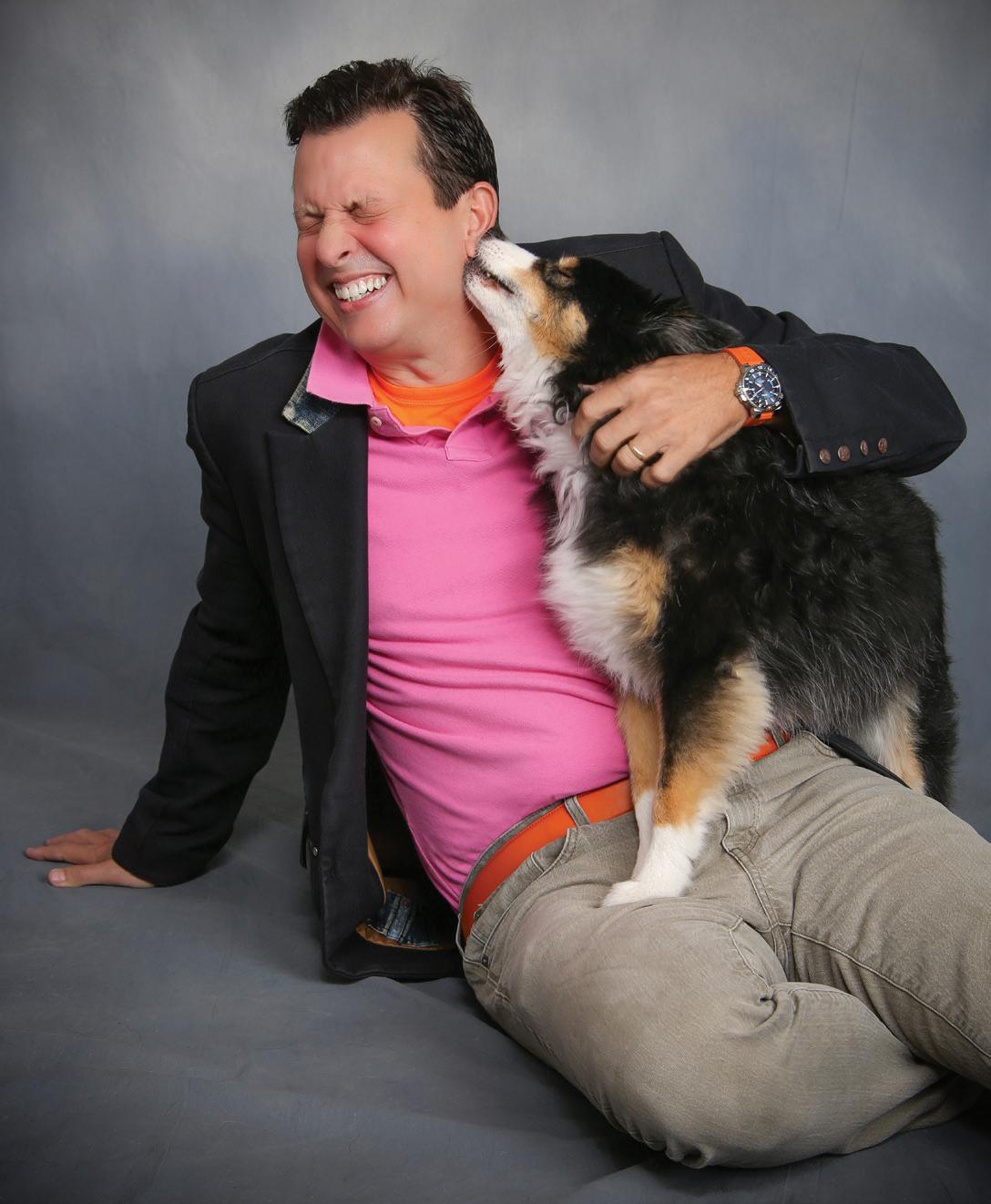
signed by Pony. Last but not least was the partnership with designer Michelle Fossard on the “Boxercise with Sugar Ray Leonard” aerobic shoe, complete with workout video.
Where did Spears envision himself working decades later? It just so happens that his then-boss asked him to create a “fully typed” 25-year career plan. “Part of my dream was to work for Adidas, first in its Hong Kong Development office and then in its global headquarters in Germany,” he says. Spears knew he was young to be a VP at a global brand. Nonetheless, his long-term plan was to be president of a global performance footwear brand by age 40 and, at 45, to launch his own performance brand based in Paris.
It didn’t quite pan out that way, but Spears has helped introduce breakthrough technologies at powerhouse brands, including Ecco, Keen, MBT, Ariat, and, for the past decade, Ara. His team’s latest product breakthrough is Ara’s Motion collection, technical walking shoes, developed in partnership with Cologne’s Sport University. Indeed, Spears continues to build an impressive product and sales legacy—all with a smile on his face. Few have as much kinetic energy and can-do positivity. When he enters the room, it’s like a hit of oxygen. He knows of what he speaks, and he’s not afraid to tell it like it is—nicely.
Here, for example, is Spears’ take on how the industry has changed since 1990 for good and bad. “For good: imagination and creativity have only grown since then,” he says. “I’ve always said that in this industry you’re only limited by your imagination.” For bad: AI, to some degree. “I’m concerned that as technology advances and people look for the easiest solutions, we’ll lose our ability to imagine and create,” Spears says. “The phrase, ‘Just type it into AI’ sends chills down my spine. However, AI as a tool to start exploring solutions can enable mankind to reach new heights.” •

Leading execs have had a lot to say about key issues and trends over the years, and shared plenty of wisdom gained from decades of shoe industry experience.
“The best training I ever had to do any job was through all my years working at retail. It was like living through 10 years of a focus group.” —Bob Infantino, president, Clarks Companies NA; June 1997
“The best wholesalers are great retailers who understand the mechanics of retail and what it takes to be successful and profitable. You learn what it takes to work 10 hours a day, putting shoes on people’s feet and understanding how consumers react to the different types of products. You also learn retail math and appreciate the margins a retailer works on and understand what they need from a manufacturer to be successful.” —Dave Quel, president, Ecco USA; Apr./May 2019
“The word urban is so overdone. You don’t say ‘suburban’ footwear.”
—Jeffrey Bernstein, sales manager, Avirex; Sept. 1999
Everybody—I think even my mother—knows who Snoop is.”
—Killick Datta, CEO, GBMI; July 2004
““Changing from a very model-esque advertising approach to featuring authentic women is a way to connect to a much broader audience. I also want my daughter to believe whatever she looks like is great.” —Ayelet Lax Levy, president, U.S. operations, Naot; Apr./May 2023
“I’d rather pay our factories more and be more focused in our distribution than just running numbers. I think one of the saddest aspects about our industry today is that it’s more about numbers than the passion of the shoes.” —Glen Barard, CEO, Taos; Oct./Nov. 2013
“The business practices of Amazon as they exist today do not give somebody the certainty that they are buying from an authorized source of the branded product. The trust between us and our end user can never be compromised. That’s why we will be encouraging consumers to buy Birkenstock products only from authorized retailers—to help ensure that trust.” —David Kahan, president, Birkenstock Americas; Sept. 2016
“It’s important not to have a big carbon footprint. But at the end of the day, the material has to go somewhere, because you can
If a business can’t truthfully claim that it enhances the quality of life of everyone it touches, then it should go back to the drawing board. Why else should a business even exist?” —Mandy Cabot, cofounder, Dansko; Apr./May 2025
“It’s humbling to see how much of a difference Soles4Souls has made in the lives of others—just with the gift of shoes.”
—Wayne Elsey, founder, Soles4Souls; Aug. 2005
“Cause-related marketing really boomed in the last 12 months. All of a sudden it was, bam, everywhere.” —Blake Mycoskie; founder, Toms; Feb. 2007
“There aren’t old women anymore. Making them happy and fashionable is a better approach than offering another ugly and depressing comfort shoe.” —Martin Berendsen, president, Inuovo; Dec. 2012
only make so many park benches out of recycled bottle tops or whatever. Cirql (midsole foam) is true circularity—a very intended pun—and a total breakthrough.” —Glenn Barrett, CEO/founder, OrthoLite; Apr./May 2022
“(In 20 years) everything will be green. It will become clear that taking care of the earth is profitable…more green initiatives, such as solar power (as we do), energy conservation, zero waste, and sustainable manufacturing.” —Richard Polk, owner, Pedestrian Shops; April/May 2010
“If I wasn’t optimistic, I’d fail. Coming into the office only to sit in a corner and cry isn’t an option. You have to be optimistic in this business.” —Jason Brooks, CEO, Rocky Brands; June 2022
Never think about your last trip—only think of the next one.
—Marc Fisher, CEO, Marc Fisher Footwear; Dec. 2007
Don’t let the goons get you down.
—Je Kelley, founder, Sanuk; Feb. 2008
Work hard, be honest, and enjoy what you do.
—Bob Campbell, CEO, BBC Intl.; Feb. 2009
Calvin Coolidge: Persistence and determination alone are omnipotent.
—Edward Kanner, CEO, Kanner Group; Jan. 2010
Make decisions without regret so you can enjoy life. You only go around once.
—Marcia Kilgore, founder/CEO, FitFlop; Oct./Nov. 2010
To paraphrase Tony Hsieh: There’s a di erence between knowing the path and walking the path.
—Luke Chen, CEO, Alegria; Mar. 2012
FIDO, an old infantry saying that stands for Forget It Drive On.
—Tom Berry, exec VP, Tecnica Group; Jan. 2013
Our deepest fear is not that we are inadequate, it’s that we are powerful beyond measure.
—David Kahan, president, Birkenstock Americas; Dec. 2013
Go for it. —Jim Van Dine, president, Hoka; Aug. 2014
Don’t let your fears hold you back.
—Dave Powers, CEO, Deckers Brands; June 2016
So ends another wonderful day in the shoe business.
—Kevin Bosco, president, Bos. & Co.; June 2017
Our company motto: Making friends one pair at a time.
—Bruce Katz, CEO, Samuel Hubbard; Aug. 2017
The customer signs our paychecks.
—Connie Rishwain, president, Vionic Group; Feb. 2018
Hard work and persistence overcome most obstacles.
—Nancy Richardson, CEO, SAS; Dec. 2019
Work hard and play hard.
—Jacques Golbert, CEO, Pajar Canada; Jan. 2022
No other success in life can compensate for failure in the home.
—Greg Tunney, CEO, Manitobah; Jan. 2023
Always find the good.
—Ayelet Lax Levy, president, Naot; April/May 2023.
Go big or go home.
—Kitty Bolinger, president, Dansko; Oct./Nov. 2023
If you’re not the lead dog, the view never changes.
—Tony Adams, president, Halsa; Mar. 2024
Attitude is a little thing that makes a big di erence.
—Rich Rask, president Rieker USA; June 2024
What’s it going to matter in 30 years? Go with the flow.
—Josh Habre, CEO, ERHCo; Dec. 2024
“Those letters set a very bad precedent, and it’s also a very bad strategy. Most brands got their start with an independent somewhere before they ever got to Nordstrom or Zappos.”
—Rusty Hall, president, Mephisto USA; Sept. 2023
“It was a shock. I don’t think I ever lost a line of shoes in 50 years for no apparent reason.” —Stanley Eisenman, owner, Stanley Eisenman’s Fine Shoes; Aug. 2023
“Like many specialty retailers, we’re a family-owned business, and we also recognize the integral role they play in our overall success. A lot of their customers, for example, are elderly and need more assistance in finding the right shoes and proper fit. Where else can they receive that expert service?” —David Ben Zikry, CEO/cofounder, Spring Footwear; Jan. 2024
“While some of our competitors don’t like it when I sport my “No DTC” cap at trade shows, I strongly believe that if we’re to be true partners with our retailers—the ones who brought us to the dance— then we can’t compete directly against them.” —Prasad Reddy, CEO, Twisted X Global Brands; Jan. 2025
“I’m probably considered the biggest crybaby about brands’ DTC sites and, specifically, the discounting. Are they partnering with us in good faith, or are they letting us serve as a showroom and then stealing customers? We work too hard to create new customers for our brands. So, when a customer is ready to buy another pair and discovers it’s being sold 25 percent off on a DTC site, we’ll likely miss that sale, as well as probably lose that customer entirely.”
—Troy Dempsey, owner, The Heel Shoe Fitters; Feb. 2023
“Ten years ago I said, one day customers will put their foot on their screen and order shoes in the right size.” —Gary Weiner, owner, Saxon Shoes; Apr./May 2010
“Data is king.” —Evan Schwartz, president, Aetrex; June 2023
“There are more mistakes you make in a career than you can ever count. And they are painful when you’re making them, but scar tissue becomes valuable later in life. It only makes you stronger”
—Timothy O’Donovan, CEO, Wolverine Worldwide; Feb. 2007
Balancing the full-time jobs of mother and store owner put Lori Andre’s parenting skills to the test. By Greg Dutter
IN 1990 Lori Andre, mother of two children under age six, was pregnant with her third child. She was busy . Yet somehow, she was also running her own Chicago-based boutique, Lori’s Shoes, then in its seventh year and on the precipice of rapid growth that would lead to two additional area locations.
“Those were definitely challenging times, but when you’re young it’s much easier to do,” Andre says. “Would I do something like that today? Doubtful.”
Making matters more challenging were a recession, the savings and loans crisis, and the onset of the Persian Gulf War. “There were a lot of job cuts, and consumer pessimism was high; 1990 was a tough year,” Andre says, adding that the climate felt similar to today’s. “When consumer confidence dips really low, they pull back on spending.”
Fortunately, Andre didn’t have to navigate the challenges alone. She had a “phenomenal” nanny who worked for her family for many years and a husband who doubled as her business partner. The couple oversaw separate aspects of the business. He, a lawyer by trade, was the operations manager, while Andre was the buyer and face of the business. They made a great team. “We were young and so much more willing to take risks, and we had less to lose,” she says. In fact, Andre, who was just 23 when she started Lori’s Shoes, believes their business naivety was an asset in those early days. “Sometimes ignorance is bliss, and not having as much experience allows you to learn as you go,” she says. “Plus, we were willing to make more mistakes, because if this didn’t work out, then we’d have the rest of our lives to find something else to do.”
They learned a lot, became excellent retailers, and Lori’s Shoes turned into a lifelong profession for Andre and her husband. Their success has a great deal to do with her talent for discovering emerging brands, hot styles, and the latest trends. “We grew our business largely based on a couple of key brands, including Dr. Martens, Steve Madden, and Jeffrey Campbell,” Andre says. “The business was pretty organic and didn’t cost much money, unlike the much higher costs related to ecommerce and marketing today.”
Andre says this aligns better with the onset of Chicago’s warmer weather, which usually starts in mid-April. “Our spring/summer selling period now stretches into September because it stays warmer longer,” she says. “We’re also not buying as much upfront, so we don’t risk being left holding the bag if product doesn’t sell.”
Another big change: the rise of fast fashion. In 1990 the Zaras of the world didn’t exist to churn out trends. Fast fashion has actually made business a little easier, Andre says. “Back then, you had to plan more. Nowadays everything is accessible when you need it. That has also shifted consumer shopping habits to buy now/wear now.”
A lot of Lori’s success over the decades is attributable to consistency, starting with having money in the bank—a lesson she learned from her immigrant parents and one that helps her survive the tough times. “They owned a business, and it was instilled in me at an early age that every penny matters because you don’t know what tomorrow brings,” she says.
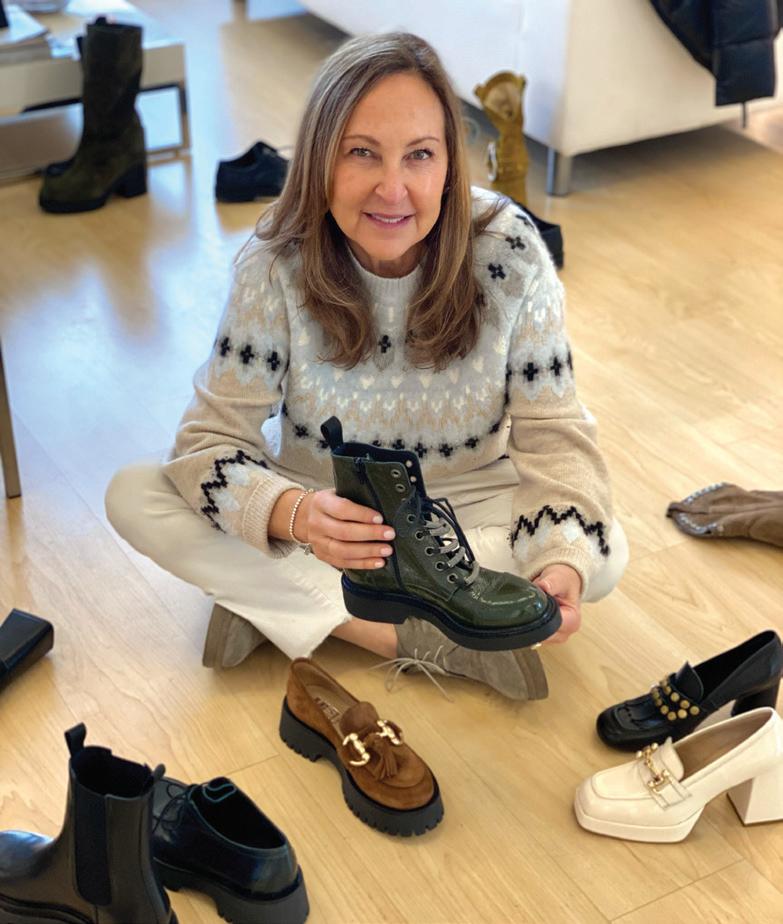
Other notable shifts in business since 1990: the rise of buy now/wear now shopping. It has changed the buying calendar dramatically, which means bringing inventory in much closer to season and hanging on to it longer. For example, a lot of spring/summer merchandise now arrives in March.
by what she loves.
Employee loyalty has also been a boon for Lori’s Shoes. The company has had the same CFO, Lynn Flentye, for 40 years. “We’ve weathered the storms together,” says Andre. Two other staff members recently retired after 35 and 41 years with the retailer, respectively. Andre’s warehouse manager has been with her for 30 years. Meanwhile, an 84-year-old, “spry as ever” part-time salesperson has also been with the team for three decades. Andre is grateful for their hard work and dedication.
She herself has been building Lori’s Shoes for 43 years, and she sees no reason to call it quits any time soon. “People ask if I’m tired of it,” she says. “But I’m just as enthusiastic as when I started. I still have a passion for the product and the people.
“I don’t consider what I do a ‘job.’ I still get very excited when new merchandise comes in, developing products for our stores, and seeking new vendors.” •
Would I want to go back to 1990 knowing more than I did then? No. I’m pleased with how it has all turned out. Being in business for more than 40 years has taught us so much, and we’ve endured so many crises along the way. We’ve learned how to pivot, be flexible, and overcome challenges. I’m happy with where we started, how we grew, and where Lori’s Shoes is today. I don’t think I’d change anything, quite honestly.
Bob Mullaney, CEO of RG Barry Brands, was prepping for the world’s greatest competition: business.
By Greg Dutter
IN 1990 Bob Mullaney was a freshman at Babson College in Boston, majoring in accounting and communications. His top priorities then: going to class, playing baseball, and having fun. He was a typical middle-class kid from Brockton, MA: He loved his Patriots, Celtics, Bruins, and Red Sox (the four horsemen of the apocalypse for fans of all other pro teams). When he wasn’t playing sports, he was hitting the books.
“I was living away from home for the first time that year,” Mullaney recalls. “What I remember most is figuring out how we were going to be the first team in Babson baseball’s history to make it to the post-season.” (Beginning in 1991, the team clinched four consecutive ECAC Tournament berths.)
Mullaney loves competition. Business is like sports to him. A big difference, though, is that as you get older, you can get better. Mullaney is continually honing his skills and looking for ways to gain an edge over the competition. He’s a deep diver on data analytics, consumer research, brand studies, market analysis—anything that can up his and the company’s game. If it can be quantified and verified, he’s going to do the leg work to get the data.
“I geek out on consumer behavior and marketplace dynamics. I love being able to serve consumer segments,” Mullaney says. “I love working on trusted brands that offer authentic solutions for consumers.”
Mullaney has been doing that his entire career. He started in 1993 as a buyer in training at May Department Stores and then, three years later, crossed into wholesale at Timberland as manager of sales planning and analytics. There, he did consumer research at the Downtown Crossing in Boston by asking mothers who made the purchase decisions on children’s footwear. It was grinding work, but the feedback proved valuable. Data delivers.
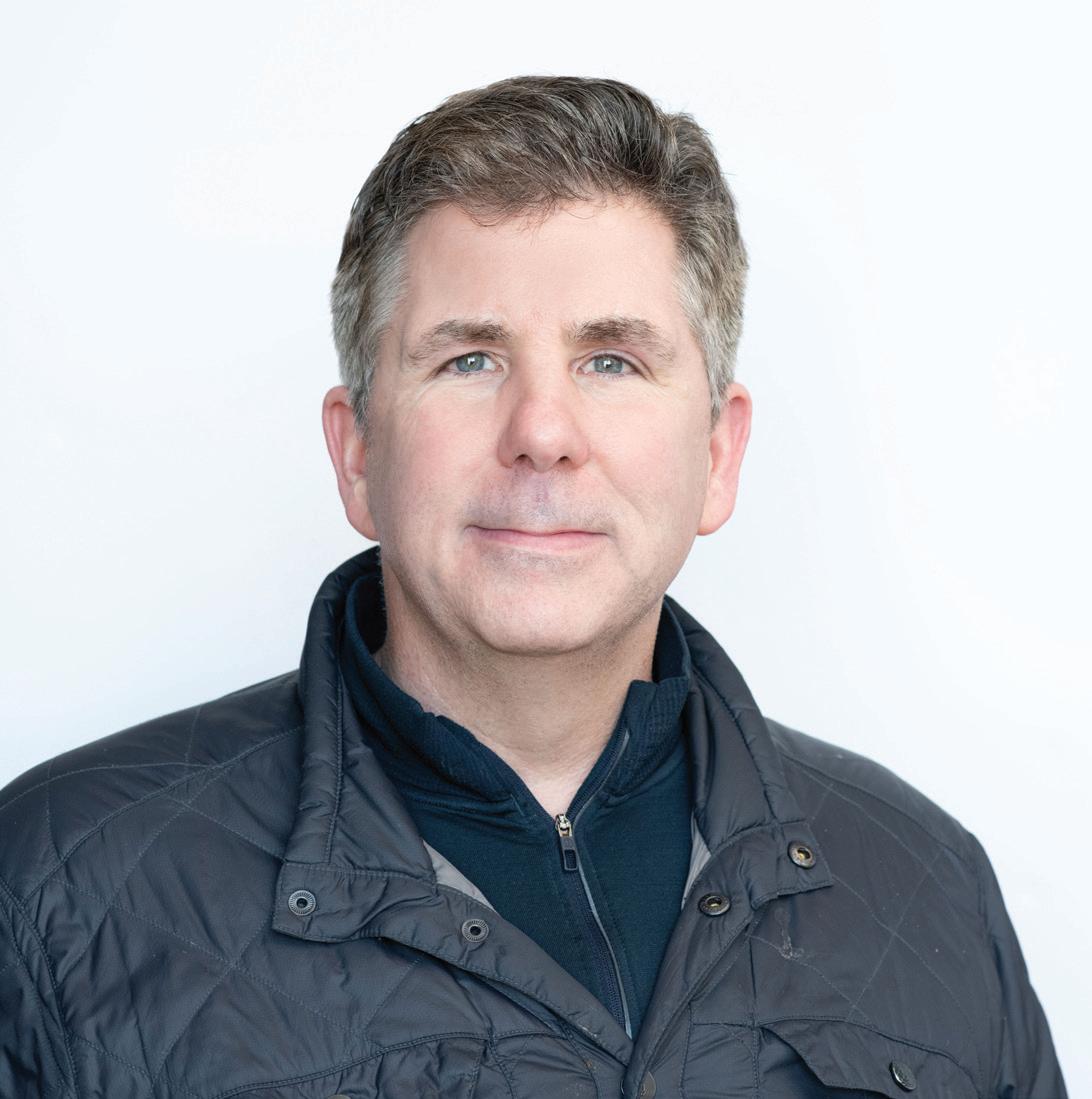
search data, consumer purchasing. If you train it well enough, it’s going to be mind-boggling in terms of making data-informed decisions.”
For the past eight years, Mullaney has been putting his industry and analytics skills to work as CEO of RG Barry Brands, makers of Dearfoams, Baggallini, and the recently debuted sustainability brand Planet A. The 77-year-old company has doubled in size since his arrival, but Mullaney sees plenty of runway ahead in the form of existing brand expansions and potential acquisitions. He is up for the challenge and optimistic about achieving his goals, thanks in part to RG Barry’s acquisition by Marubeni Growth Capital U.S. last June. It’s exactly the type of consumer-focused investment platform the company needs and deserves—one that will invest in expansion internally, through acquisitions, and through international expansion, he says.
I’d trade the DeLorean in for a Jeep Wrangler.
Mullaney moved onto to Stride Rite/Tommy Hilfiger Footwear as senior vice president of sales, where he stayed for eight years. Then it was on to Vida Footwear as EVP/general manager for five-plus years, followed by a stint as president of U.S. sales and operations at Rockport Company in 2011. A year later, he was named president of Rockport’s Americas division. In the fall of 2015, Mullaney shifted back to retail to lead Shoes.com (formerly ShoeBuy. com), where he was in data analytics heaven. “Our consumer research at Timberland was literally done by hand, whereas at ShoeBuy, it was amazing to have all that data available at clicks. We were aggregating every single decision shoppers made on the site made,” he says.
He sees the arrival of AI as a data geek’s dream come true, as it enables data to be aggregated much faster and more accurately. “AI aggregates social listening,
The game continues for Mullaney. He loves the challenges his job offers. In fact, back in 1990, he thought he’d own and/or be leading a company in 2025. “I believe in manifestation,” he says. His research shows RG Barry Brands in a solid position. The company is in the comfort market, a macro trend that he doesn’t see changing any time soon. The fundamental consumer behavior of seeking “comfortable, easy on/off, accessible, unpretentious footwear” applies to its portfolio. Mullaney also believes the company is in the right distribution channels. “I like our accessible price points and our company size, which makes us nimble,” he adds.
Of course, Mullaney isn’t the young lion he once was. “I’m married, a dad, and physically slower,” he says. But he remains as fiercely competitive as ever. “Overcoming challenges and creating solutions doesn’t get old,” he says. “It’s related to my love of sports. I love building a team, creating synergies, finding latent demand in the market, creating a product, and solving a consumer problem. The competition that entails is incredible.”
Mullaney feels blessed to do what he loves. “I’ve always had a passion for the art and science of fashion, and what I love most is the balance between understanding and serving the consumer,” he says. “It’s a space where you get to build, problem-solve, and think strategically, all while collaborating with teams to help consumers.” •
IN 1990 Gary Champion was living in St. Louis and working as the national sales manager for Clarks. He had joined the company in 1984, working in human resources for four years and then crossing into sales—first as a rep covering Florida and the Bahamas and then, about a year-and-a-half later, moving to the Midwest as regional sales manager for that territory and the West Coast. Shortly after, he was promoted to national sales manager.
Champion believed sales could be a lifelong career. He loved working with people and building teams. He also loved Clarks. But little did he envision that the brand would be his home for the next 26 years. He never dreamed that he would oversee a juggernaut team that would grow sales exponentially, year after year, to $850 million annually toward the end of an epic run. And never in a million years did he foresee that (after a six-year break during which the brand fell on hard times) he would become president of Clarks Americas and lead the brand back to a leadership position.

In 1990, Champion had far more pressing concerns than pondering far-off possibilities. “I had two boys with a stayat-home mom. I was thinking about providing for them and focusing on the immediate next step in my career,” he says, noting that it was a pivotal year in his life. “A lot of things fell into place,” he says. Later that year he was promoted to Vice President of Sales and moved to the corporate office near Philadelphia. “That’s when I realized Clarks could be a career,” he says. Clarks’ sales run kicked off in 1991, when Bob Infantino took the reins as
It would take me back to a world before GPS. We used road maps and the Yellow Pages to find our way to stores. On the road, we had to find the nearest payphone and use our 800 number to reach the o ce. Technology has drastically changed our world for good, but it has also led to a more distant, less caring, less accepting society, which is bad. That aside, I’d bring a copy of the Financial Times back with me!
CEO following a successful run at Rockport. Infantino was known as a product and merchant guru. He and Champion would become one of the best one-two punches in comfort footwear. Think Batman and Robin, or Butch Cassidy and the Sundance Kid. Champion sensed they could be a winning duo from the get-go. Sales had been struggling before Infantino arrived. When Champion asked him to give an honest assessment of Clarks collection, Infantino said the shoes were crap. “I told him to make the shoes the right way, because I had the team that could sell that,” Champion recalls. “Bob quickly got us back to basics on making better product. He was also great at creating markets and taking share. We were off and running.”
Infantino, Champion adds, had a sixth sense for recognizing talent. He brought in Joe Salzano, Clarks’ legendary sales exec and retail training expert, from their days working together at Altier’s Shoes. Infantino also retained Champion. “Usually, the first thing a new CEO does is switch out sales and bring in their own guys,” Champion says. “But Bob did his homework. The reviews on me, fortunately, were good.” He attributes this to having made strong connections with the executive team and winning their confidence by overseeing seamless office moves and vetting hires. “I proved myself every day early on, and I made sure I knew everybody and everybody knew me,” Champion says. “Those relationships matter. You may not be thinking about it at the time, but the connections you make through a lifetime can really pay off.”
By 1996, Clarks hit $100 million in sales, five times more than the total for 1991, when the North American division wasn’t even profitable. Clarks had become a well-oiled comfort footwear machine. “That’s a big reason why I stayed for 26 years. Almost every year it became a different job with the growth and added responsibilities,” Champion says. “It was a blast and a blur. We owned entire shoe walls, and we had a great group of people. You can’t succeed without great people.”
Champion loves the people part of his job, something he first realized in 1990 as regional sales manager. “I discovered I had a talent for building teams that can get on the same page and move a business forward,” he says. “I realized then that this was a profession I could really sink my teeth into.” •
Mark Jubelirer, co-owner of Reyers Shoes, looks back on the store’s best year ever. By Greg Dutter
IN 1990 Reyers Shoes was at the height of its power as the “world’s largest shoe store” at a jaw-dropping 36,000 square feet and 180,000 pairs in stock. It carried everything from leading brands to rare finds, kids’ to adults’, women’s sizes 4 to 14 from slim to super wide, and men’s sizes 6 to 22 from narrow to 6E. Customers came from hundreds of miles away to be helped by a staff of 200 seasoned sit-and-fit sales pros and checked out by 18 cashiers. Thousands more came on 1,000 annual tour busses to the then 104-year-old shopping mecca. Business was “booming,” recalls Mark Jubelirer, despite the retailer’s location in the dying western Pennsylvania steel mill town of Sharon, population 15,000. It simply defied logic.
“We had more busses come to town that year than ever before, and we had more people on our payroll,” says Jubelirer, who was already a 15-year veteran of the family business. “We also had more customers and more vendors than ever—1990 was our best year.”
Did Jubelirer expect the success to continue? “We weren’t even thinking about our future too much because we were just trying to get through the day-to-day chaos of doing all that business,” he says. “It wasn’t easy trying to get everybody waited on. So we didn’t have a five-year plan; we were still riding the Me Decade wave of the ’80s.”
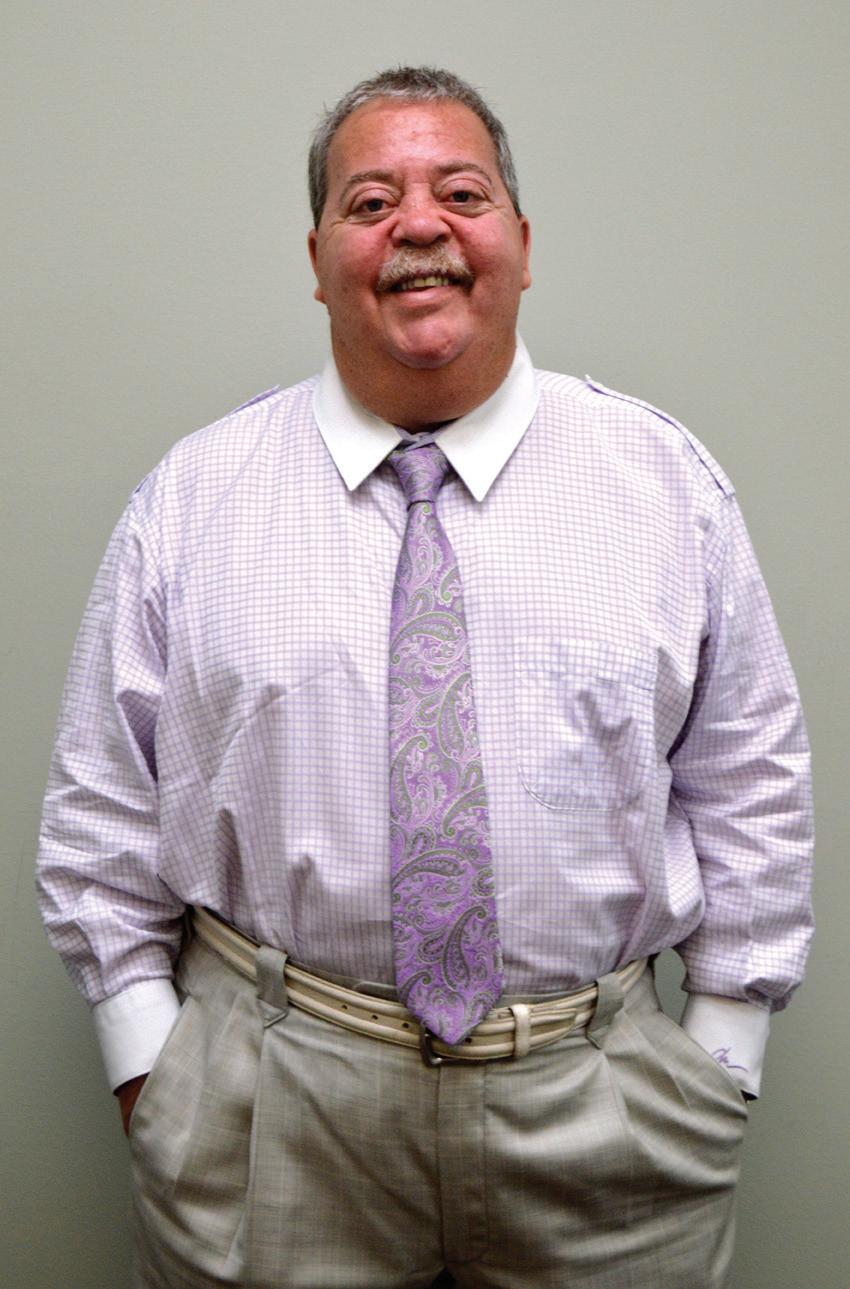
In hindsight, Jubelirer says Reyers hit its apex that year. The ’80s were the store’s most explosive growth decade, fueled at least in part by Jubelirer’s marketing savvy. His winning strategy? Advertising on TV. His research showed that a spot on Good Morning America, for example, cost only about $30, afternoon soap operas were $35, and the evening news was $50. “You could produce an ad for around $200—it was practically free!” he says. “So we did, and our business grew more than 20 percent every year for years.”
During the ’80s, Jubelirer also served as chair of the county’s Convention Bureau. When a hotel bed tax was passed, the funds went to the bureau to market as it saw fit. Jubelirer jumped on the opportunity. “We teamed
with several local businesses and marketed our town as ‘The World’s Biggest’ shopping destination,” he says, noting that Sharon was also home to “The World’s Biggest” off-price women’s fashion and candy stores. “We marketed the hell out of it. Thousands of tour buses came from Kentucky, Ohio, New York, the Carolinas, and Toronto.” Jubelirer also created a special marketing team that traveled to conventions for bus tour leaders and operators—the people who decided where next year’s bus trips would go. “We made brochures, crafted billboards, ran co-op TV ads. We were everywhere,” he says.
I’d play a round of golf on my favorite course, Squaw Creek, with my parents and brother. We’d inevitably find our way around to the 18th hole, where each one of us would score a hole in one. It took three decades for each of us to achieve that feat, but wouldn’t it be amazing if it happened on the same round? Then we’d cool o in the pool.
Today you’ll find a much smaller Reyers, operating with a staff of about 36 in a mall in Niles, OH—something Jubelirer never envisioned in 1990. “I eschewed malls. I made fun of them back then” because they all looked alike,” he says. “There wasn’t much uniqueness and creativity, which caught up with most of them.” By contrast, Jubelirer says the Eastwood Mall, Reyers’ current home, is considered the state’s best. “It’s in a suburb of Youngstown that’s close to Sharon, so we have name recognition here,” he says. “Plus, we don’t have hurricanes, earthquakes, wildfires, and traffic problems, and the cost of living is manageable. Daily life here is pretty good.”
Jubelirer has no quit in him, but he’s older, wiser, and more patient with customers and vendors these days. “We know whatever the problem is today, it can likely be resolved tomorrow or the next day,” he says, adding that his love of this business is as strong as ever. “Once it gets into your veins, you’re a goner. We’re just trying to push the end as far into the future as we can.” •
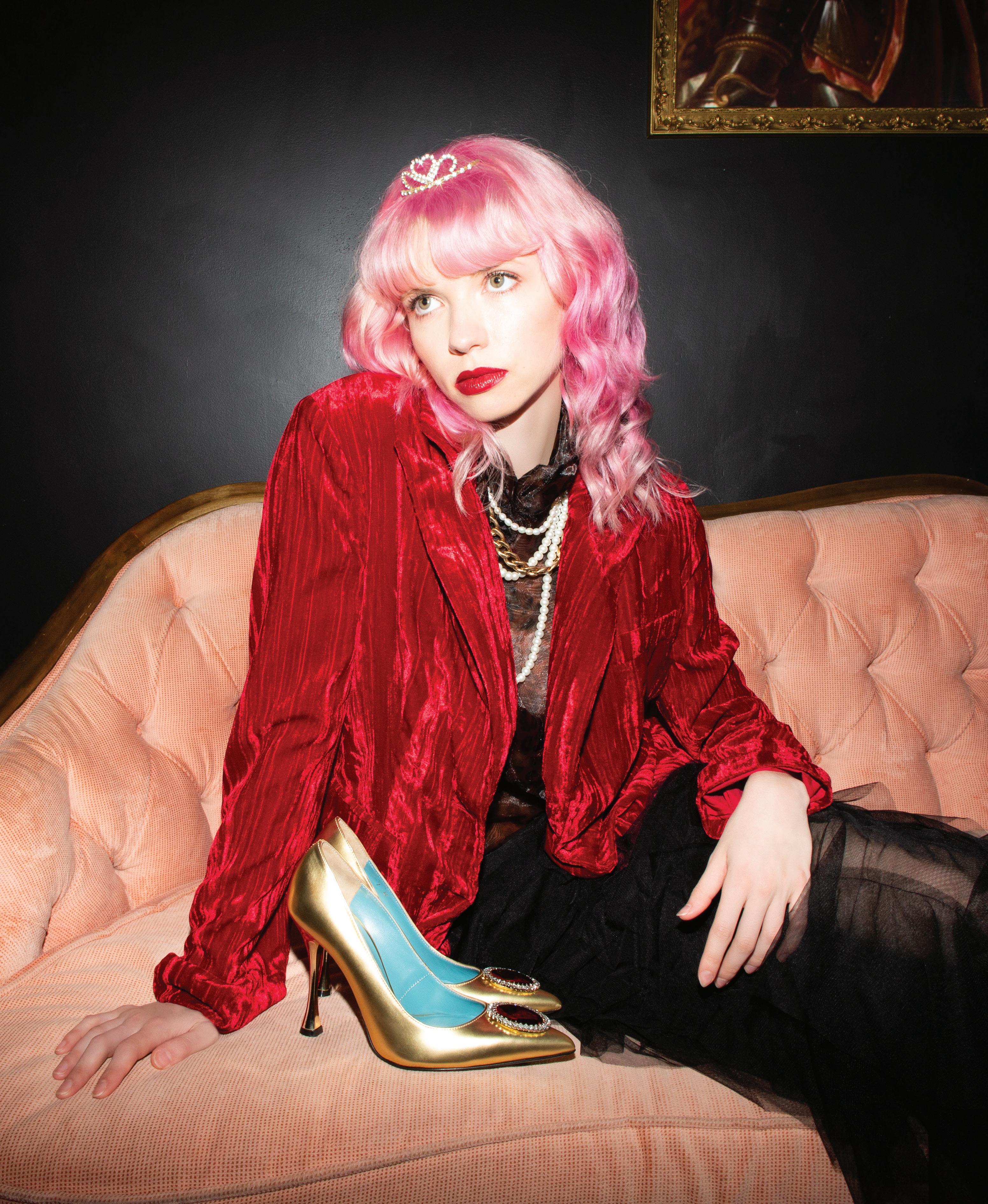

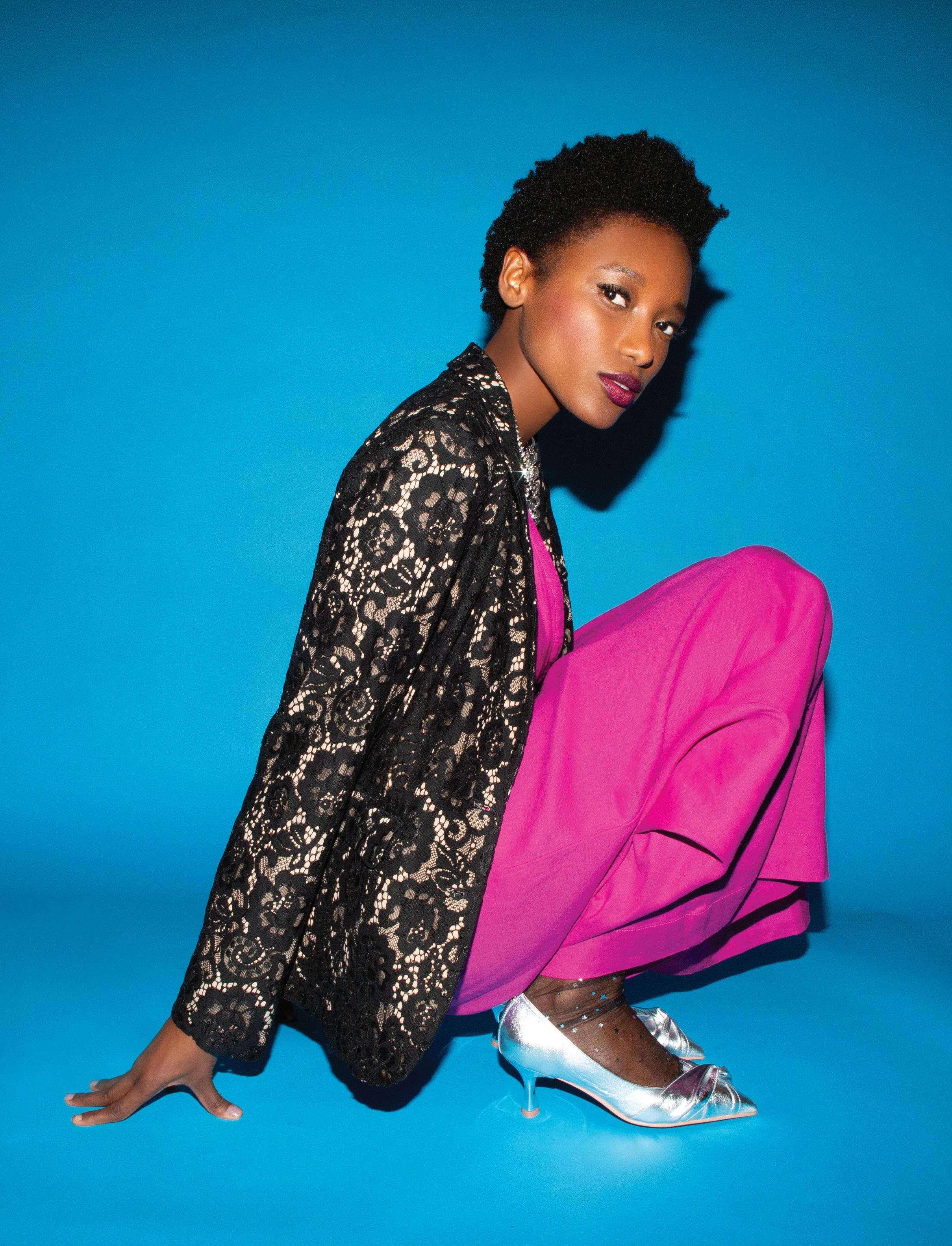


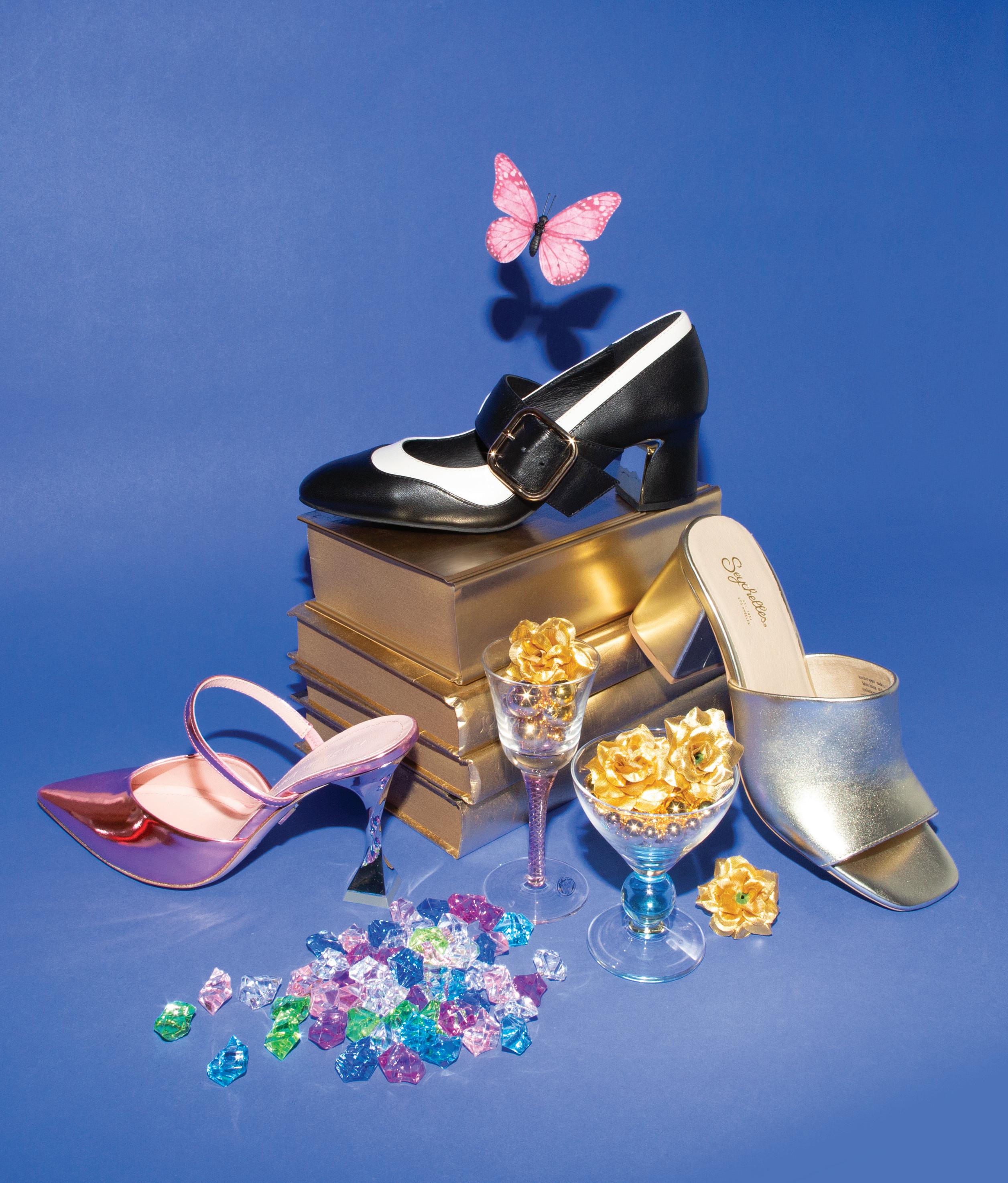
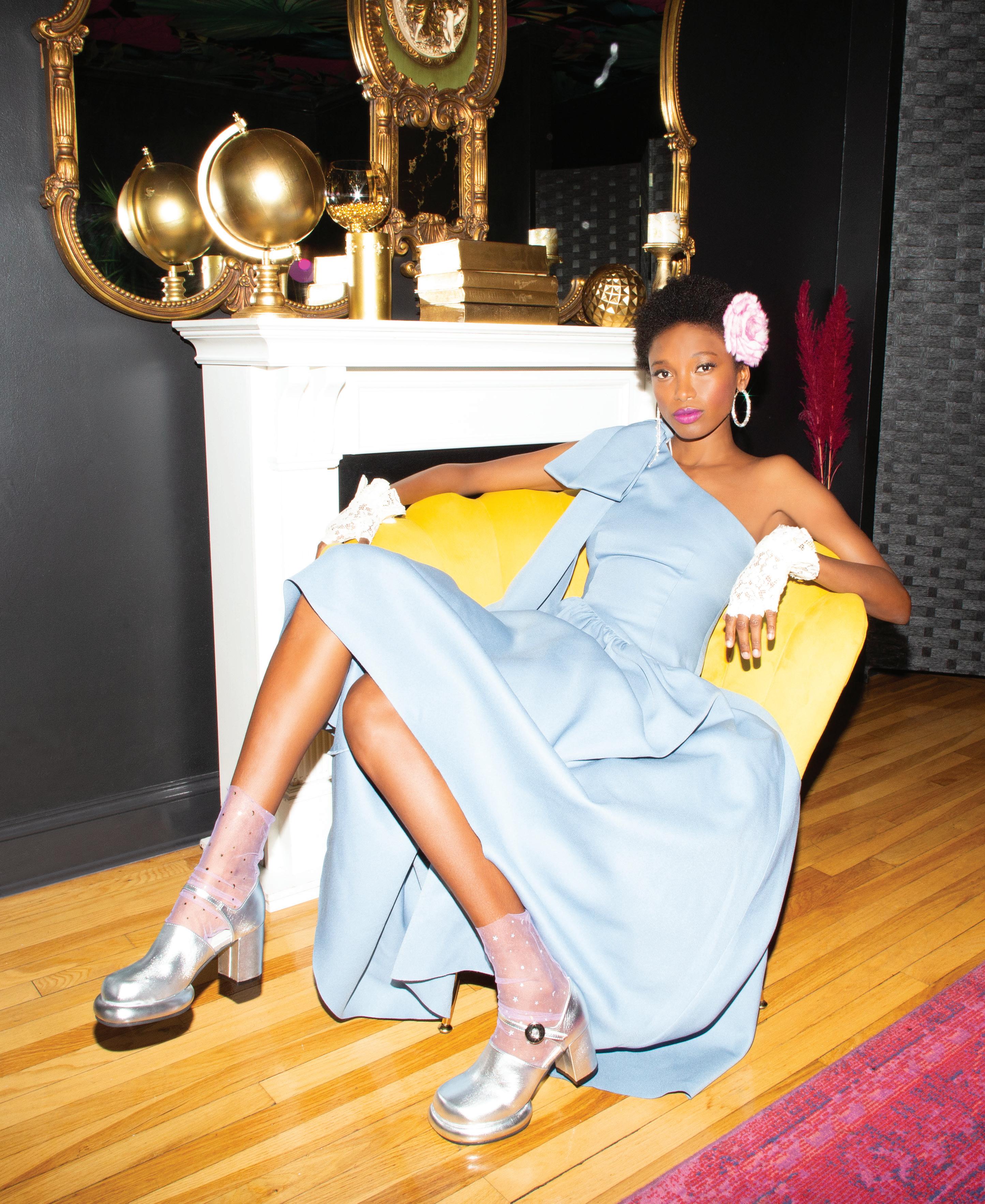
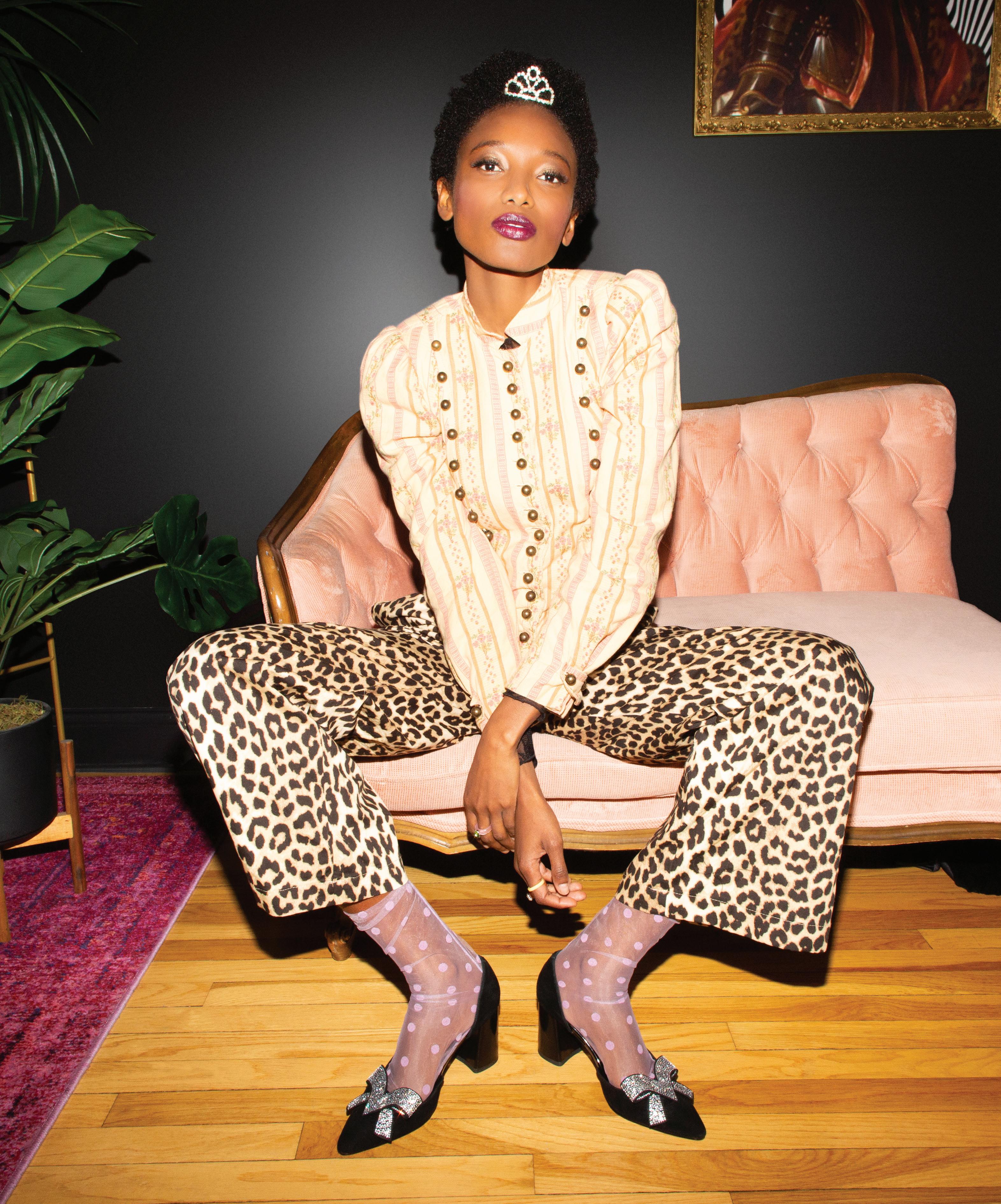

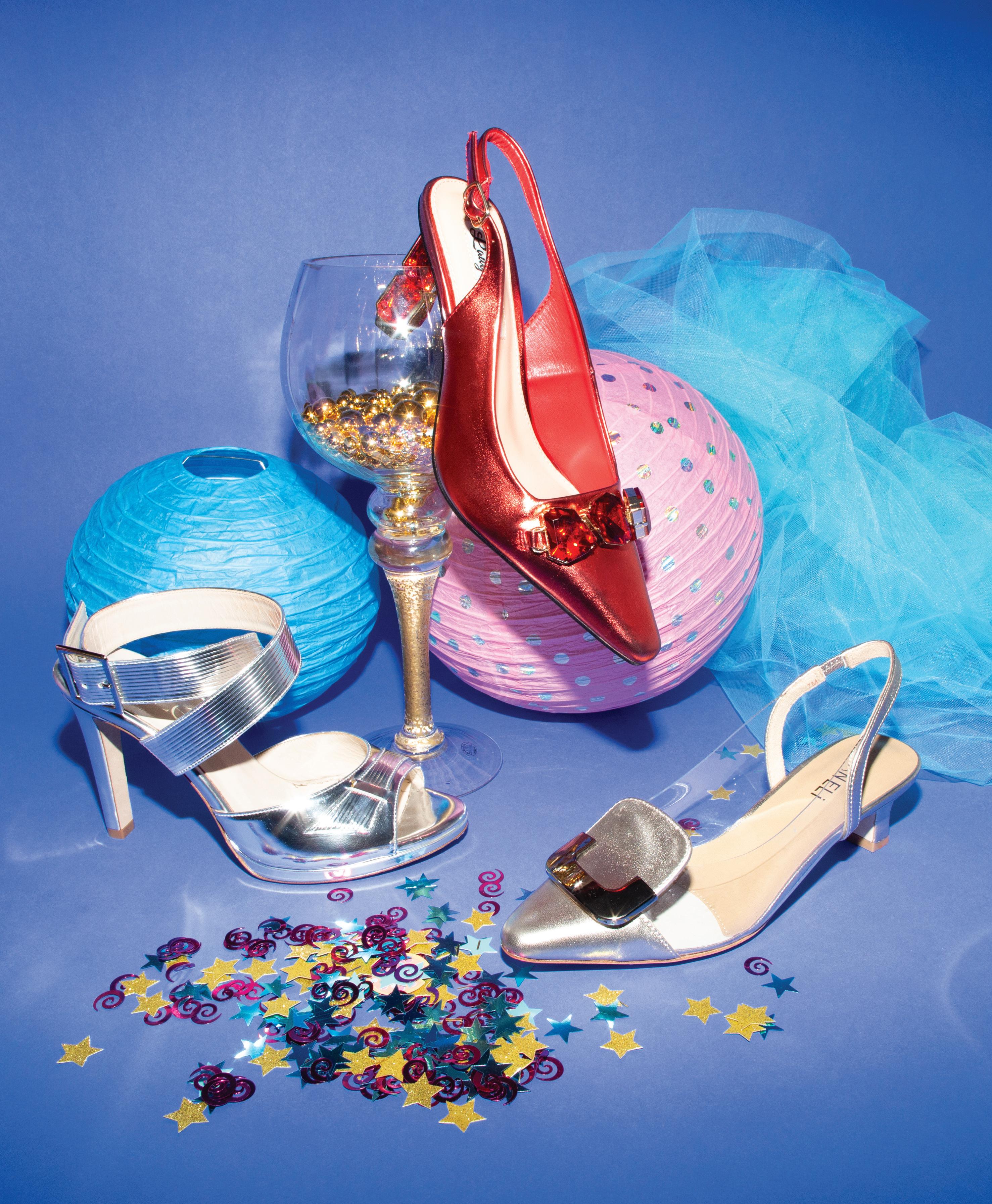
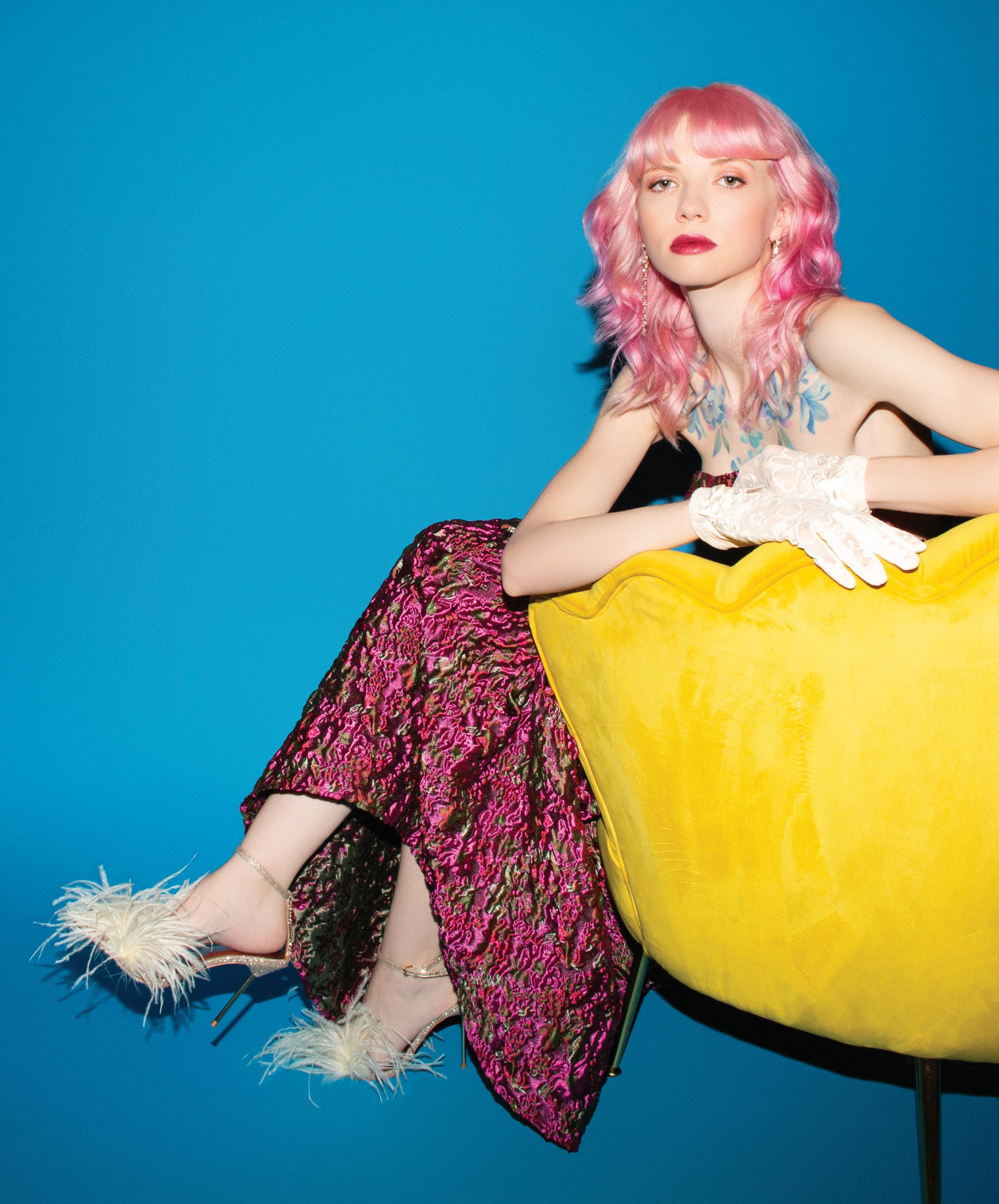

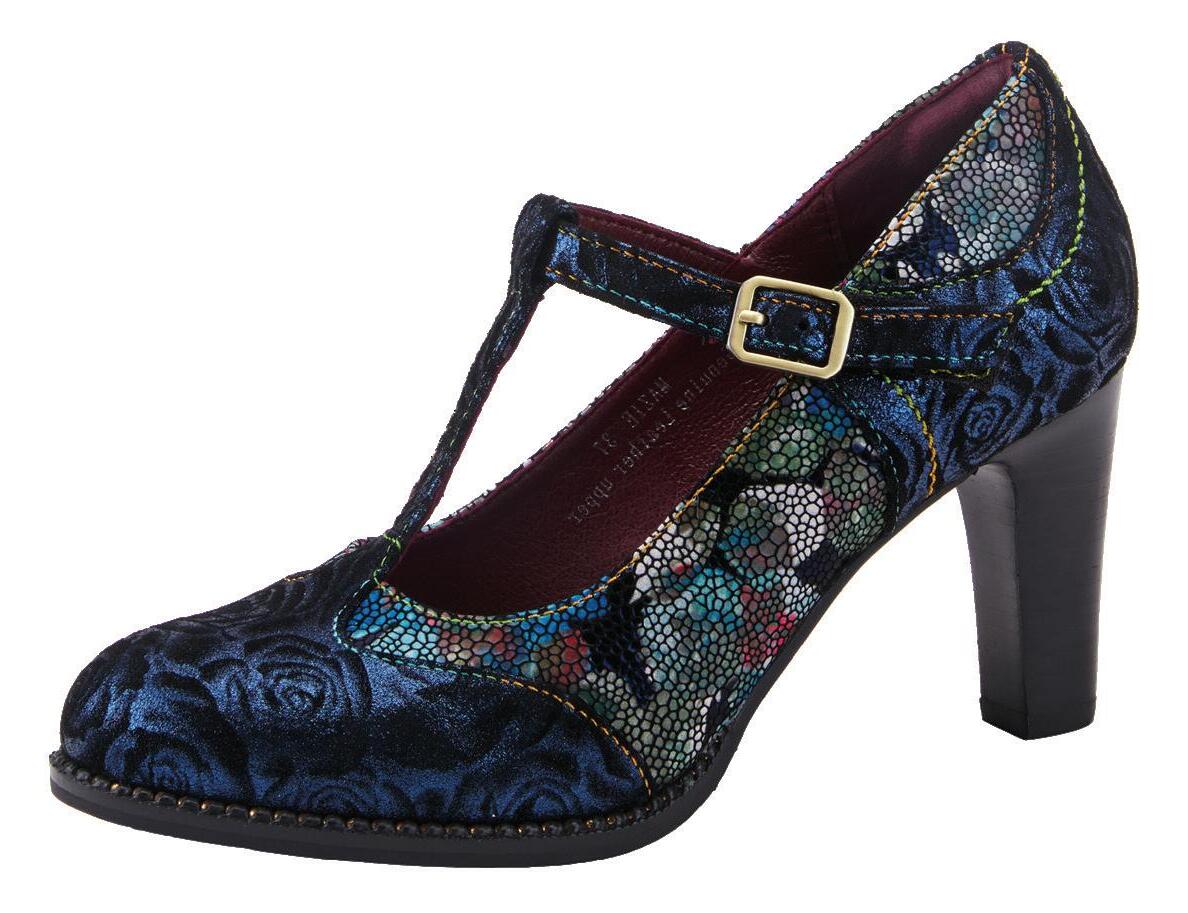
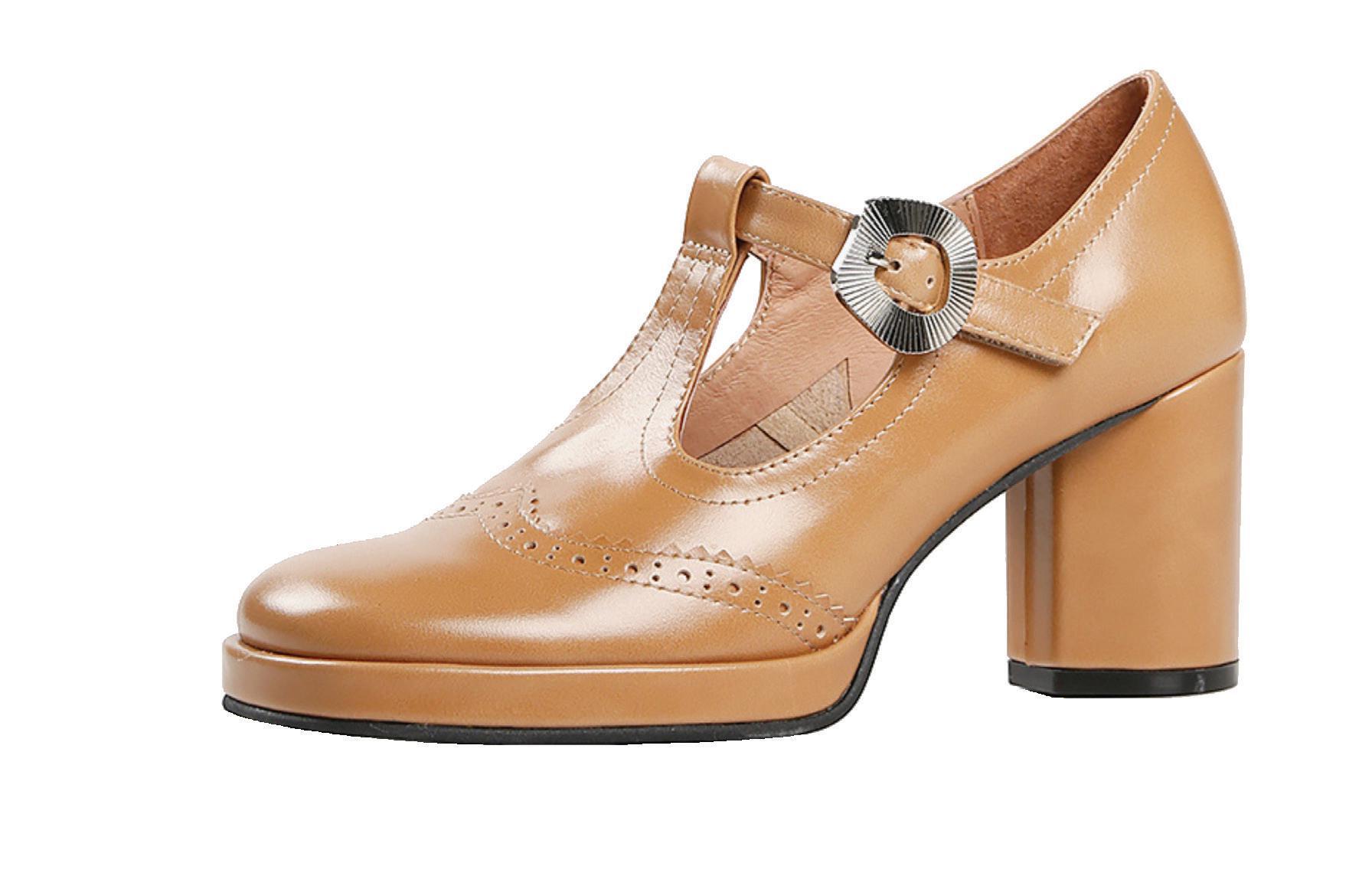

Mary Jane’s cute cousin: equally poised and pretty.
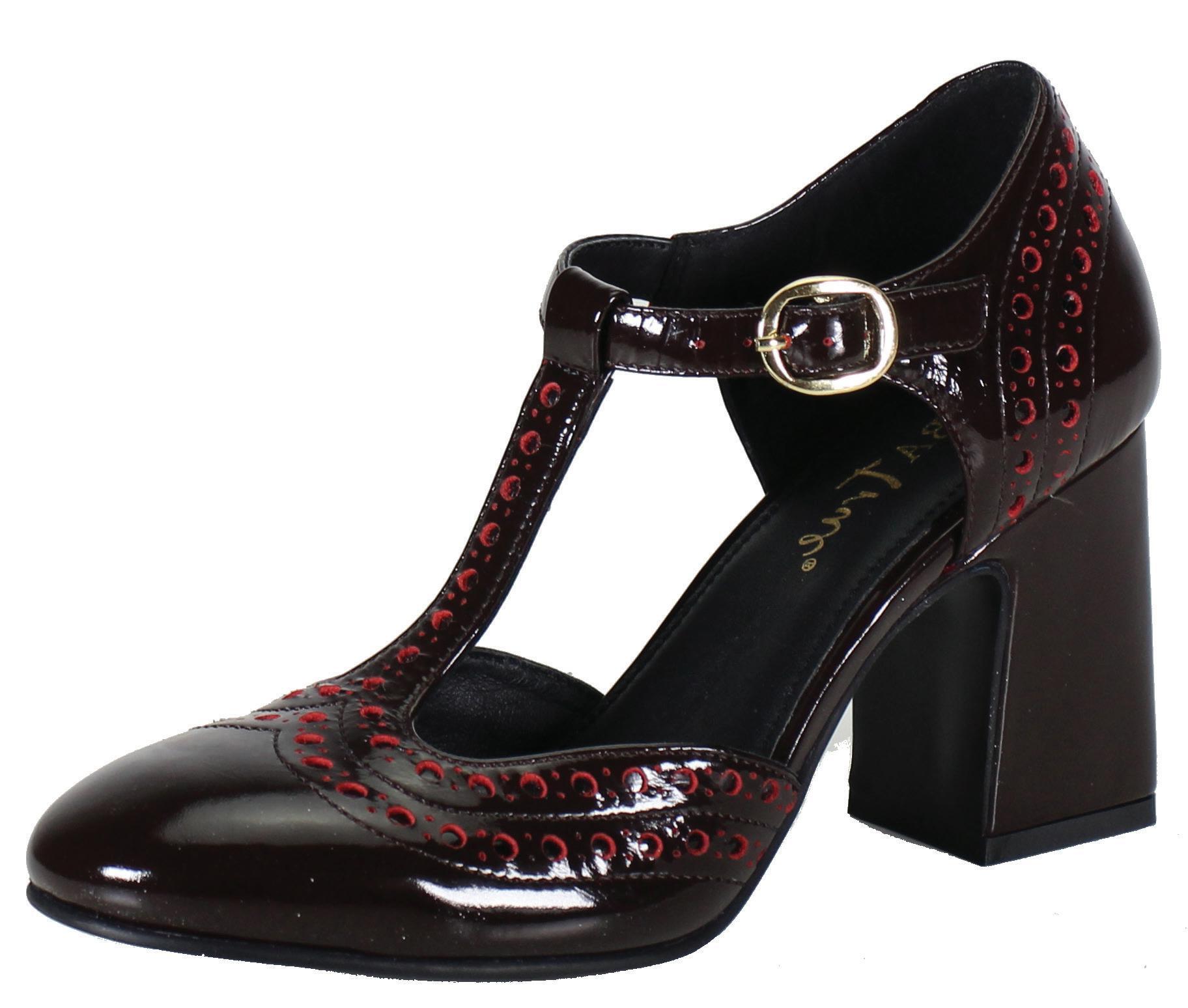
Shoes make the outfit—always. And head-to-toe styling makes Footwear Plus fashion images over the years stunning!


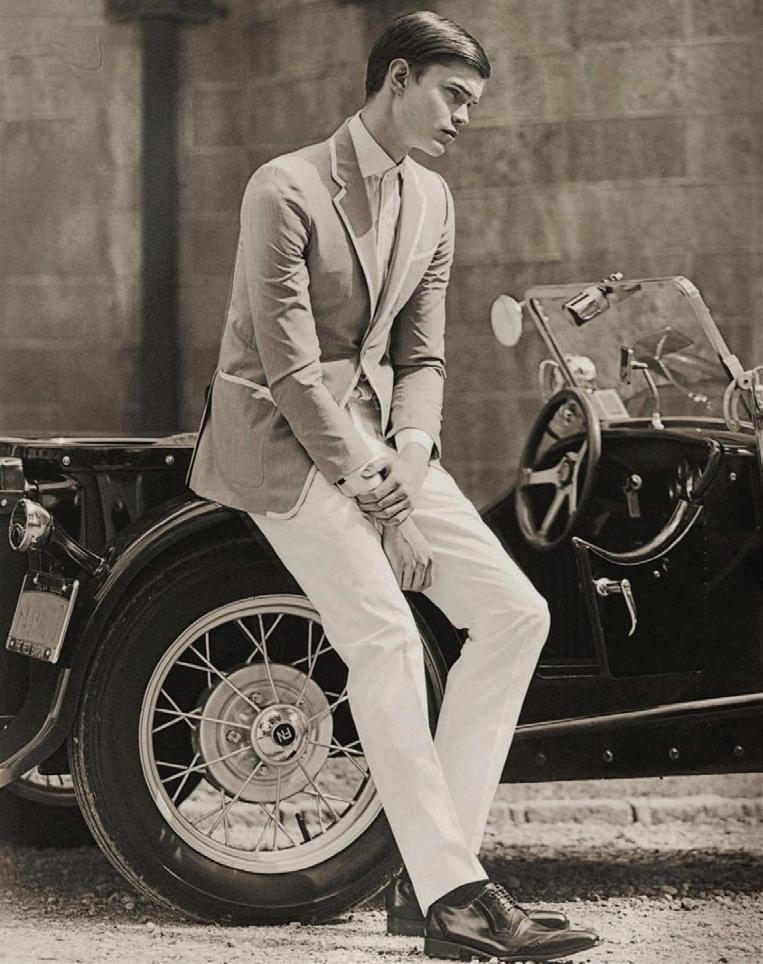
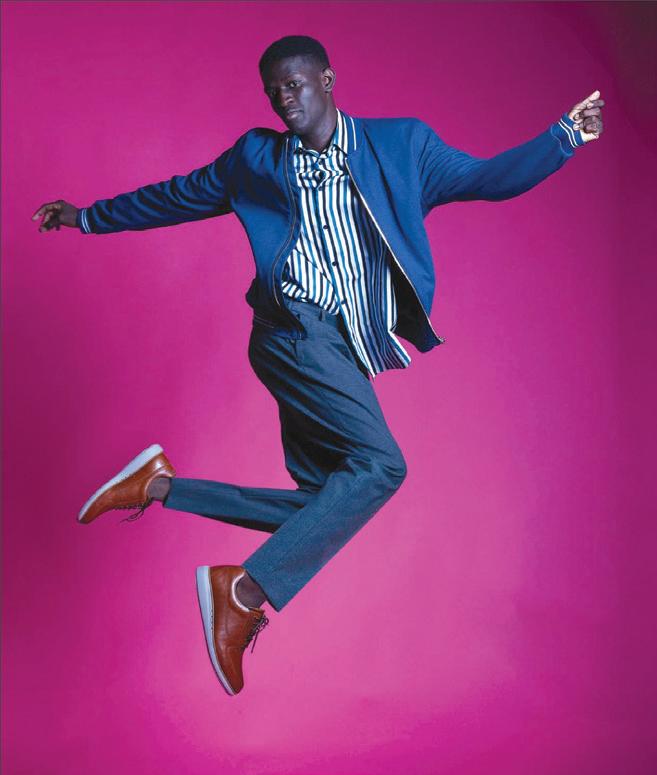





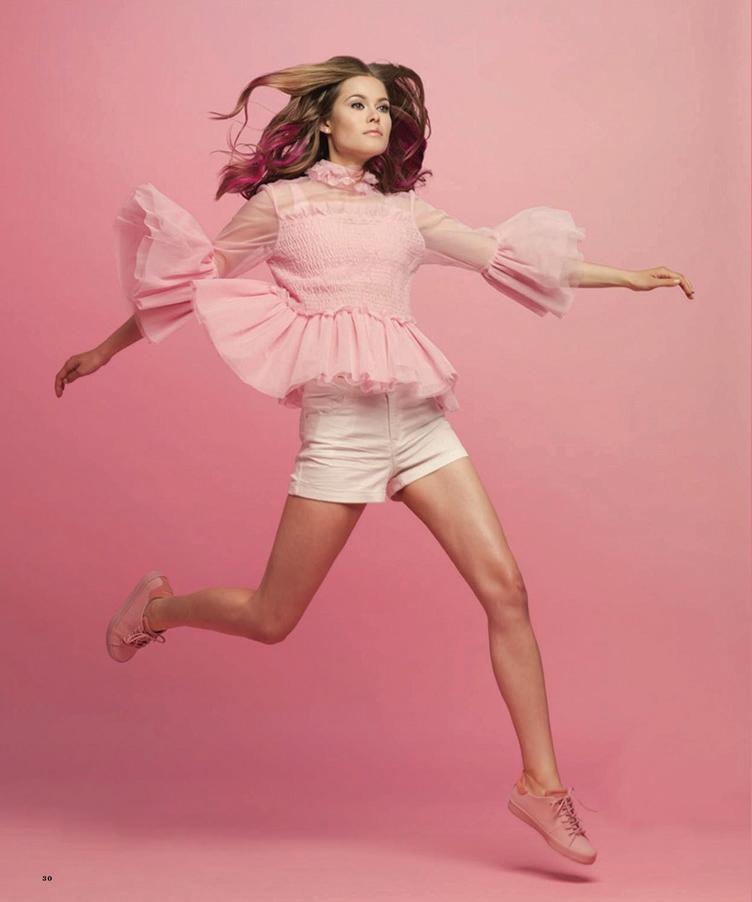
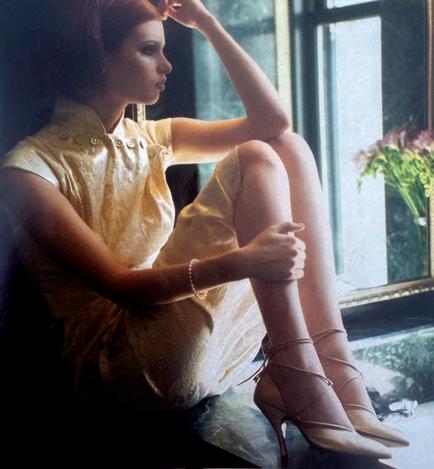
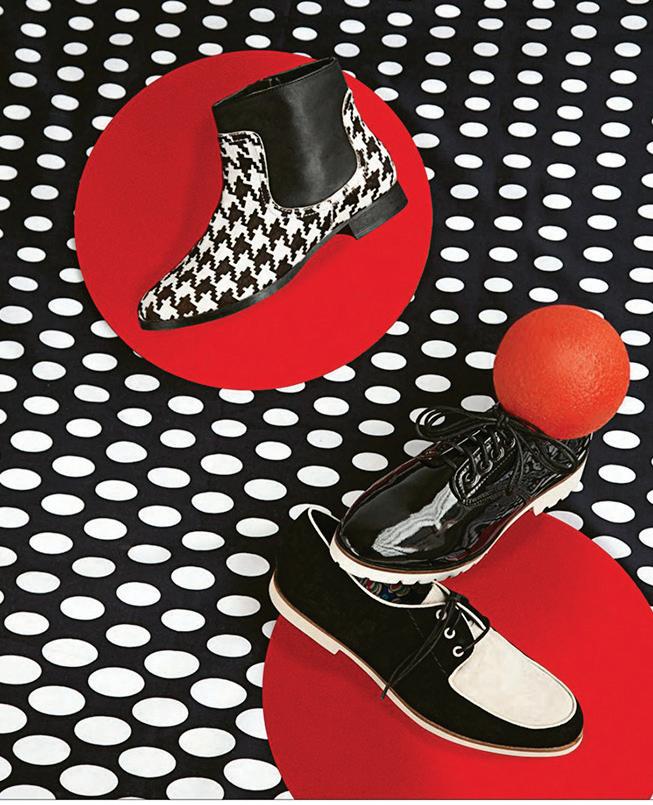
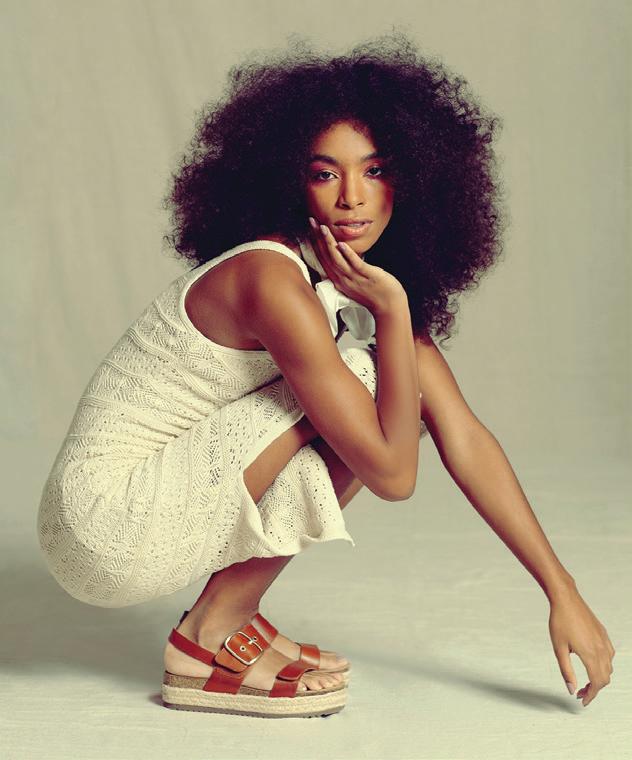
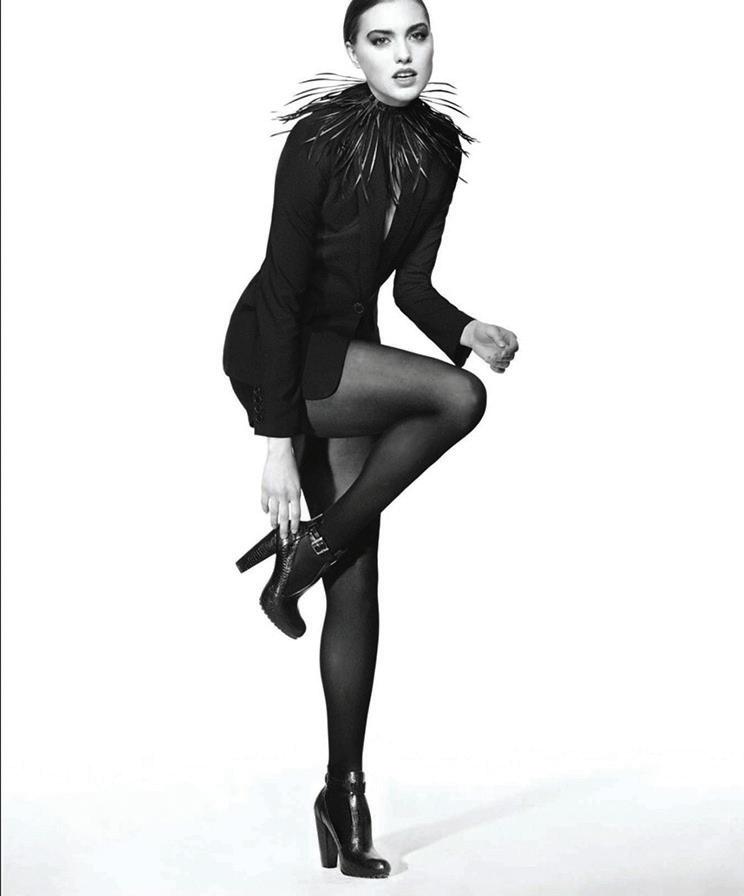
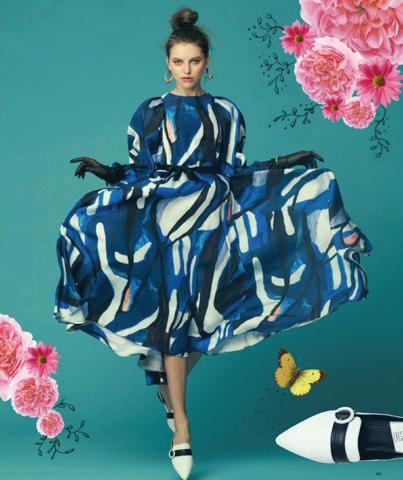
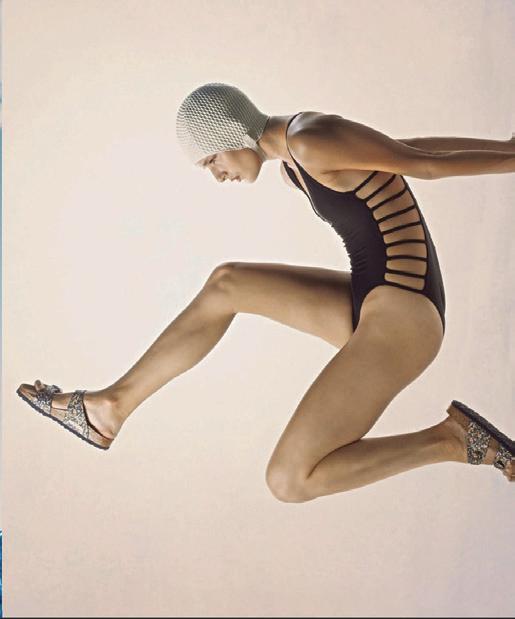
STUART WEITZMAN
January 1992
“I believe recession is a state of mind, and I’d like to do my part to convince customers not to get into that frame of mind.”
VINCE CAMUTO
November/December 1993
“Women are always going to want a great pair of shoes. Footwear always will be the purchase that can change an outfit, change an attitude.”
KENNETH COLE
June 1993
“We deal with what shoppers want, not what they need. There is rarely a correlation between the two.”
ANNA SUI
October 1994
“I am sure that fashion footwear in the year 2050 will be retro 2030.”
STEVE MADDEN
October 1996
“It’s difficult to be a long-running success in music, in acting, in designing shoes.”
CALVIN KLEIN
June 1997
“Shoes affect the mood of an outfit. They complete the whole picture— the image I have in my mind.”
MAX AZARIA
June 1998
“I love, I love , I love the woman. When you love somebody, you know what she needs.”
ISSAC MIZRAHI
August 1998
“Any shoe that wears the woman instead of the woman wearing the shoe is a fashion disaster.”
ANDREA PFISTER
November/December 1999
“I hate ugly shoes, there’s just no reason for them.”
Designer wit and wisdom spanning 35 years.
LULU GUINNESS
August 2002
“I am not suggesting that everyone needs to match their shoes and handbags exactly, although I did love the era when women did—it was so elegant.”
JEFFREY CAMPBELL
August 2004
“Fashion magazines used to tell the customer what to buy. Now, they show all the key trends and the customer is left to decide which trends they should follow.”
SAM EDELMAN
September 2006
“Today’s 50 is yesterday’s 35 and 60 is the new 40.”
BETSEY JOHNSON
February 2007
“I hate to say it, but what I wear most now are espadrilles. They’re comfortable, high, and lightweight. It’s easy for a girl to get used to them.”
REED EVINS
March 2008
“It’s all fun and games—until someone breaks a heel.”
DONALD J PLINER
June 2011
“Designs always revert back to tradition. Classic styles will never go away.”
MARIA LORENZO
June 2013
“The higher the heel, the closer to God.”
MICHAEL KORS
March 2014
“Everyone loves a sexy ‘wear-meout’ heel. Just buying them is an instant pick-me-up.”
TY MCBRIDE
Intentionally Blank; Oct./Nov. 2015
“Do you like living on Top Ra-
men and riding a bike to work? Then launch a brand.”
ADAM DERRICK
To Boot New York; December 2016
“The shoe is not only the most important thing a guy is wearing, it defines the outfit.”
NICOLE BRUNDAGE
Marskinryyppy; December 2017
“Shoes, in general, should be easy to wear.”
JOHN FLUEVOG
April/May 2018
“Will I be remembered? People forget very quickly these days. Perhaps I’ll be remembered for simply having an unusual name and unusual shoes.”
MARIE NILSSON PETERZÉN
Vagabond Shoemakers; Feb. 2019
“If the last is not good, you’ll never make the shoe look good.”
ANYI LU
June 2020
“If it’s not comfortable, it’s not luxury.”
TARYN ROSE
July 2021
“There will always be women who love wearing heels.”
DEE OCLEPPO
February 2023
“A classic black pump is timeless, elegant, and goes with everything.”
ERIKA CARRERO
Elizée; July 2023
“Women no longer tolerate discomfort after two years of living in loungewear and cozy slippers.”
MARINA ROSIN LEVINE
Highline United; March 2025
“Post-Covid sloppy has burned us out. Women want to wear pretty shoes and have a glamorous
Designers reflect on their earliest shoe memories and love of design.
“I remember the first time I wore stilettos. That sensation I felt, the instant confidence and feeling powerful and unstoppable! It’s a whole di erent kind of feeling than a pair of sneakers gives you.”
—Sangmin Park, 4CCCCEES; January 2025
“I love the human interaction in shoemaking. You’re making this object that someone will put on, that could change their self-confidence, their outlook, their day, and even possibly their life.”
—Mary Alice Malone, Malone Souliers; Jan. 2018
“Sitting in front of my mom’s closet and staring at snakeskin pumps. I never tried them on; it was about appreciating the beauty of the object.”
—Aurora James; Brother Vellies; July 2014
“I love making beautiful shoes. But shoes are not easy to make—sometimes there are 16 patterns just in the upper. It requires a lot of people’s love and attention.”
—Rebecca Mink, Mink Shoes; July 2019
“When I was 12, I saw a white espadrille with pink flower patterns from across the store. I never had anything catch my eye that fast before. Since then, I’ve believed in love at first sight!”
—Anastasia Eren; June 2024
“Shoes are perfect—I love their form and shape. I love how they hold and support you and serve to ground you. They have a special voice understood by everybody.”
—Georgina Goodman; December 2008
“When I was three, I loved wearing my Mom’s shoes, especially her black cowboy boots. I felt like Wonder Woman in them.”
—Clara Barcelo; December 2024
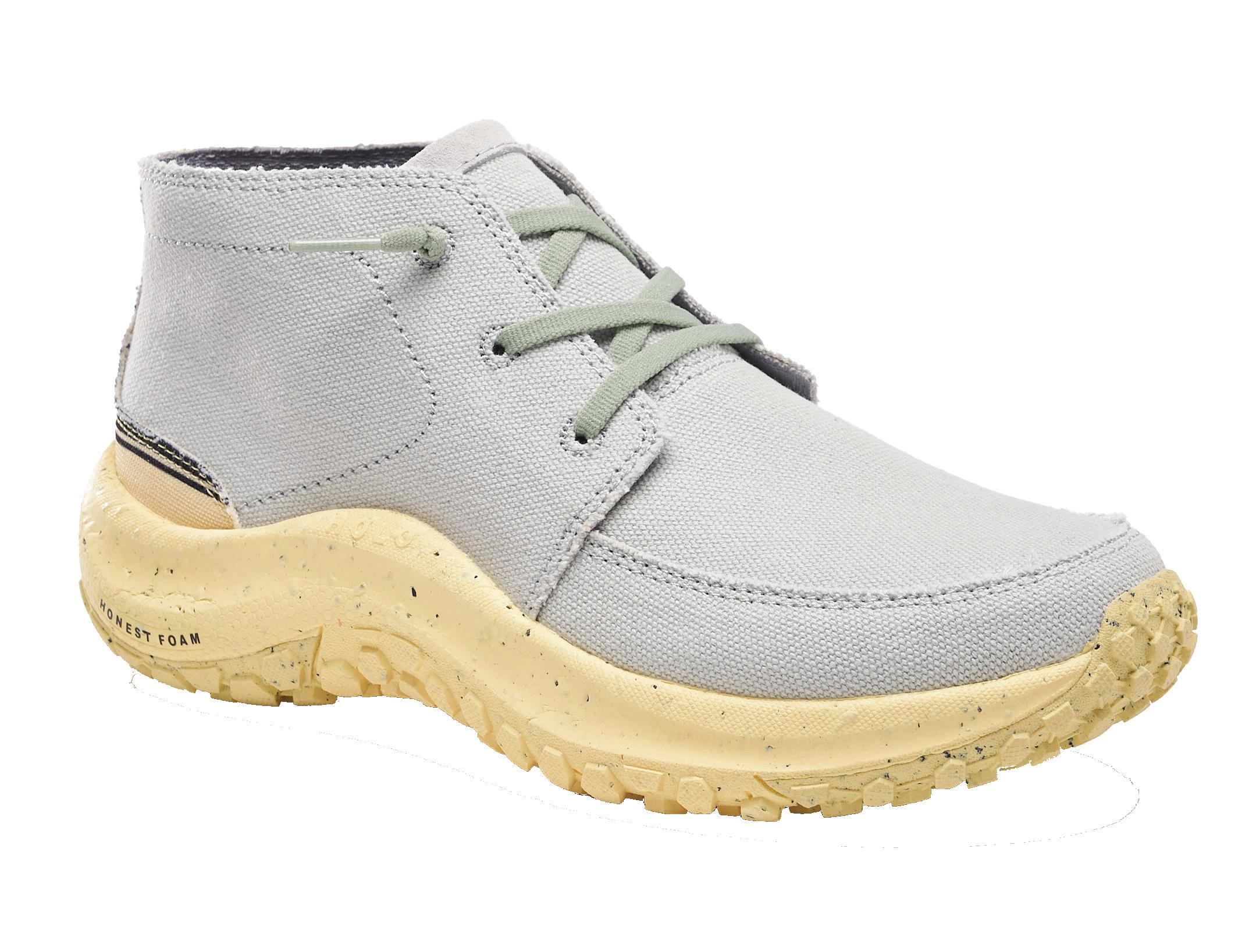
RE49 court sneaker features recycled upper made of Dacron, towels, and apple skin.
So fresh: sporty, eco-friendly men’s casuals.
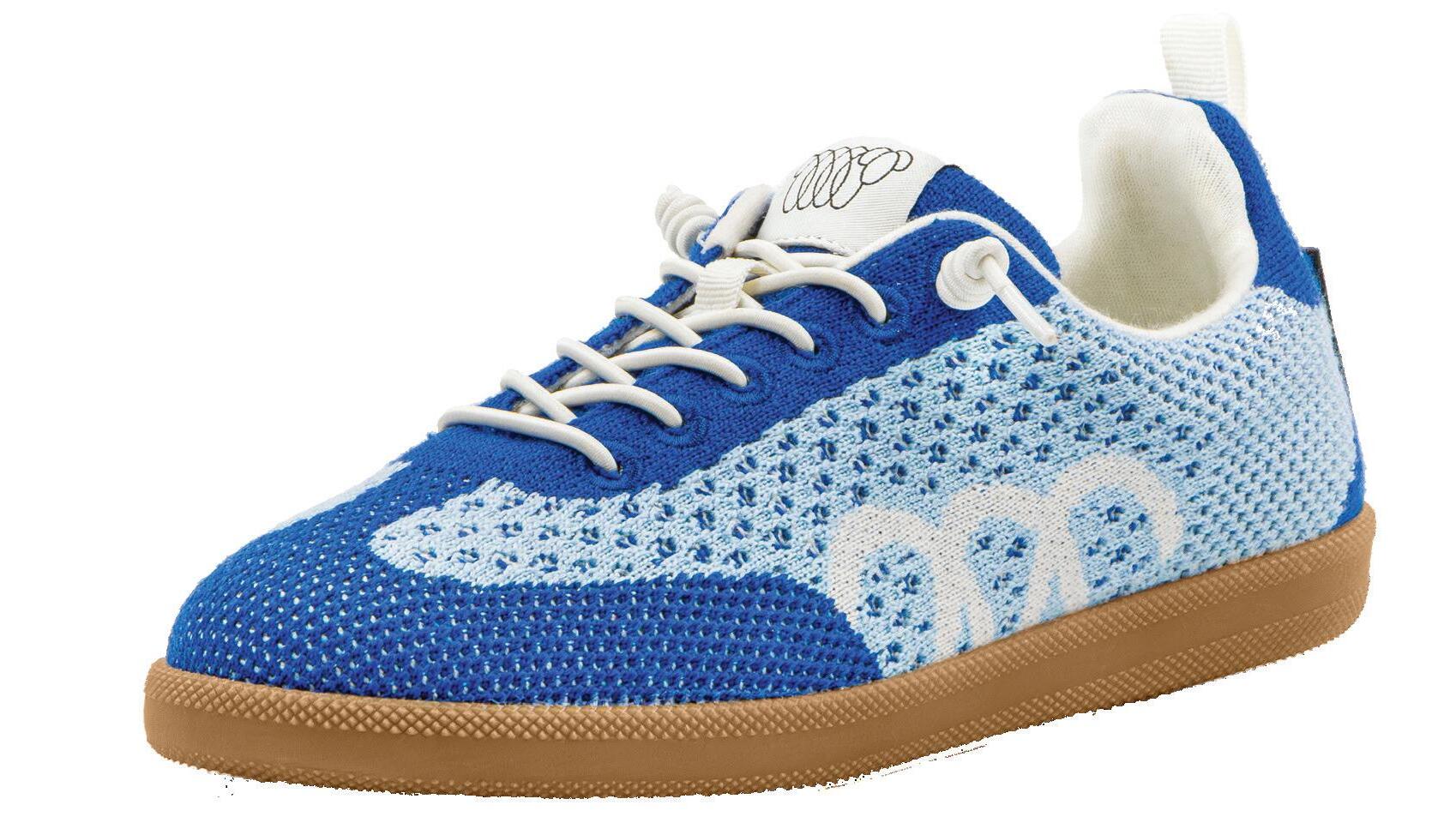
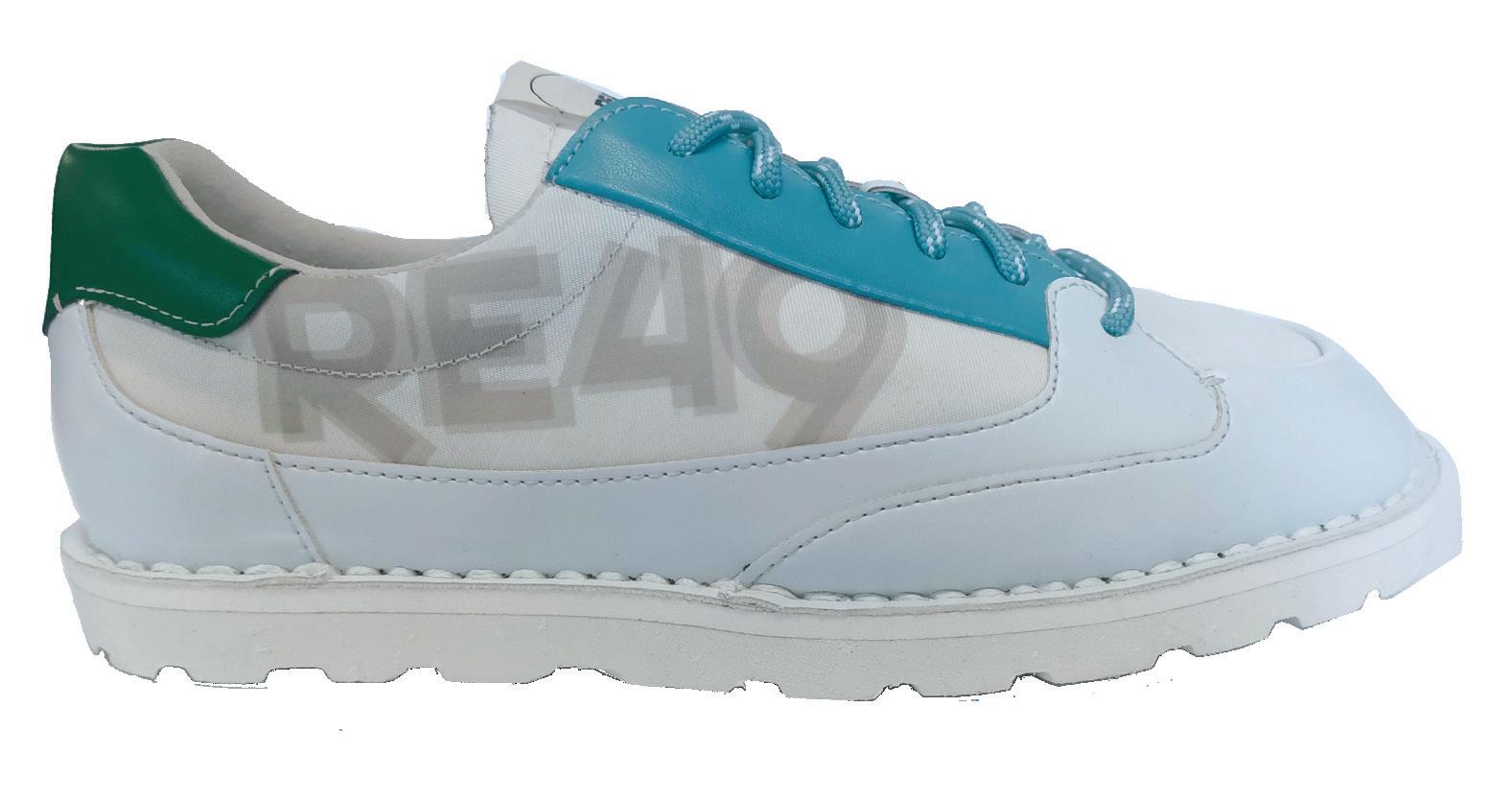
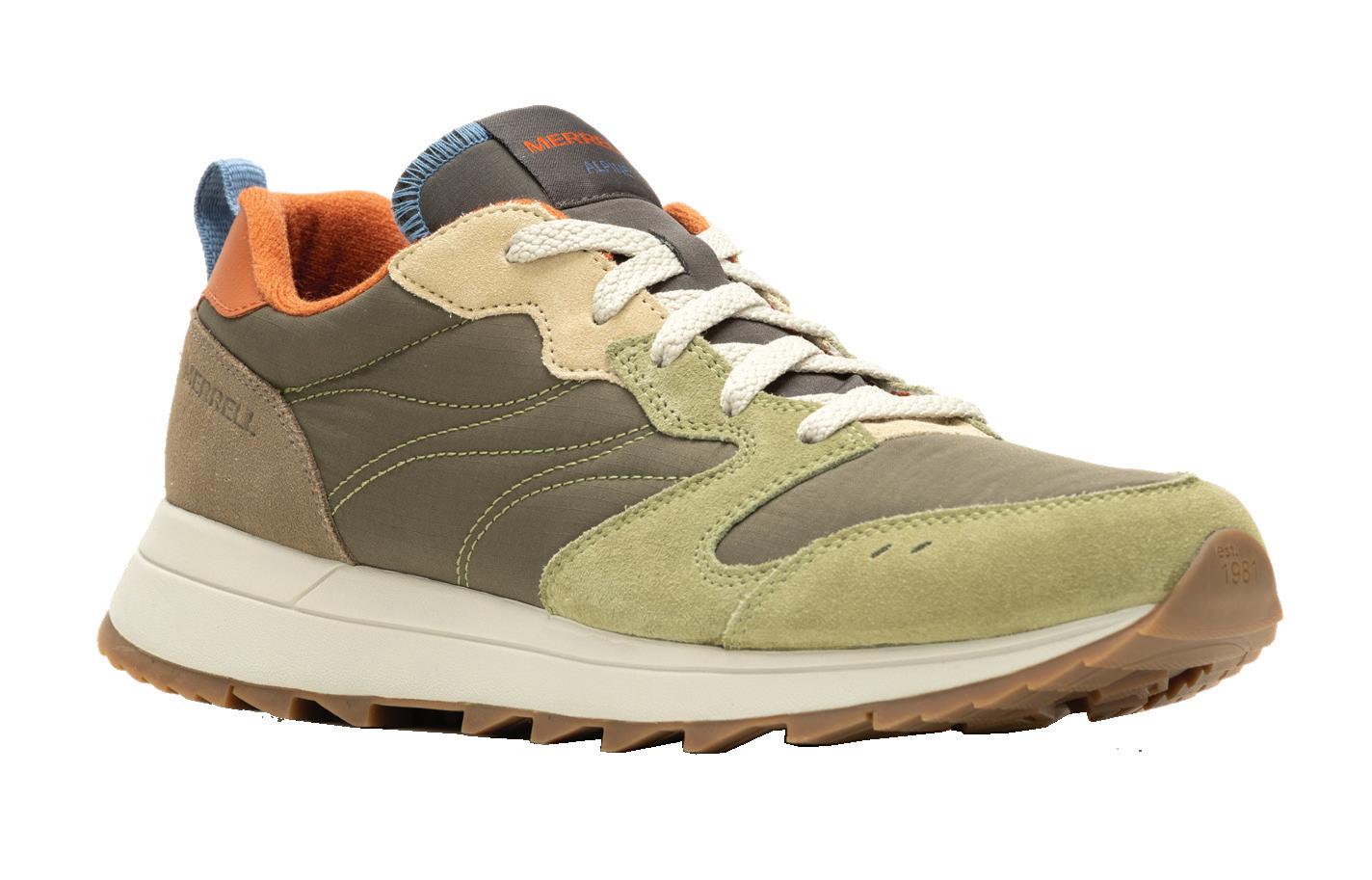

Highlights of the more than 400 editorial design awards Footwear Plus has earned over 35 years. Winning creative that stands the test of time.



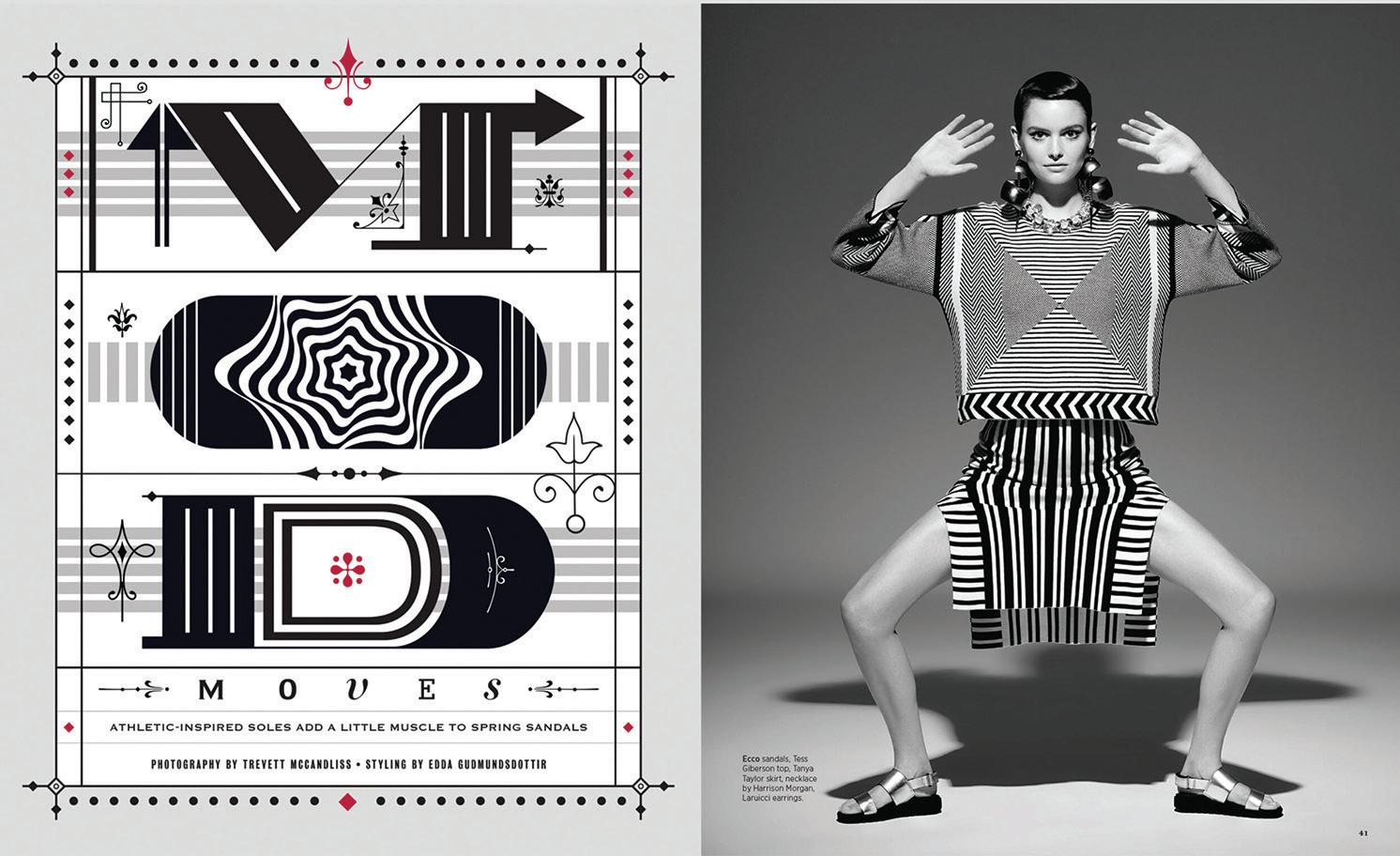
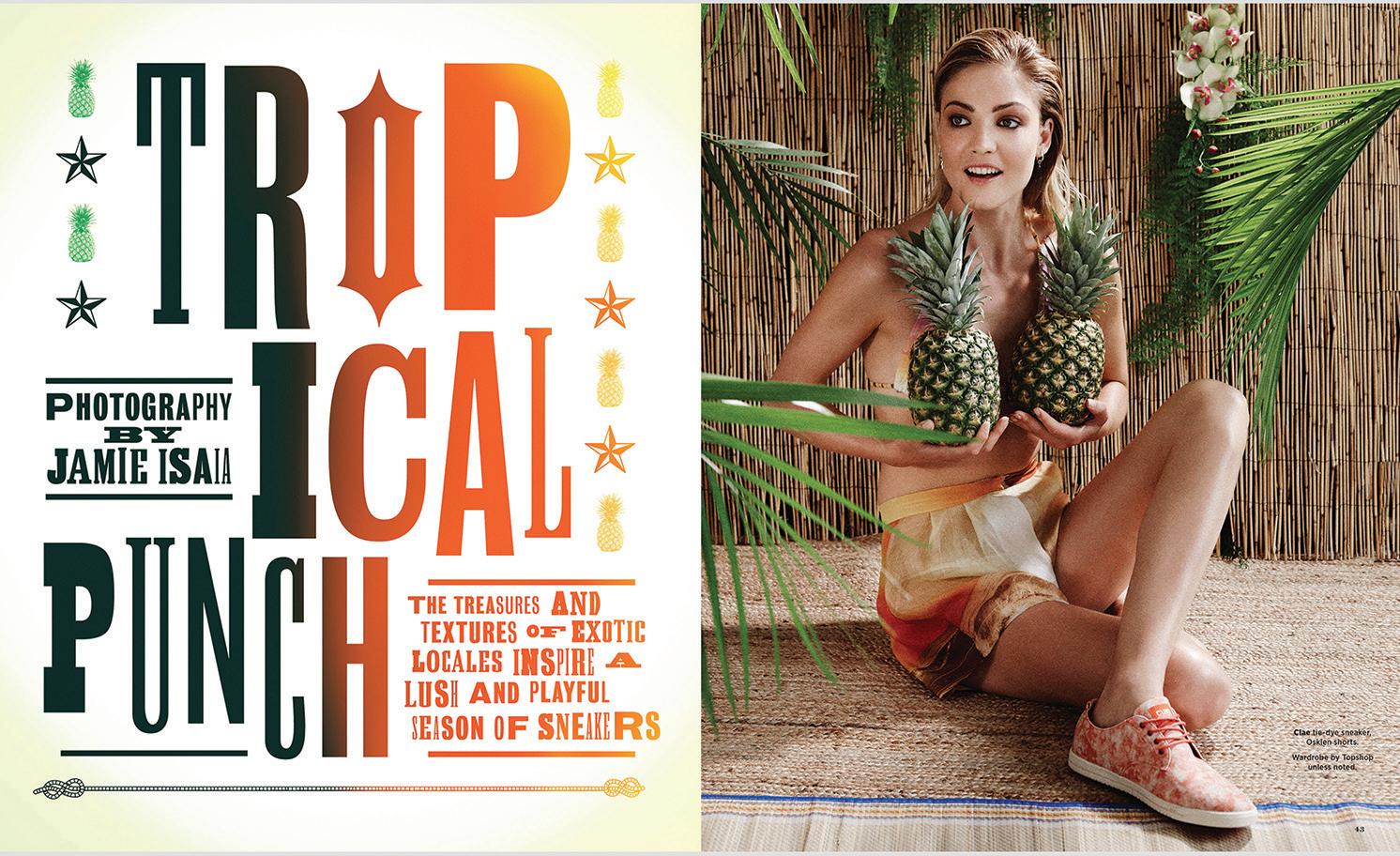
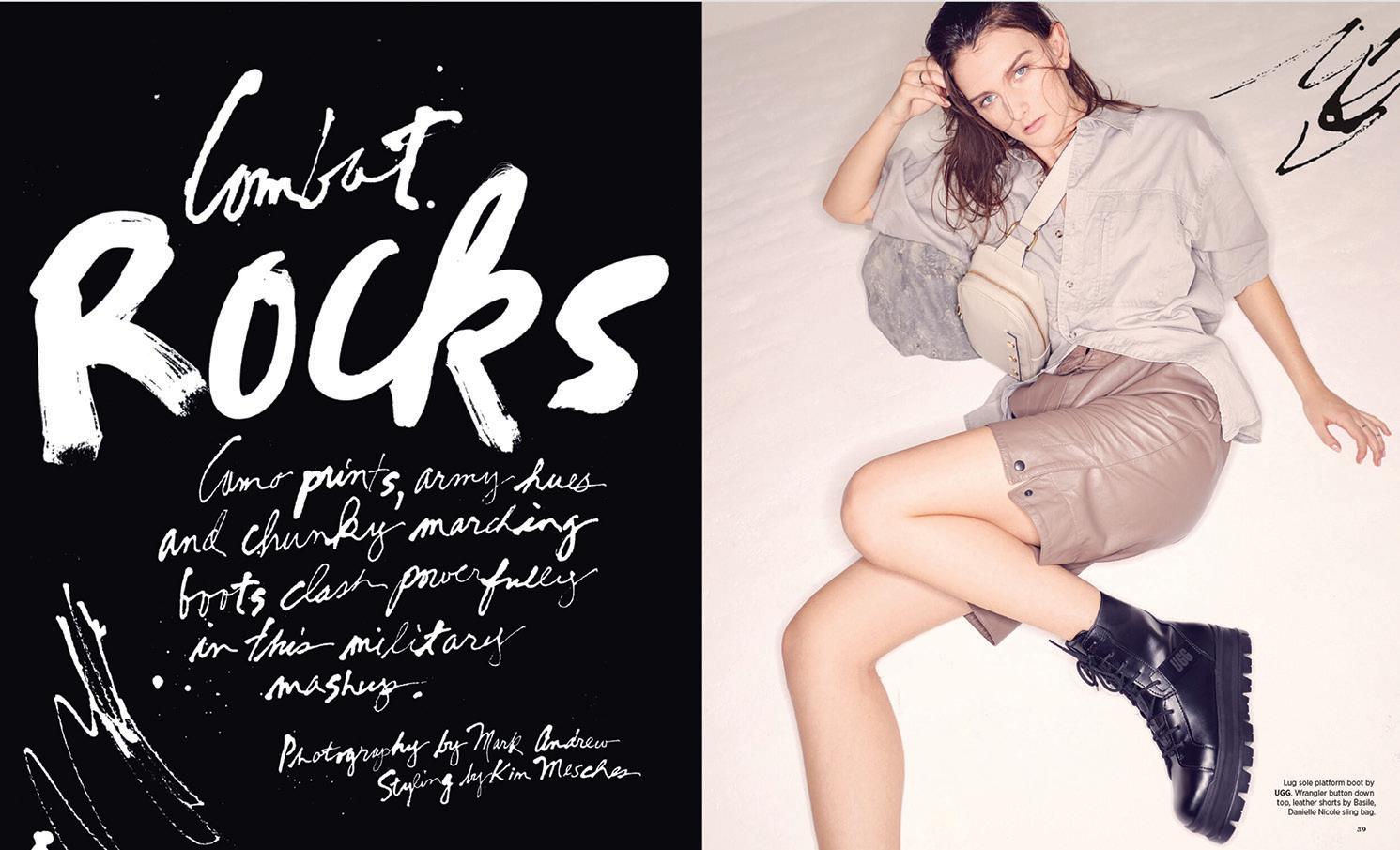


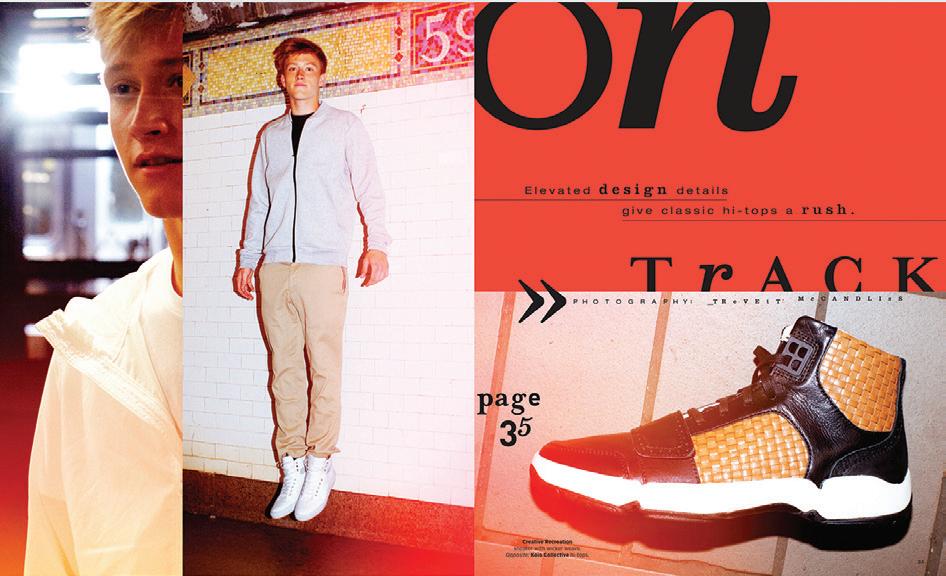
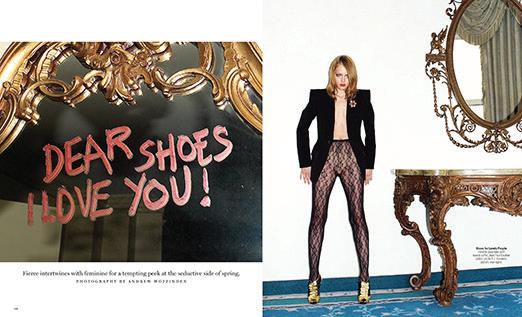

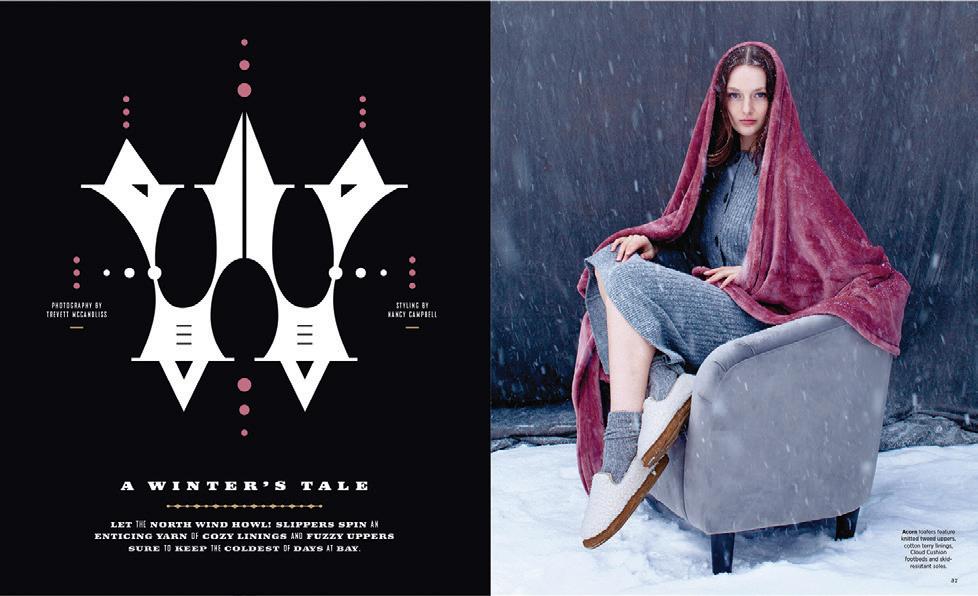
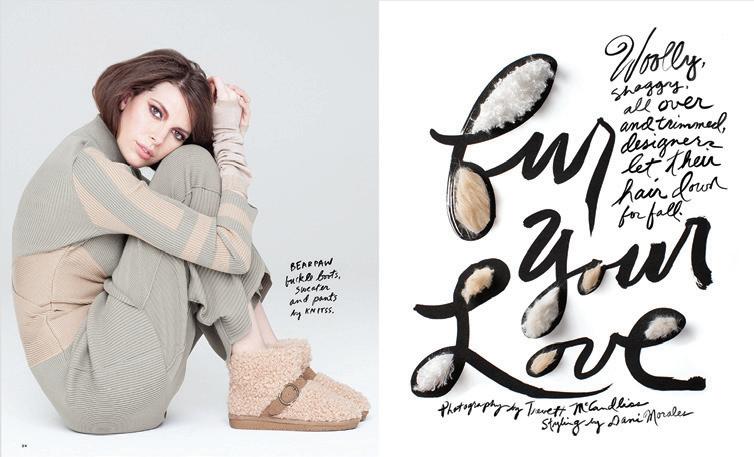
Lights, camera, action! An Oscar-worthy array of Footwear Plus headlines over the past 35 years.


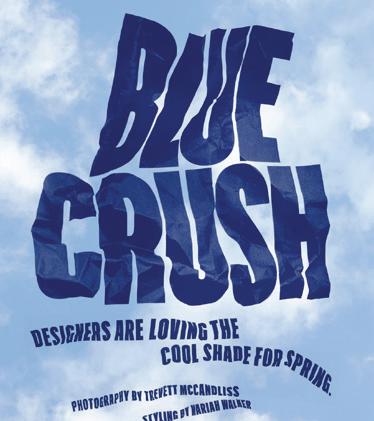

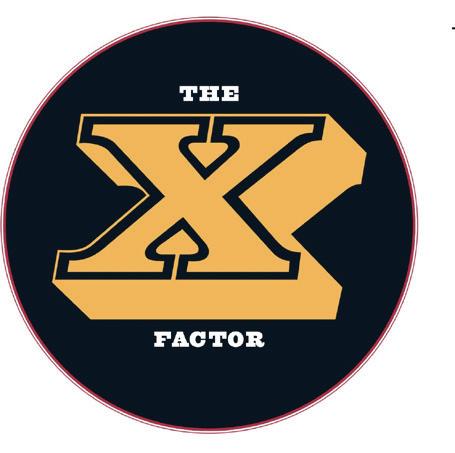
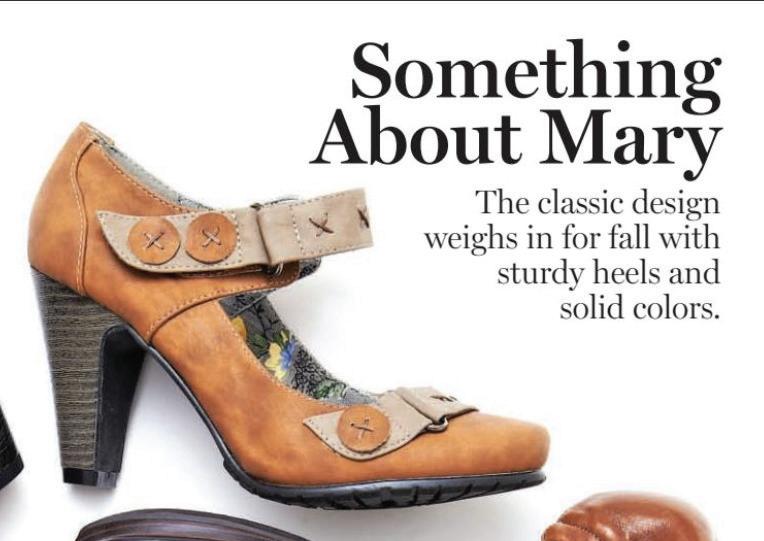





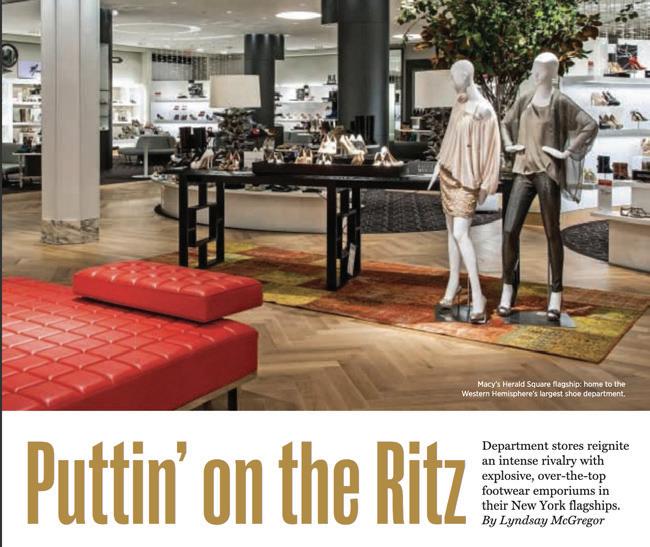

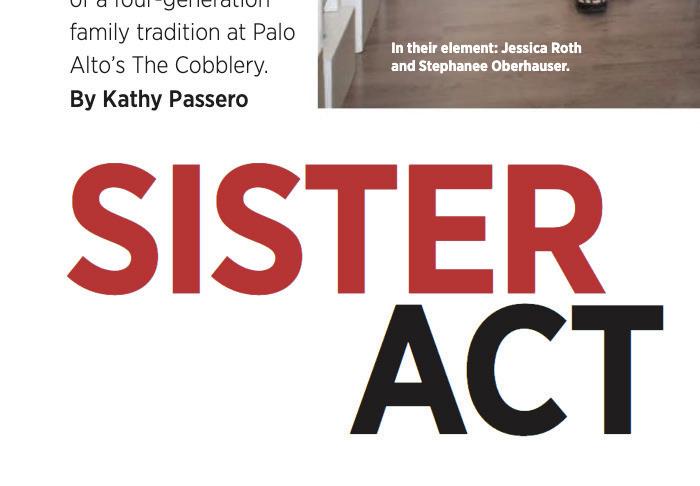




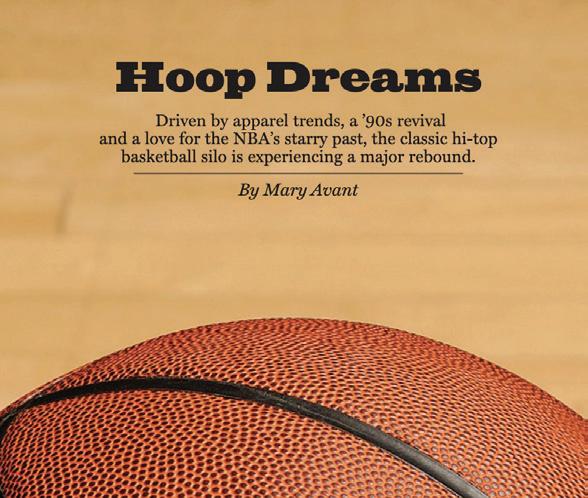


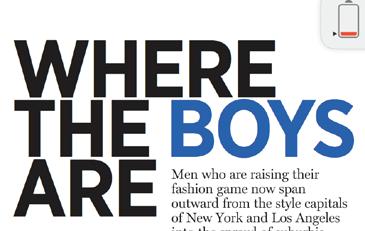
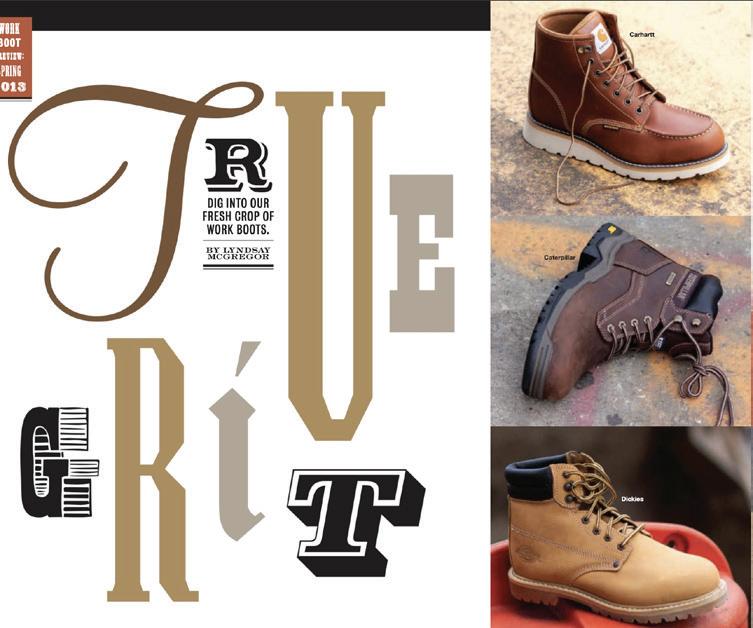
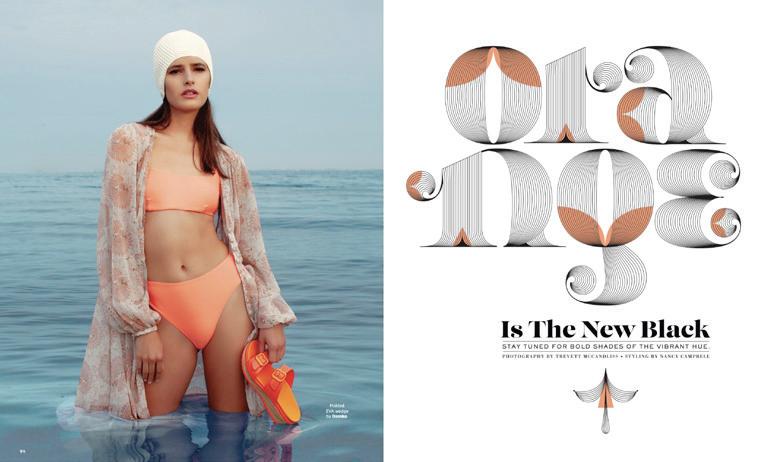
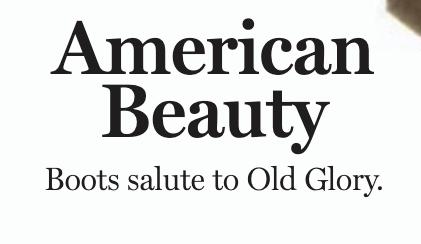




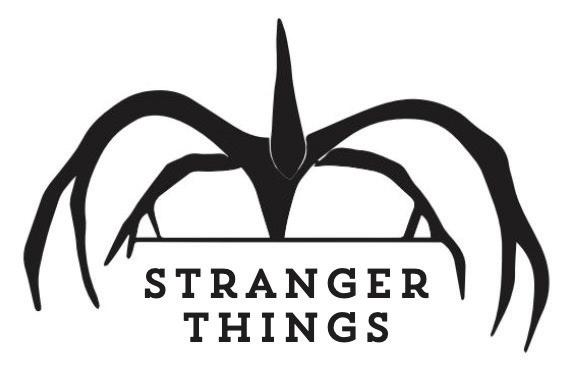
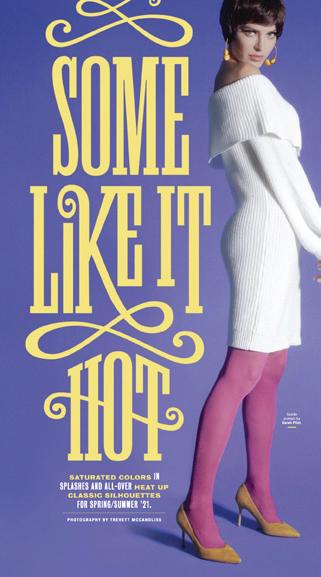






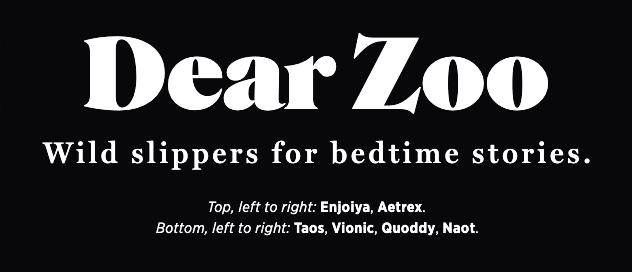

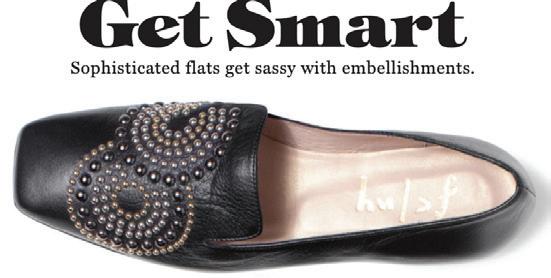

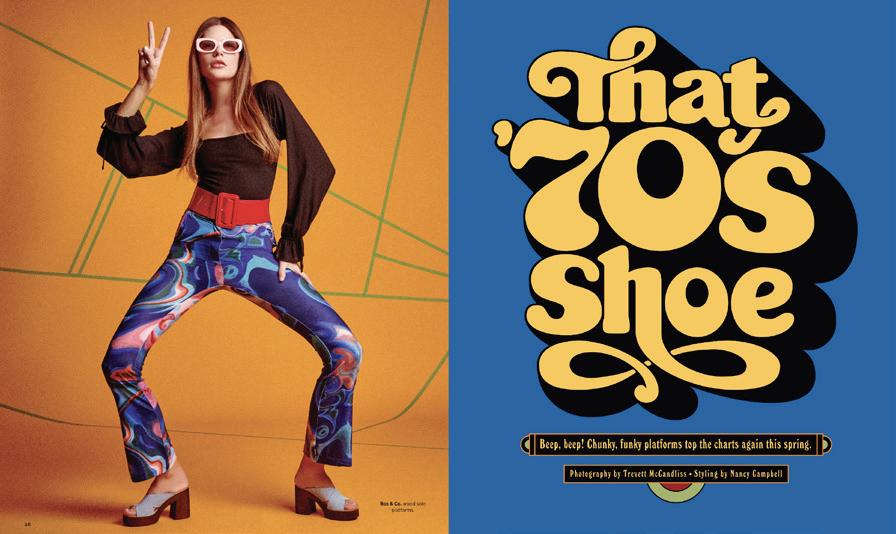
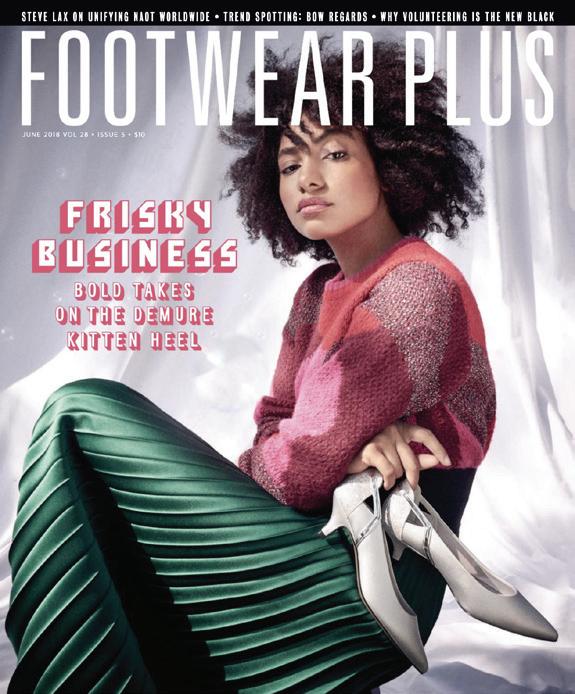

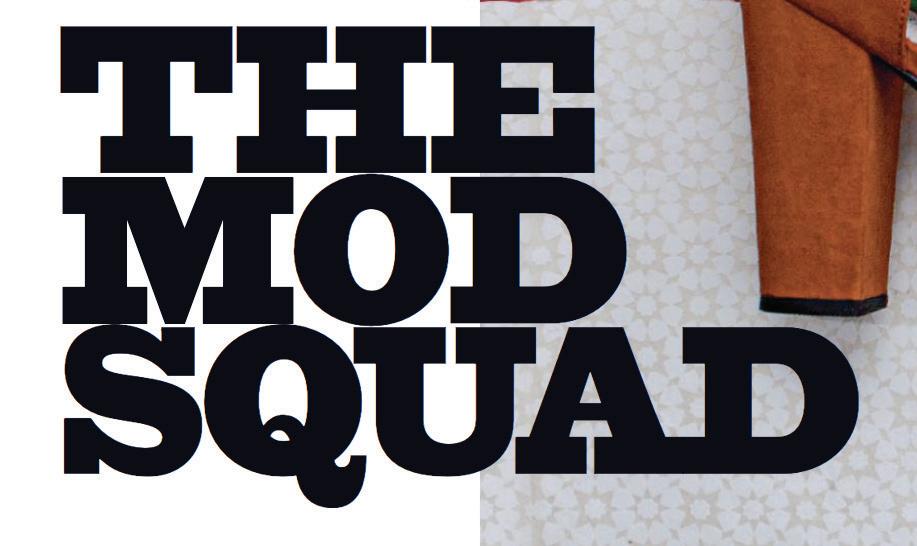
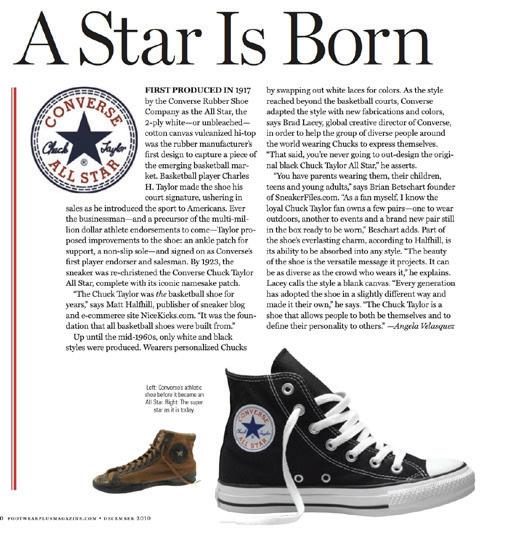
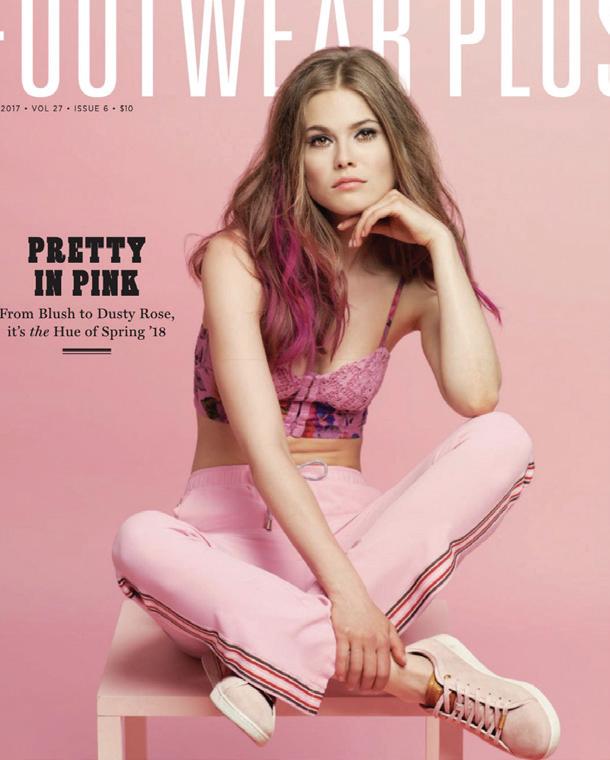
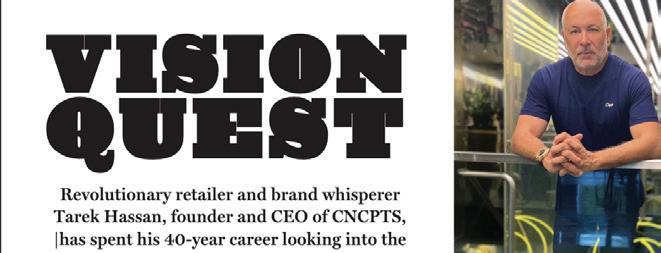
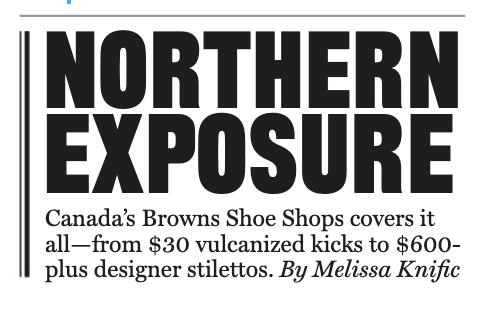
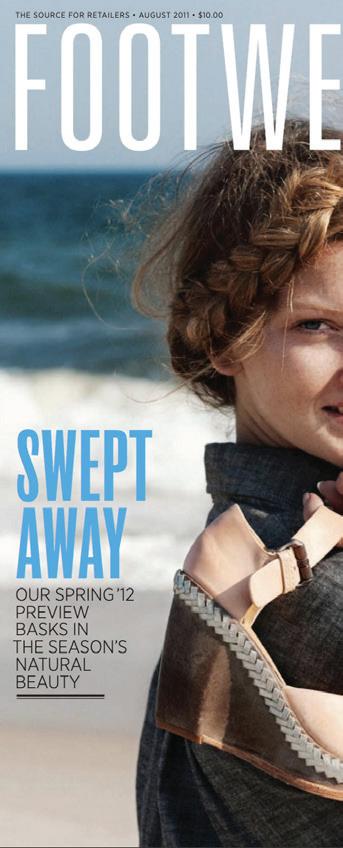
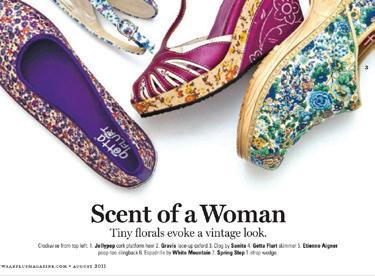
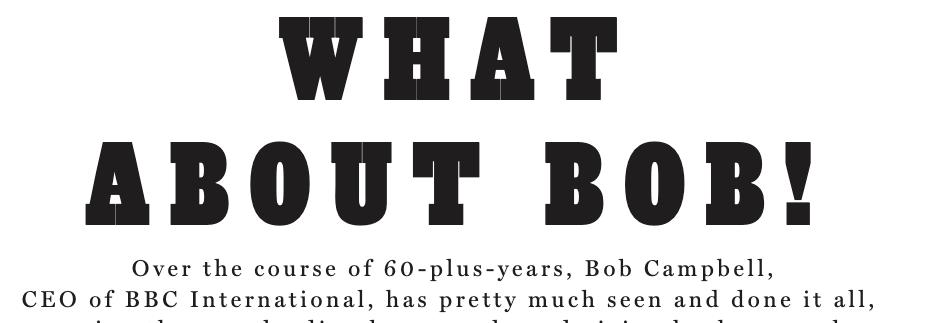



Available In Premium Leathers & Suedes Lightweight & Flexible Removable Leather Insole With Arch Support ARCH S UPPORT
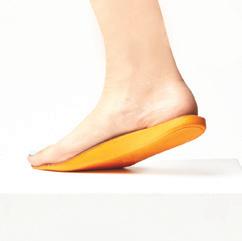

Featuring Aetrex orthotic support and memory foam cushioning for superior comfort